ICONS AND IDOLS: Faith and lies
Recently I read an article about the large portrait of Mao Zedong that hangs over the gate of the Forbidden City. It weighs one and a half tons and is seven by four and a half meters in size.
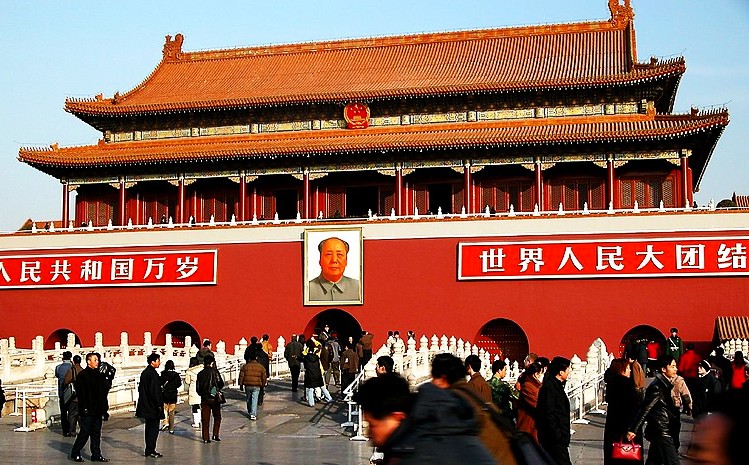
Weather and environmental degradation constantly wear it down, and every year a new portrait is therefore painted. During Mao's lifetime, it was varied, to a certain extent, in harmony with the Leader's changed appearance. The portrait is painted in oil, reinforced with fiberglass and plastic. At least nine times completely new versions of the portrait were painted. Since 1977, Ge Xiaoguang has been painting them.
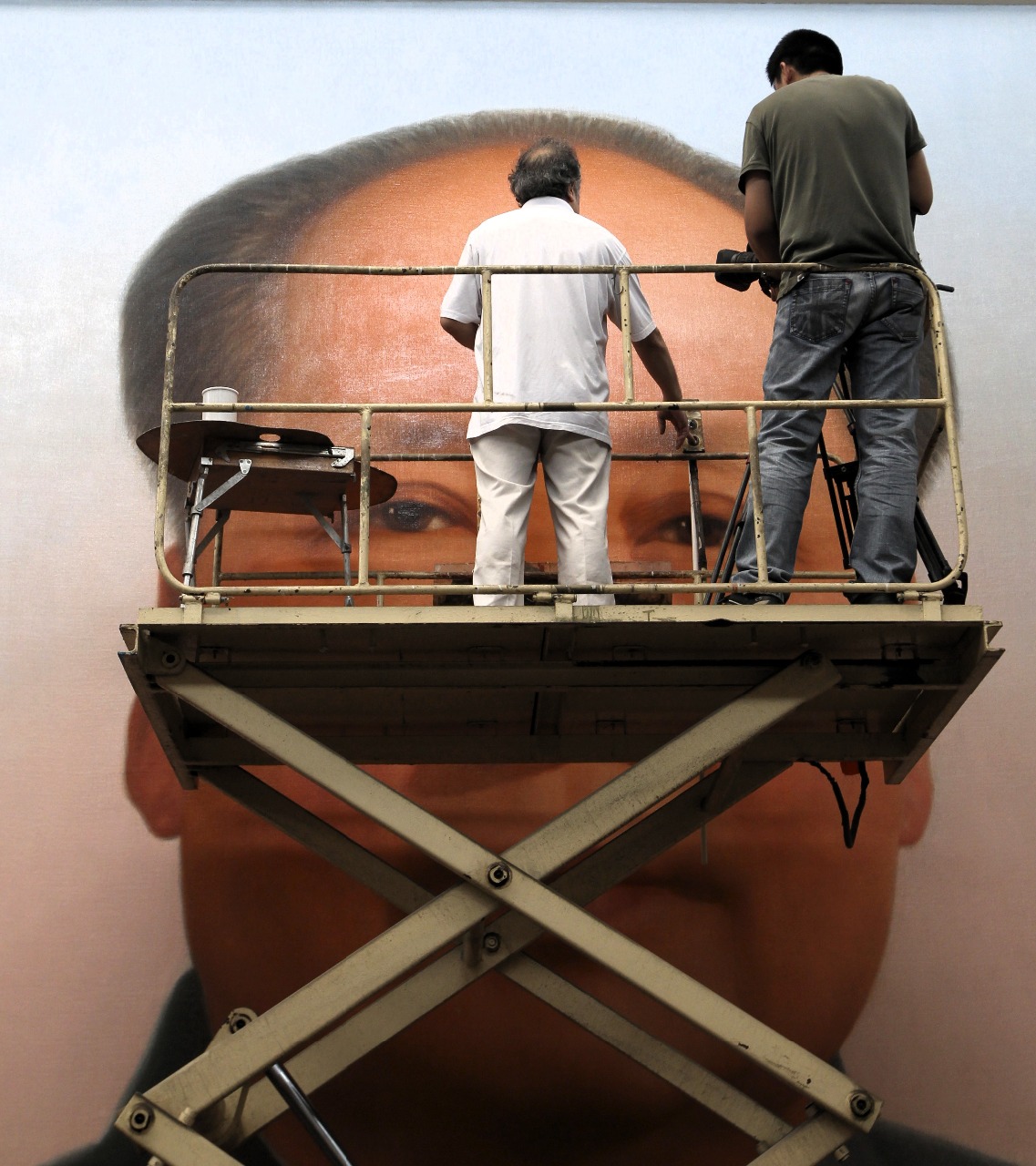
Other artists have been Zhou Lingzhao who created the first portrait in 1949. Xi Mang made a new one in 1950. Zhang Zhenshi was responsible for the versions between 1951 and 1963, followed by Wang Guodong from 1963 to 1976 and finally Ge Xiaoguang.
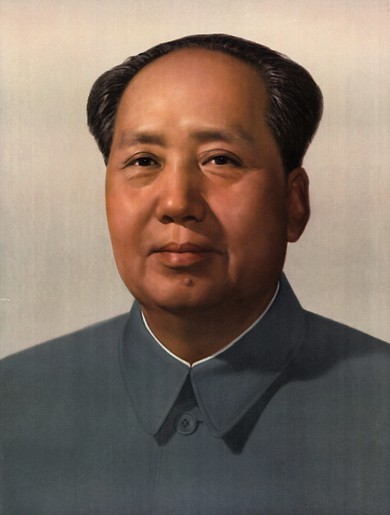
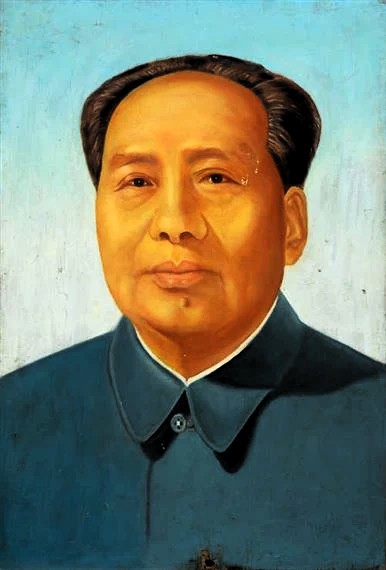
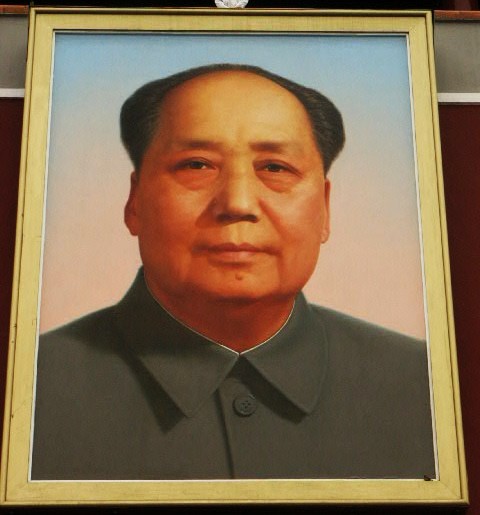
The model for Zhang Zhenshi's portrait, which seems to have been the best, was offered for sale in Berlin in 2006 by the Beijing Huachen Auction Company, which is owned by the Beijing Tourist Board and Centre for Cultural Heritage and Restoration. The estimate was USD 120,000, but the sale was stopped at the last minute by the government of the People's Republic of China and it is now in the National Museum of China.
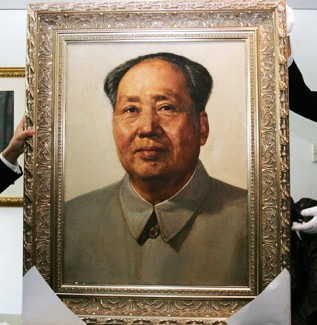
Zhang Zhenshi's portrait was based on a photograph taken by Hou Bo (1924–2017). She and her husband Xu Xiaobing were Mao's "court photographers" for several years and were allowed to make a number of photographs of the Great Helmsman and China's high potentates.
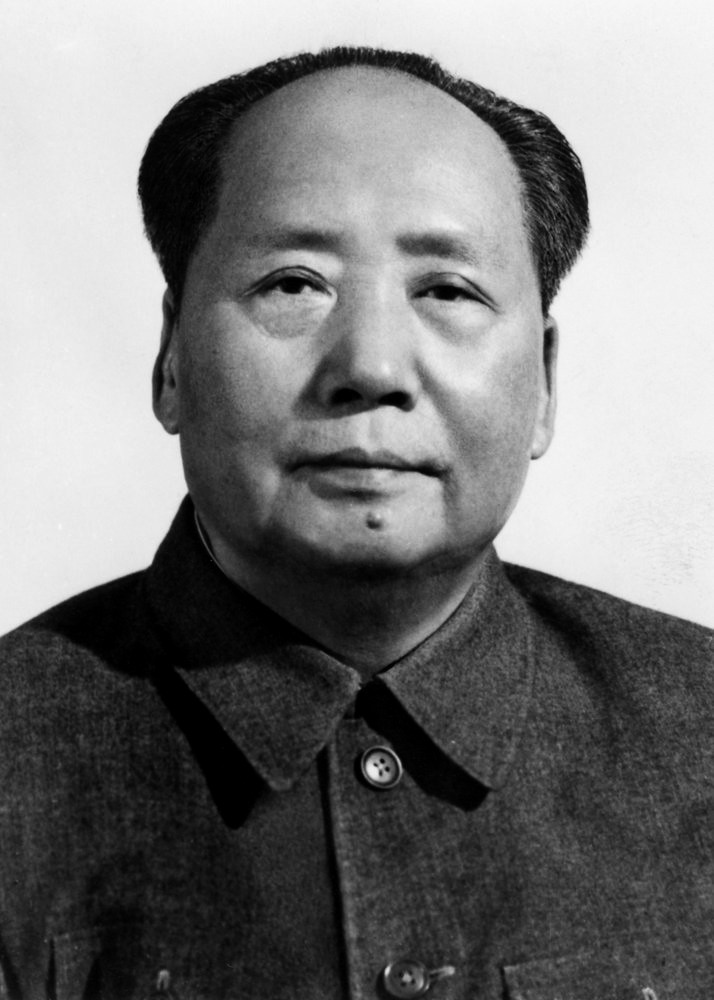
The couple stayed at Mao's summer residence in the Fragrant Hills National Park and socialized in Mao's closest circle. Several of Hou Bo's photographs were transformed into the typically meticulous super-realistic paintings that were distributed in millions of editions throughout China.
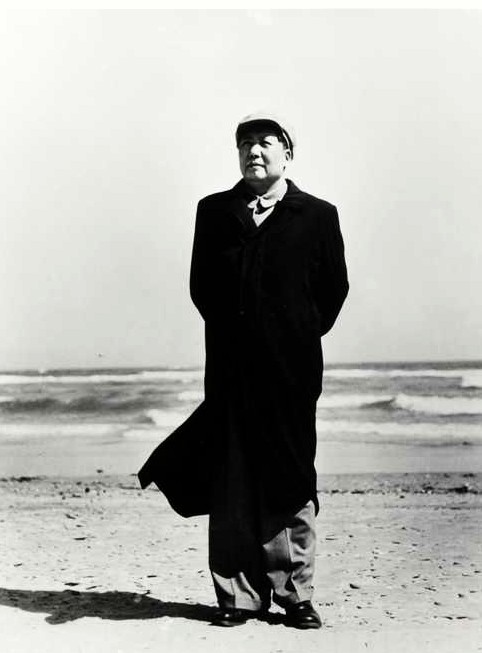
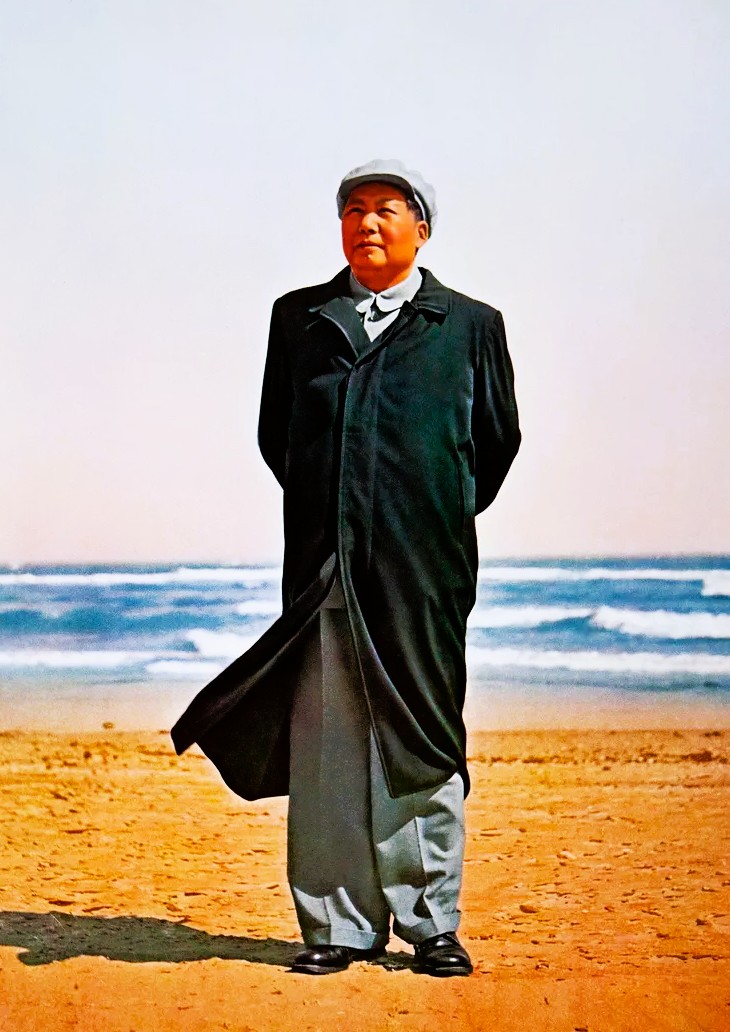
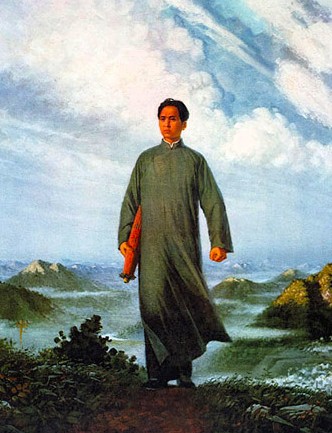
Hou Bo also took photographs at official events, and her documentation of the proclamation of the founding of the People's Republic of China has become classic.
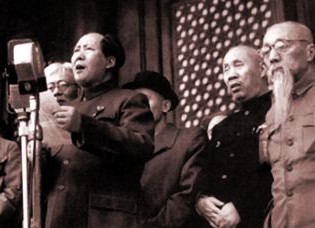
Before Chairman Mao's portrait adorned the gate of the Forbidden City, it had likewise exhibited other large portraits. First of Sun Yat-sen, who from the gate had proclaimed the Chinese Republic in 1911, and when Chiang Kai-shek after Sun Yat-sen in 1928 became president of the State Council, China's government, his portrait ended up above the gate entrance. After Chiang Kai-shek's flight to Taiwan, Mao's face has been the permanent ornament since 1949.
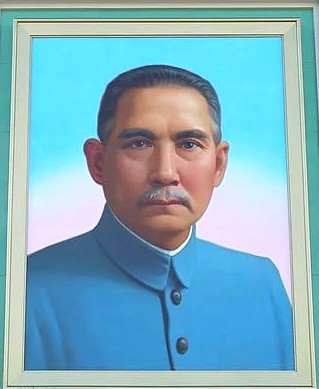
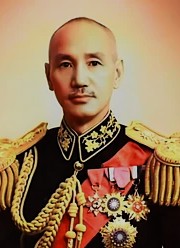
Tiananmen Square – in Chinese Tiān'ānmén Guǎngchǎng, The Square by the Gate of Heavenly Peace – became the absolute focal point of the cult of Mao during the Cultural Revolution (1966-1976) and culminated when the Great Leader's millions of fanatical youth gathered at mass meetings, waving Mao's Little Red and chanting slogans in honor of the great man. On one such occasion my friend Sagrada from the Dominican Republic was present and she has told me how Mao, far up there in the gallery above his portrait, took one of those close to him by the hand and how this handshake went from one to the other throughout the square. A transmission of divine power not unlike the idea behind the "apostolic cession" of the Christian Church.
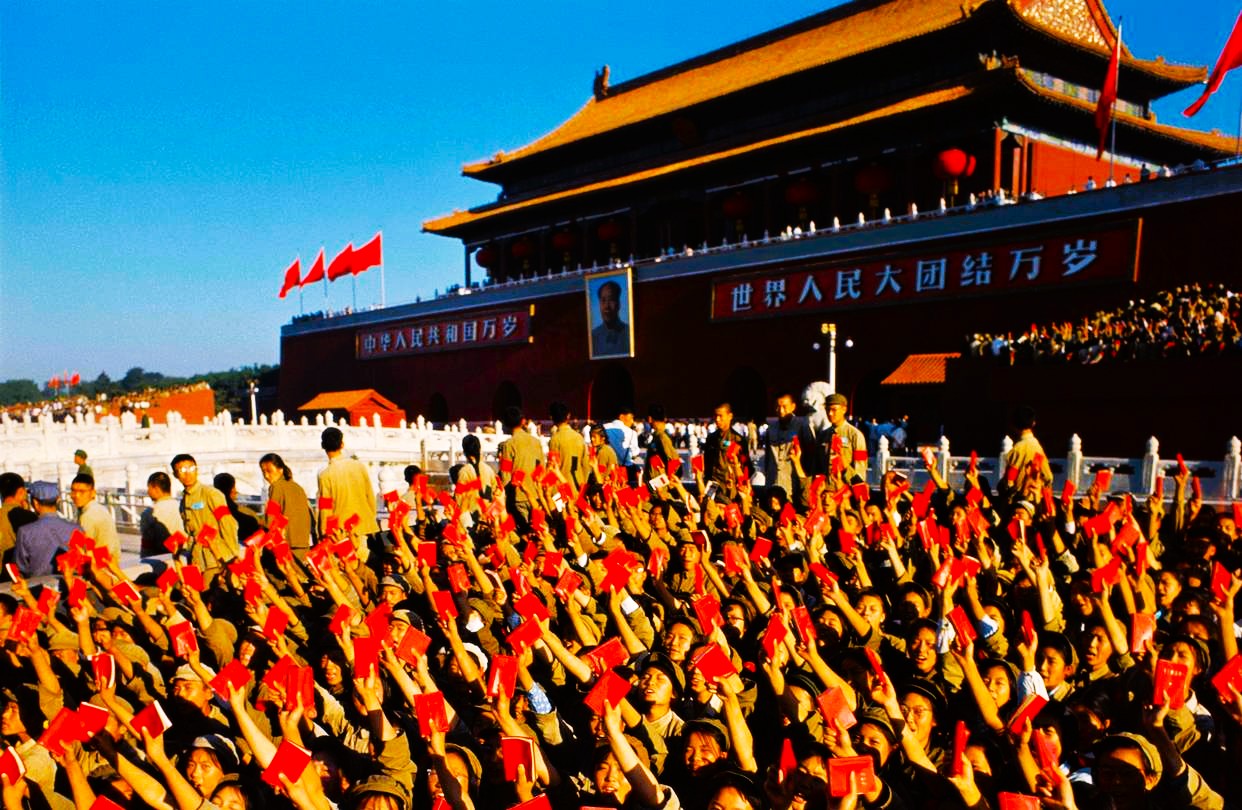
Mao's image was revered as if it was a sacred icon. The creator of one of the giant portraits that adorn the gates of the Forbidden City, Zhang Zhenshi, has told in an interview how he got into trouble during the Cultural Revolution after a “student cadre” accused him of distorting his portraits of the Great Helmsman by having in his representations diminished the venerable countenance of the Leader, as he had represented him in such a way that only one ear was visible. This has been remedied on later colossal portraits, but not on the yuan banknotes adorned with Mao's face.
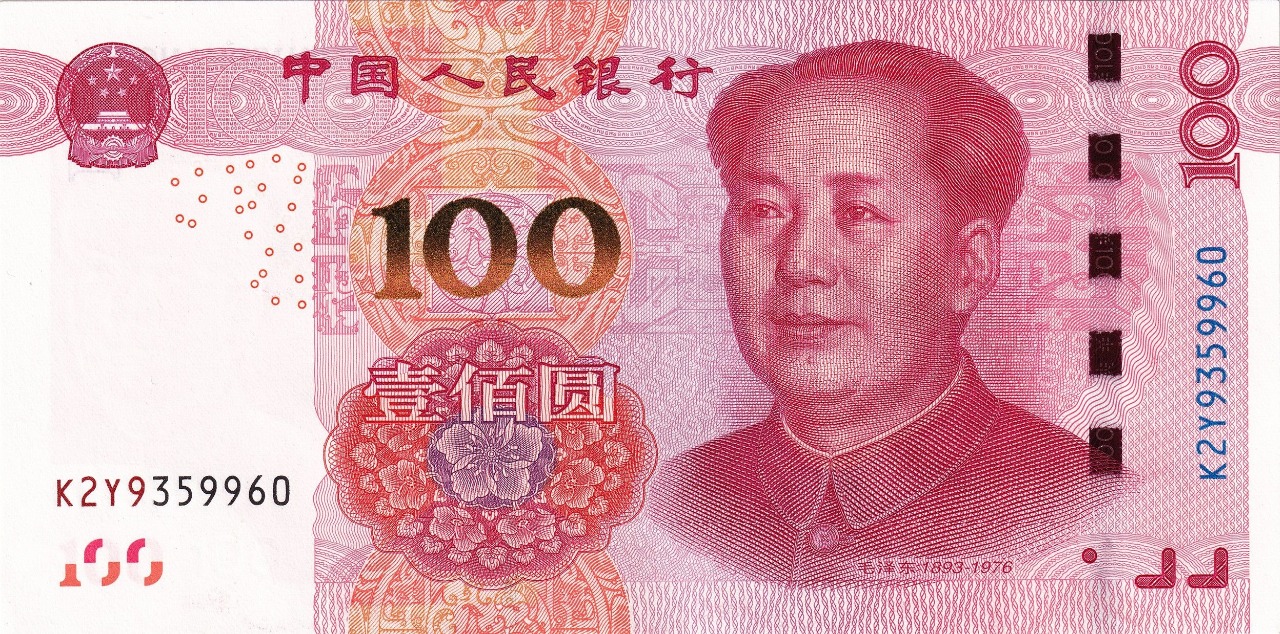
During my youth, even in the remote Lund, there were those who dressed in Mao overalls and proudly wore a small button icon bearing a picture of Chairman Mao, just as American politicians now have to carry a flag pin.
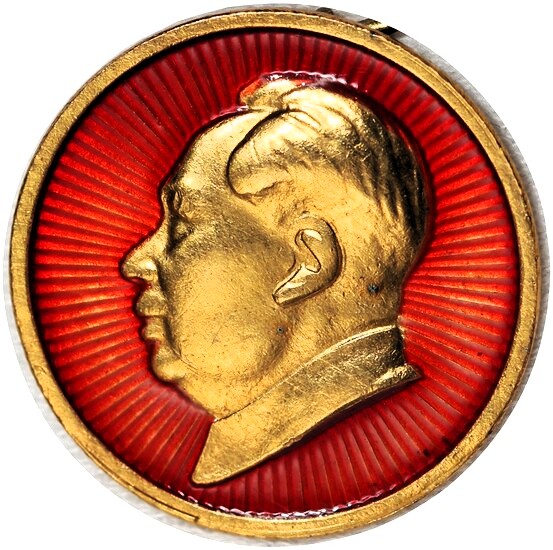
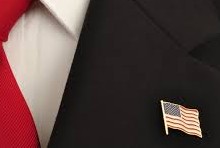
During the numerous demonstrations of that time, it was also common to carry placards with Chairman Mao's face. Often in the appearance of Zhang Zhenshi's legendary portraits
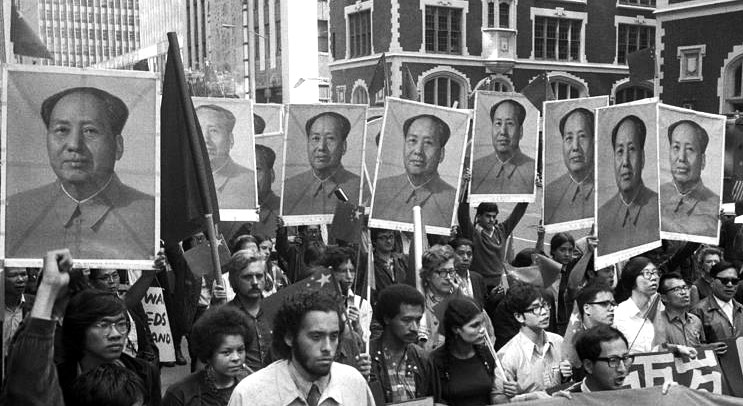
The controversial and anarchist Swedish artist Lars Hillersberg made in the ruthless magazine Puss fun of this personality cult and presented an illustration where a crowd carry portrait of unknown citizens.
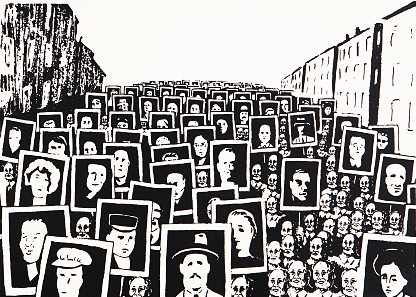
Tiananmen Square also became the scene of an iconic performance by an unknown person who has remained famous. Between April 15 and June 4, 1989, extensive student demonstrations were held in the square and its surroundings. The participants demonstrated against corruption within the ruling Communist Party and demanded greater democratic and human rights. The protests were finally put down with ruthless violence. According to official sources, a few hundred people were killed, but unofficial figures point to up to 3000 casualties.
On June 5, after “securing” the square, the military began to regain control of the city's thoroughfares. A column of tanks from the 1st Armoured Division left the square, but in the easterly direction, on the Chang'an Avenue, the advance was prevented by a lone protester who had placed himself in the middle of the street. The brief stalemate between the man and the tanks was captured by Western journalists, who witnessed it from the roof terrace of the Beijing Hôtel. Who the Tank Man was and what happened to him has remained unknown, but Time magazine named him one of the last century's 100 Most Influential People and the unknown man has become a symbol of personal courage in the face of oppressive regimes. In other words – an icon of freedom.
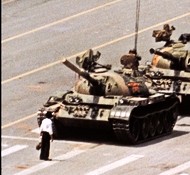
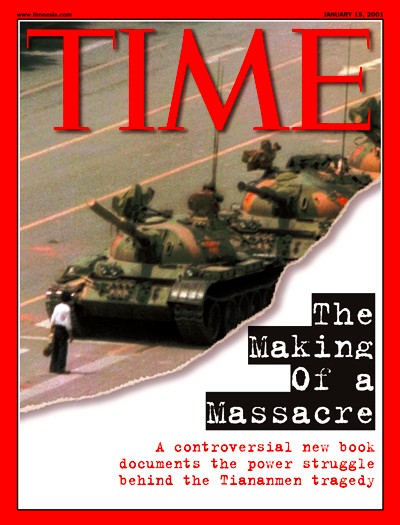
From the archives: Tiananmen Square's "Tank Man"
But... What exactly is an icon? The Greek word simply means “image”, or ”likeness”, but the word early came to denote images of venerable, influential people, or representations that honoured deceased loved ones, such as the famous mummy portraits from the Faiyum Oasis, which in Antiquity housed a large Greek-speaking population, in addition to the native Egyptians.
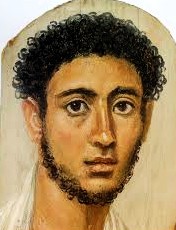
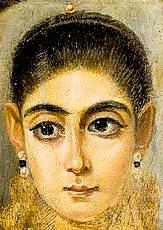
While talking about icon painting, it has primarily come to denote an art form that finds its roots in Christian paintings of the fourth century, especially those in the catacombs of Rome.
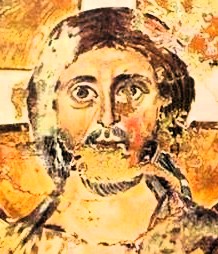
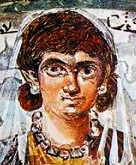
From an early age, however, there was fierce Christian opposition to depictions. The early Christian church was closely linked to Judaism and its commandments and ordinances were generally followed, not least the prohibition in Exodus (20:4-5):
You shall not make for yourself an image in the form of anything in heaven above or on the earth beneath or in the waters below. You shall not bow down to them or worship them; for I, the Lord your God, am a jealous God, punishing the children for the sin of the parents to the third and fourth generation of those who hate me.
Thus, one could not make angels, humans, or animals objects of worship, such acts could only be addressed to God. Nor were attempts to depict, or even imagining, the figure of God acceptable, because his appearance was far beyond human form and imagination.
However, the ancient world where Christianity was taking root and came to thrive was a world where visual art was everywhere. Within such an overwhelming and refined visual environment, a ban on images could not be maintained for any length of time. Soon icons, i.e. images, became abundant even within the Christian cult.
Below is the first known representation of Christ Pantokrator, Christ the Almighty, i.e. Jesus as the incarnate Deity. The icon dates from the 500s and is preserved in the legendary St. Catherine's Monastery at the foot of Mount Sinai. The picture is one of the monastery's more than 2000 icons, created from the 500s and into modern times.
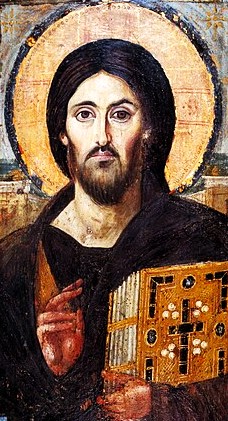
Within the Christian church, the idea that one could depict Christ, God and the saints has gradually prevailed and become dominant. The argument was that all these figures divine characters were enclosed by human bodies. Had not God created man in His image? And God had through Jesus Christ become man, with a body that could be perceived with the human senses, thus could also the bodily manifestations of God and Jesus be depicted. Furthermore, the Old Testament’s prohibition had been applied before God through Jesus had revealed himself in a bodily form.
The tricky question of pictorial representation had been worn and soaked by Christian potentates during the Second Council of Nicaea, 787. This Council took place while the “Byzantine iconoclasm” was raging in full swing. Fanatics smashed ancient and Christian sculptures alike, while frescoes were painted over and icons burned, and artists were beaten.
![]()
![]()
The Council decided that icons and other images of the divine certainly had a significant function in the Christian cult. For believers who could not read they had an educational function, since visual arts created an understanding of the Christian doctrine of salvation and the meaning of the biblical stories.
The contemplation of images could also fill the viewer with a sense of meditative devotion created through their inherent prokinesis, i.e. images were considered as gestures/signs of respect for the divine and thus they could produce a profound receptivity to the Christian message, they even convey messages that could not be expressed in words. However, the fact that images are depictions and thus based on relationships, but they possess only “relative qualities”. They are not divine in themselves. Images lack latreia “absolute qualities,” i.e. the same nature as the divine. Thus, icons could absolutely not be objects of any worship. This was an abomination – idolatry. The difference between an icon and an idol is that the icon only alludes to the presence of the divine, while an idol is a deity in itself.
The best equivalent of the Christian concept of idol is probably the murti of Hinduism, in the sense that an image itself can include a divine “soul”, a murta. The image thus constitutes an “embodiment” of a spiritual dimension/concept, the basic meaning of the word murti.
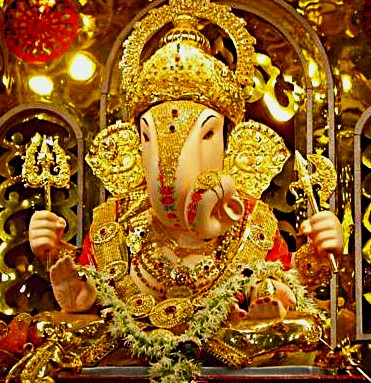
Hatred of Christian art did not subside with the Second Nicene Meeting. Image-storming fanatics continued to appear from time to time and in various contexts. When the religious wars between Catholics and Protestants paralyzed Europe in the fifteenth century, a Protestant mob could occasionally in violent rage attack church art, maim sculptures and destroy paintings.
![]()
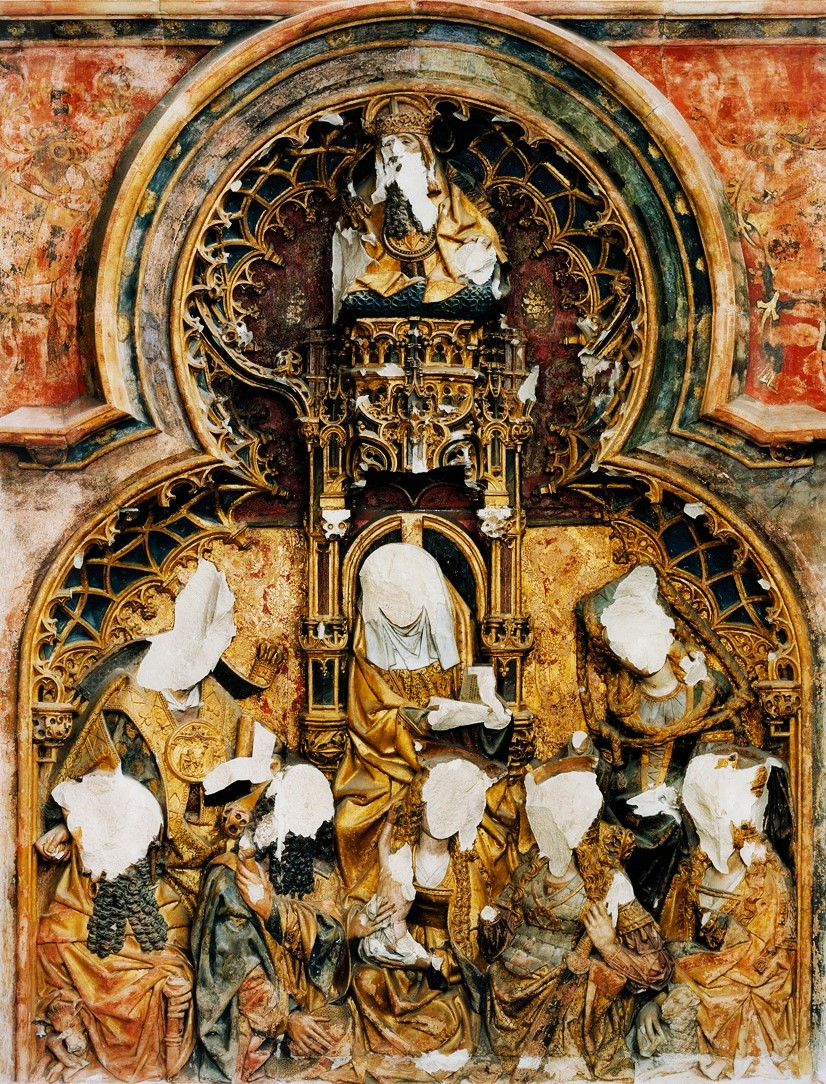
Under other conditions, French revolutionaries in the late eighteenth century destroyed not only the statues and symbols of the monarchy, but also raged against ecclesiastical power and destroyed Christian art. Churches were burned down and sculptures hacked to pieces.
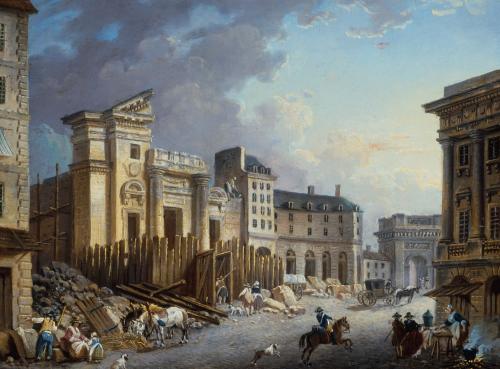
Revolutionaries have sometimes harboured an implacable hatred towards Church power. During civil wars in Mexico and Spain, where conservative forces within the Church often joined the Central Power, several priests and monks were executed by revolutionaries, while churches were looted. Below, a priest is being executed in México, while mummified nuns from a Carmelite monastery are being exposed in Barcelona in 1936.
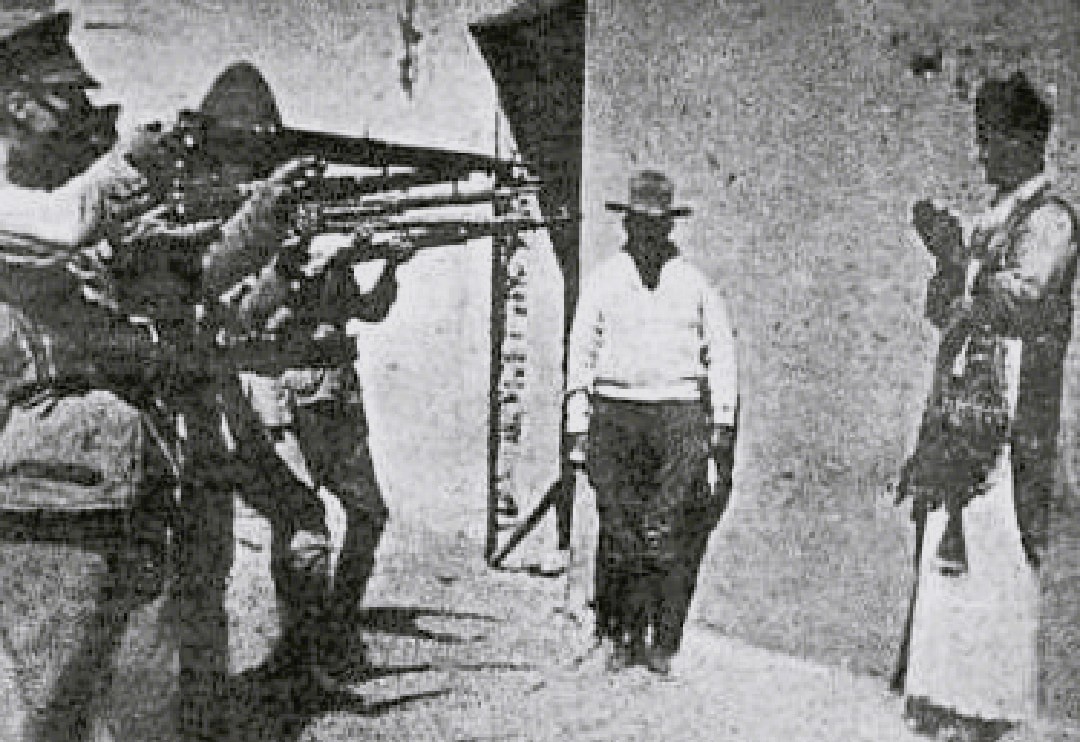
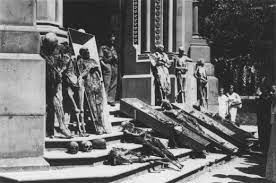
Seldom, however, has the persecution of religion and destruction of its art treasures reached such dimensions as it did in the Soviet Union in the twenties and thirties, where contempt for religion was openly sanctioned by the state power.
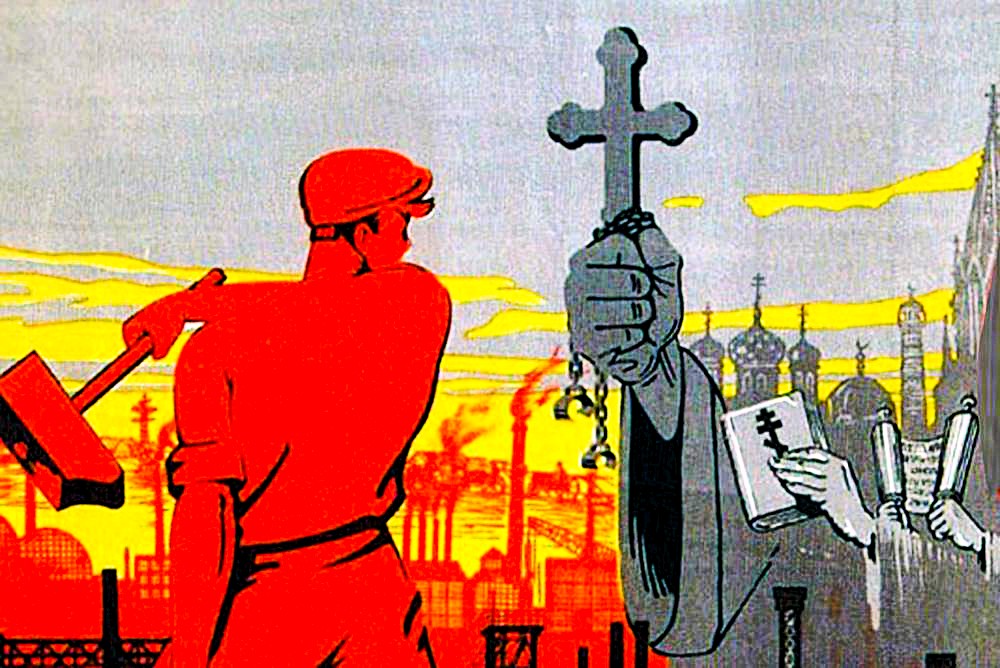
Churches and icons were destroyed. Most notable was the explosion of Moscow's cathedral, Christ the Savior, which was demolished on Stalin's orders on December 5, 1931.
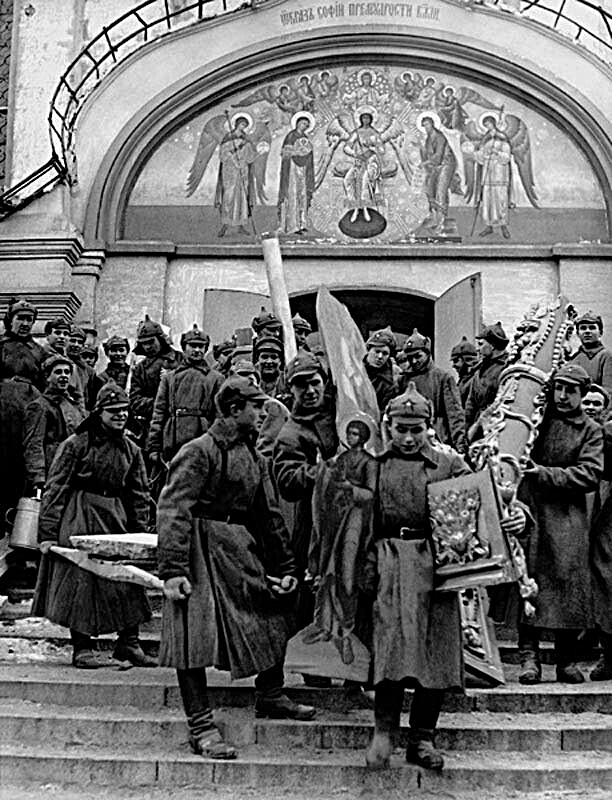
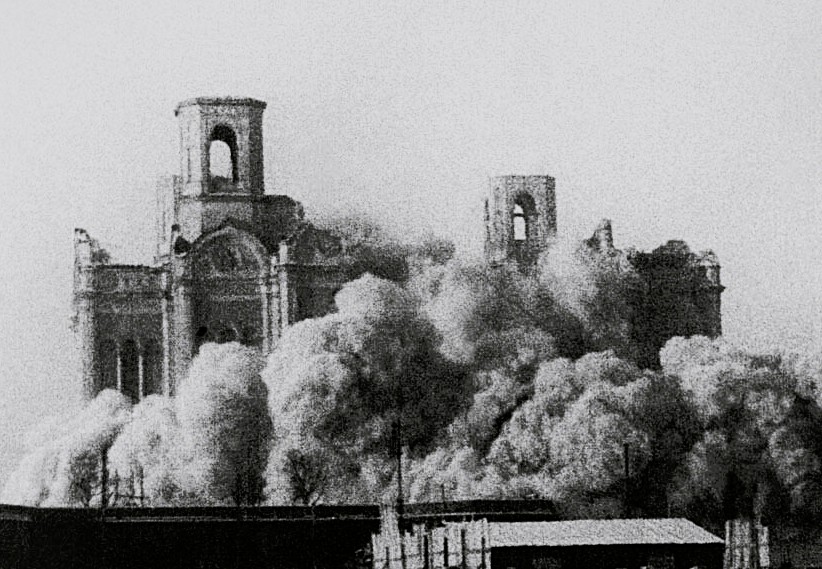
The intention was that the cathedral would be replaced by a huge Palace of the Soviets, crowned by a monumental statue depicting Lenin, as usual with an outstretched right hand.
However, the Second World War put an end to the large-scale project and the site of the destroyed cathedral did instead become the world's largest swimming pool.

After the fall of communism, the Cathedral of Christ the Savior was rebuilt and resurrected in 2000, in all its magnificent grandeur.
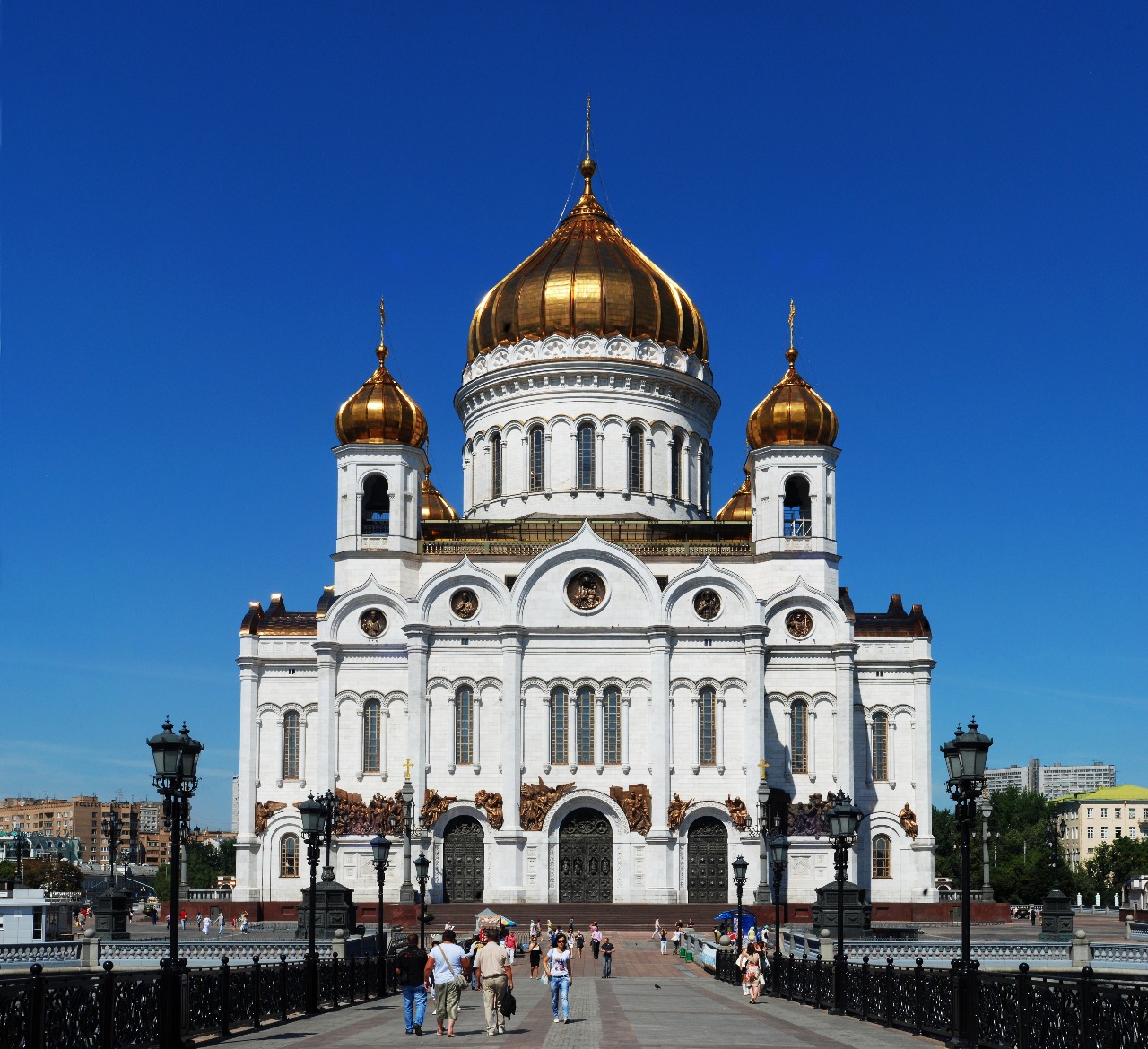
However, the destruction of religious buildings, works of art and other symbols in countries such as the Soviet Union and China did not mean the end of the erection of monumental works of art, although these no longer paid homage to saints and other deceased sacred or extraterrestrial religious entities. The centre of worship instead became earthly saintly figures, living and dead. Stalin filled the Soviet Union with pictures and sculptures of himself and the Lenin he officially adored.
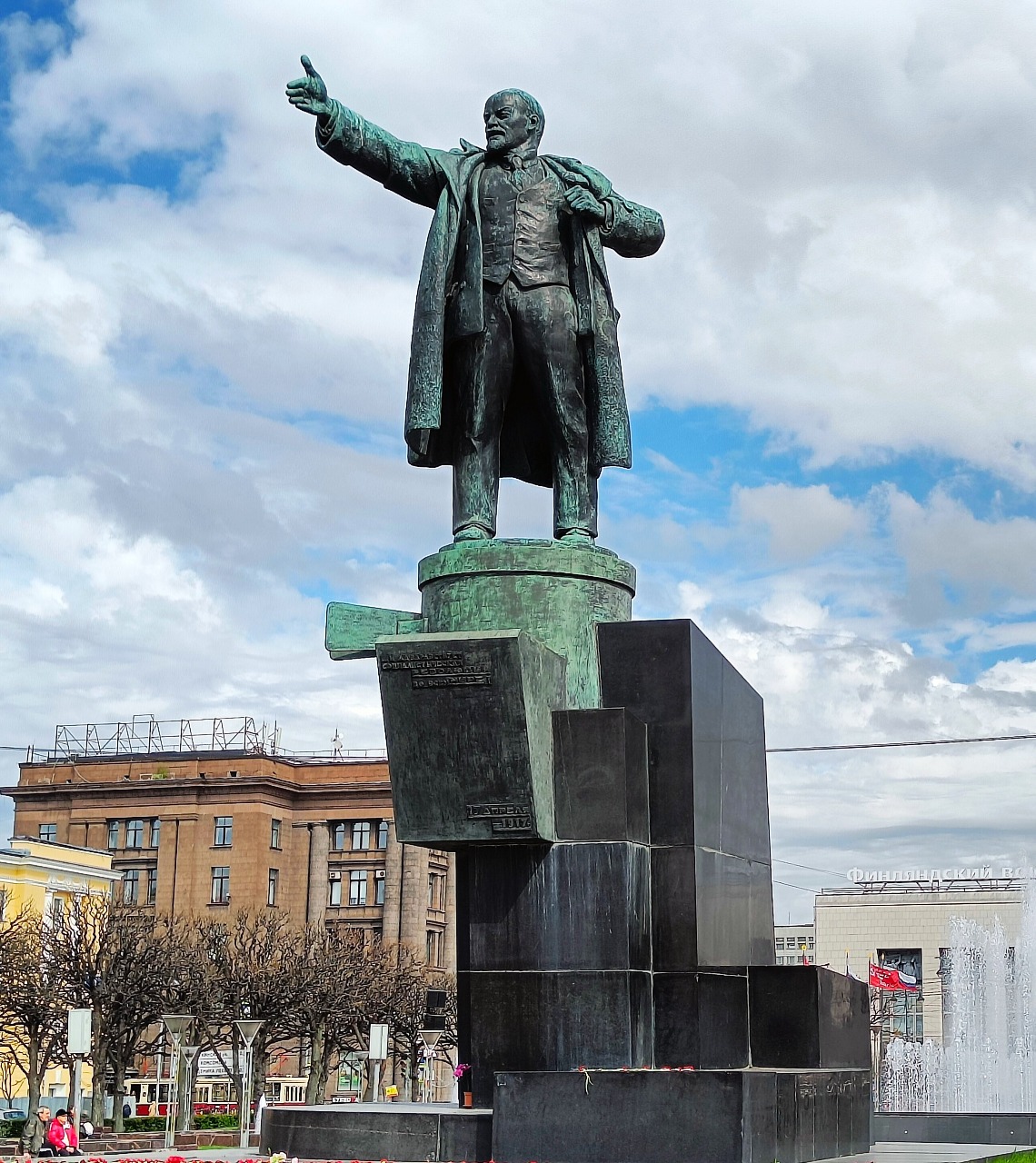
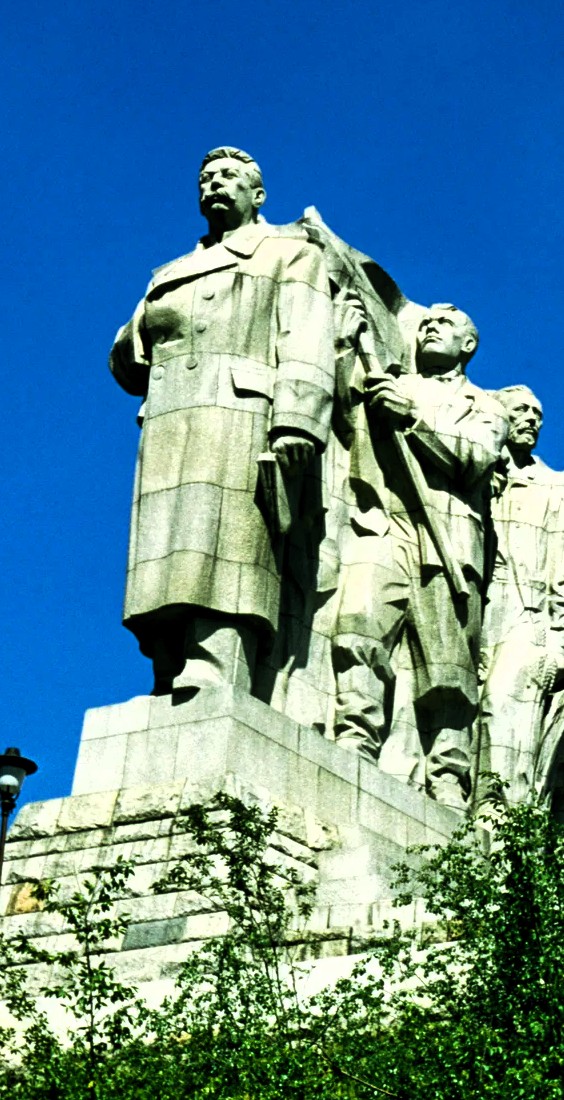
While Lenin was generally depicted with his right arm raised in a gesture aiming at a glorious future, Stalin statues mostly depicted the Leader with his right arm lowered, or with his hand, in a Napoleonic manner, tucked under his coat lining.
This was probably because Stalin had a complex for his crooked right arm. He was seriously injured at the age of twelve when his arm was squeezed under a horse-drawn carriage. An extensive operation had caused the arm to become shorter and stiff at the elbow.
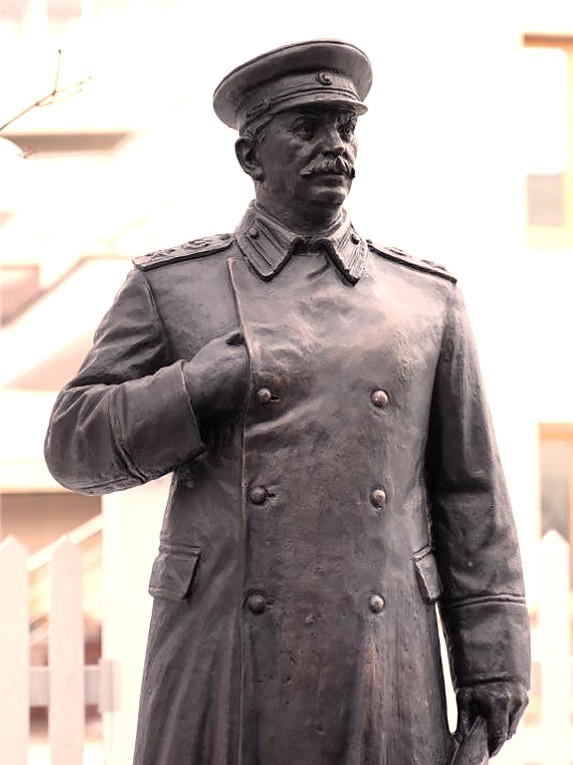
The Lenin statues, however, persisted with their outstretched right arm. Something he exiled Russian artists Komar and Melamid amused themselves with when they depicted Lenin visiting New York for a The New Yorker cover, showing how the Soviet leader hails a taxi in front of a McDonald's restaurant.
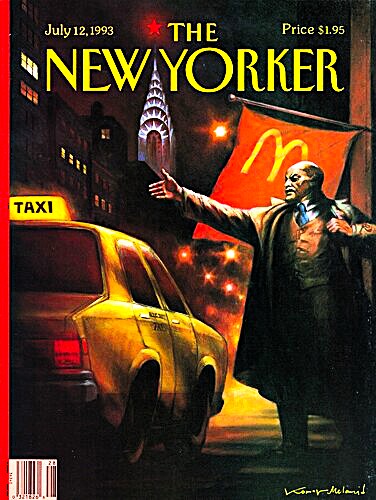
The grotesque idolization of leaders such as Lenin, Stalin and Mao has not prevented their successors from imitating such deification in their lifetimes, allowing themselves to be portrayed through icons and sculptures.
Like Kazakhstan's dictator Nursultan Nazarbayev, who after being vigorously supported by Putin was forced to resign in 2022:
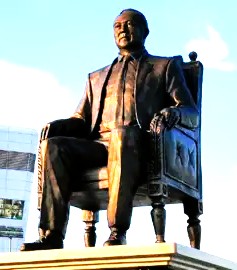
However, his successor Kassym-Jomart Tokayev has already been honoured with a statue in neighbouring Kyrgyzstan, where he sits talking with its president Sadyr Japarov, who took office in 2021.
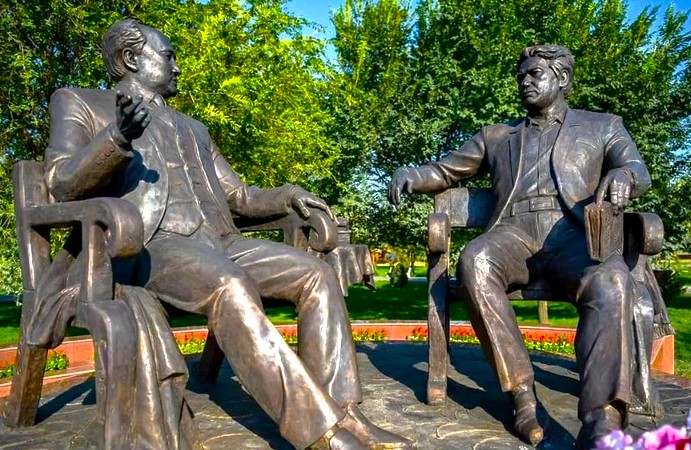
Sadyr Japarov has already found an opportunity to erect a statue of his friend and master Vladimir Putin:
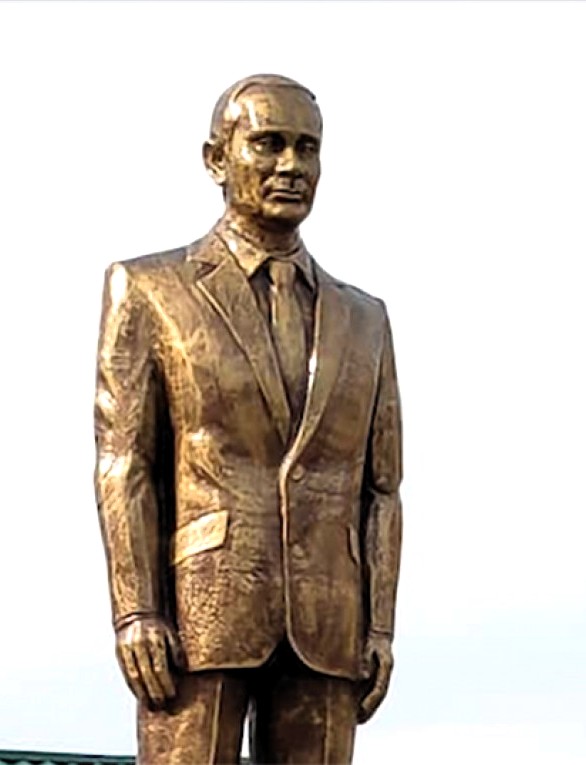
In Kyrgyzstan and Kazakhstan, the idols sit in chairs, but in Turkmenistan Gurbanguly Berdymukhamedov is a bit sharper and has allowed himself to be depicted on horseback, covered in gold and placed on a high, shining white and artificial mountain.
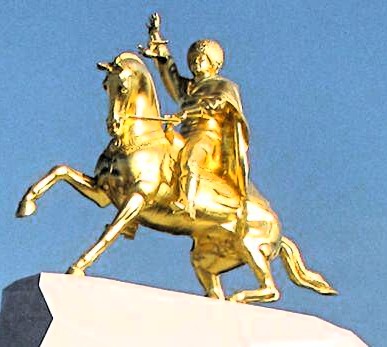
This sculpture is even larger than the statue of Berdymukhamedov's predecessor, Turkmenbashi. His statue is also was gold-plated and placed high up on a solid pillar.
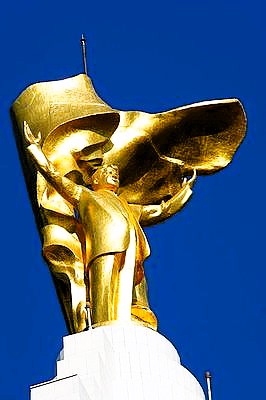
I do not know if North Korea's current dictator Kim Jong-un has yet had a statue erected in honour of himself, but the country has countless statues of his grandfather Kim Il-sung (by whom we recognize Lenin's gesture) and Kim Jong-un’s father Kim Jong-il. The largest statues are more than twenty meters high and surrounded by grotesque rites.
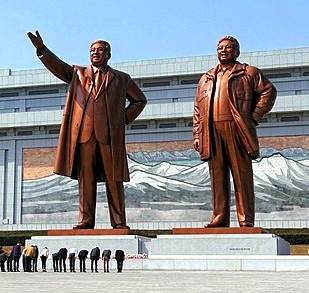
I wonder what it is that drives these grotesque dictators to erect sculptures of themselves and force their subjects into a bizarre worship of their inflated egos.
A ridiculously self-absorbed, self-enriching and unusually bloodthirsty dictator was Rafael Leonidas Trujillo, who in the Dominican Republic had the capital and the country's highest mountain named after himself and during his own lifetime filled the country with his busts and statues. Every Dominican home was required to have a plaque stating that Trujillo was its protector and master.
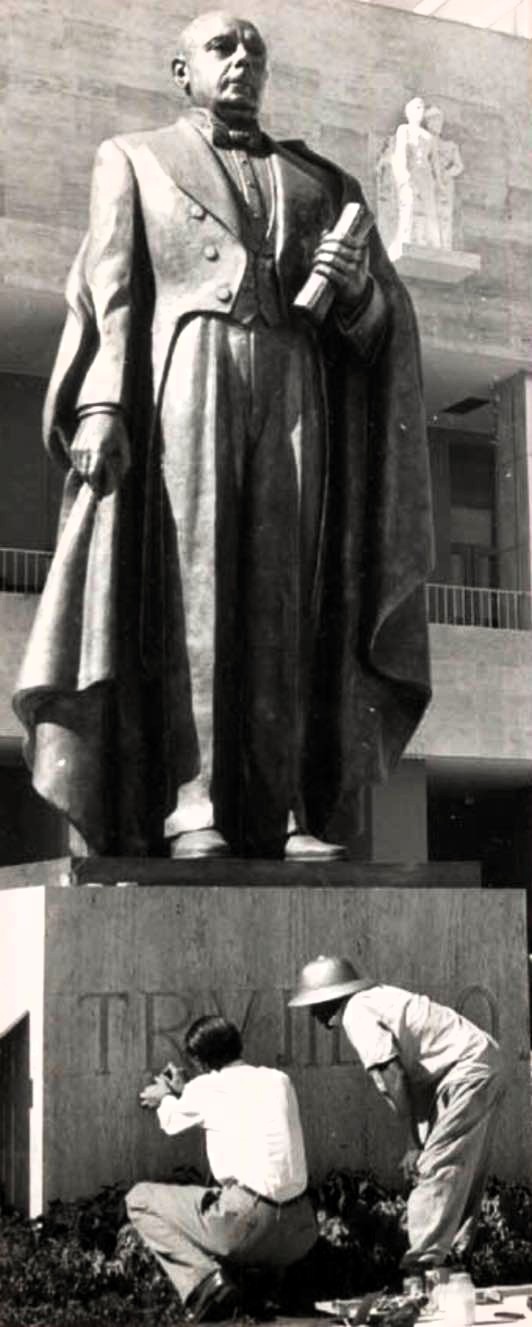
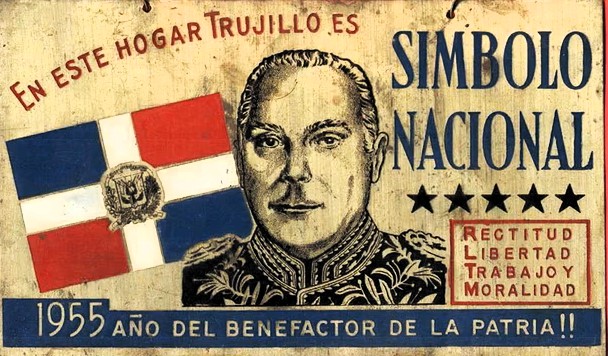
Is this ever-present dictatorial madness a way of convincing citizens that they are constantly watched, constantly controlled, like the all-seeing Big Brother in Orwell's eerie 1984?

Something that is not really an illusion since several of these dictators have had and still have an effective secret police, prepared to be of service to them with murder, torture and other forms of terror.
Hitler was supported by his murderous and powerful Gestapo, Stalin by the KGB and the large number of smaller autocrats have also had/have their murderous henchmen. China has its Ministry of State Security, Kazakhstan KNB, Turkmenistan MNB, Saudi Arabia Mabahith, Venezuela SEBIN, Sudan NISS, Russia FSB, just to name a few of the most well-known and ruthless secret organizations. In Iran we find VAJA, which under various names replaced the Shah's SAVAK. The Iranian Shah Mohammad Reza Pahlavi was also a strange autocrat who loved to steer himself out in borrowed feathers and pose for iconographic portraits, such as one by the famous Italian master Pietro Annigoni.
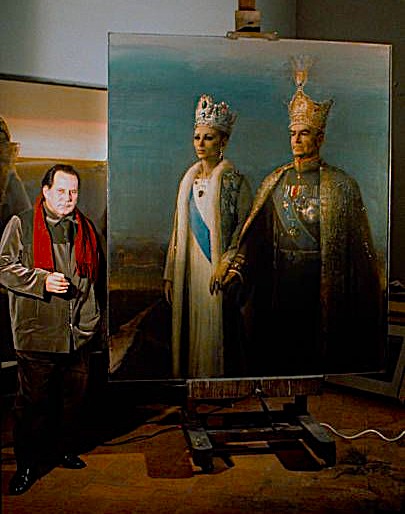
Perhaps it is just a matter of making an impression on the world and guaranteeing one's legacy. Through an image, an icon, they try to transform themselves into idols. They want to transmute themselves as if they were a divine presence—saints deserving worship of their subjects. A saint is more than an image; it is an ideal. Take Mother Teresa, who in many people's minds has become identical with selfless self-sacrifice, a symbol of goodness. Is she worthy of all this worship?
In a certain sense – Yes. Her Orden is now active in 610 locations in 123 countries, with nursing homes and hospices for people with HIV/AIDS, leprosy and tuberculosis. Her nuns provide family counselling, run orphanages and schools. The small, wrinkle-faced lady with her friendly smile became identical with a self-sacrificing, fervently Christian kindness.
But the little woman sank in my esteem when, during my time in the Dominican Republic, I saw her embrace the Haitian dictator Baby Doc and his wife, millionaire Michèle Bennett Pasquet, this in America's poorest country, where people lived in fear under the Duvalier regime's dreaded secret police, the notorious Tonton Macoutes.
Mother Teresa paid tribute to the nasty governing couple for their generous contributions to her activities and paid tribute to the beautiful witch Michèle with the words:
I have met many people; kings, presidents and prime ministers, but I have never seen poor people so familiar with their heads of state as they were with her. That was a beautiful lesson for me.
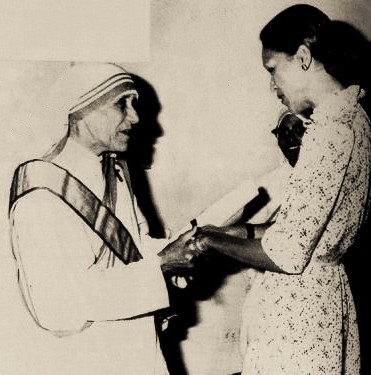
Urghh! It made me feel sick. Did not the saintly Teresa know with whom she had spent time with and now praised so fervently? Then I learned that Mother Teresa had happily and gratefully accepted money from and paid tribute to millionaires such as Charles Keating and Robert Maxwell.
As Emperor Vespasian stated, “Money does not smell.” During the 1980s, when I on television saw Mother Teresa visiting Haiti, Charles Keating was president of the American Continental Corporation and the Lincoln Savings and Loan Association. When Lincoln Savings went bankrupt in 1989, it cost the US federal government over $3 billion and about 23,000 customers were left with worthless bonds. In the early 1990s, Keating was convicted in both federal and state courts of fraud, extortion, and conspiracy.
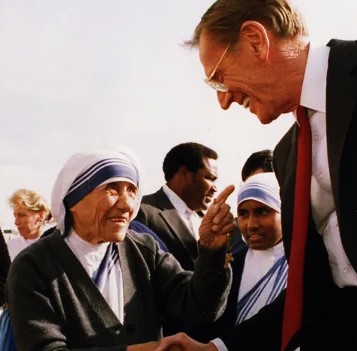
And Robert Maxwell? A super-rich media mogul who embezzled hundreds of millions of pounds from his own companies' pension funds while living in luxury on his estate outside Oxford, if he wasn't out at sea on his luxury yacht, Lady Ghislaine, named after his notorious daughter; socialite and convicted sex trafficker
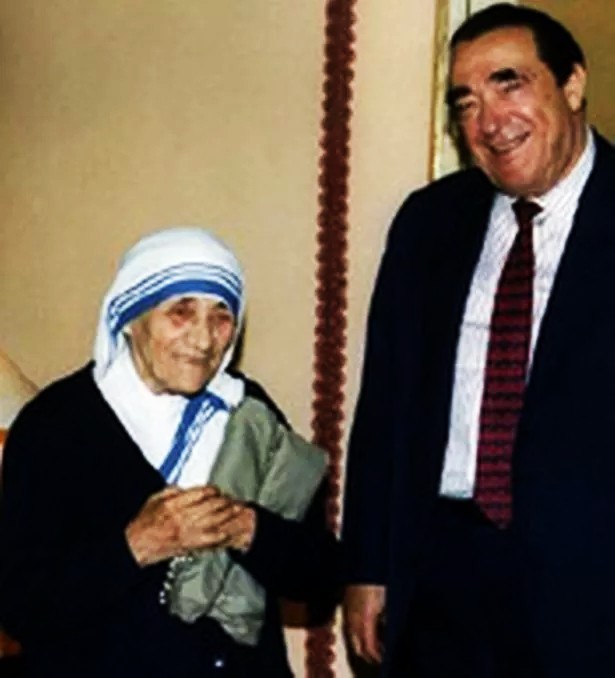
Unfortunately, the accounts of Mother Teresa’s Missionaries of Charity are unavailable. For example, although Indian law requires charities to publish their accounts, Mother Teresa's organization ignores this provision. It is not known whether the Delhi Finance Ministry, which would be responsible for the charities' accounts, keeps the actual figures since when asked the answer continues to be that the data is "classified".
The only country where the finances might be scrutinized has been Great Britain, where it has been estimated that only seven percent has gone to Madre Teresa's activities, apparently most of received funding rests in an unaccounted account at the Vatican.
Mother Teresa had strict views against abortion, which she considered to be a crime on par with the Nazis' extermination of the Jews. She pointed to the spiritual benefits of a life of poverty, a view that seemed to harmonize with the lack of adequate medical care provided to the poor in the care of care of the Missionaries of Charity, despite the fact that of the organization’s large bank assets. Diagnosis was arbitrary, pain relief inadequate, and there were few trained doctors active within the Organization. On the other hand, great emphasis was placed on the fact that all those who were admitted for “care” ought to be baptized and all dying patients systematically received a Christian baptism, regardless of their religious beliefs. I don't know if the conditions have improved, but Mother Teresa is definitely not my kind of saint.
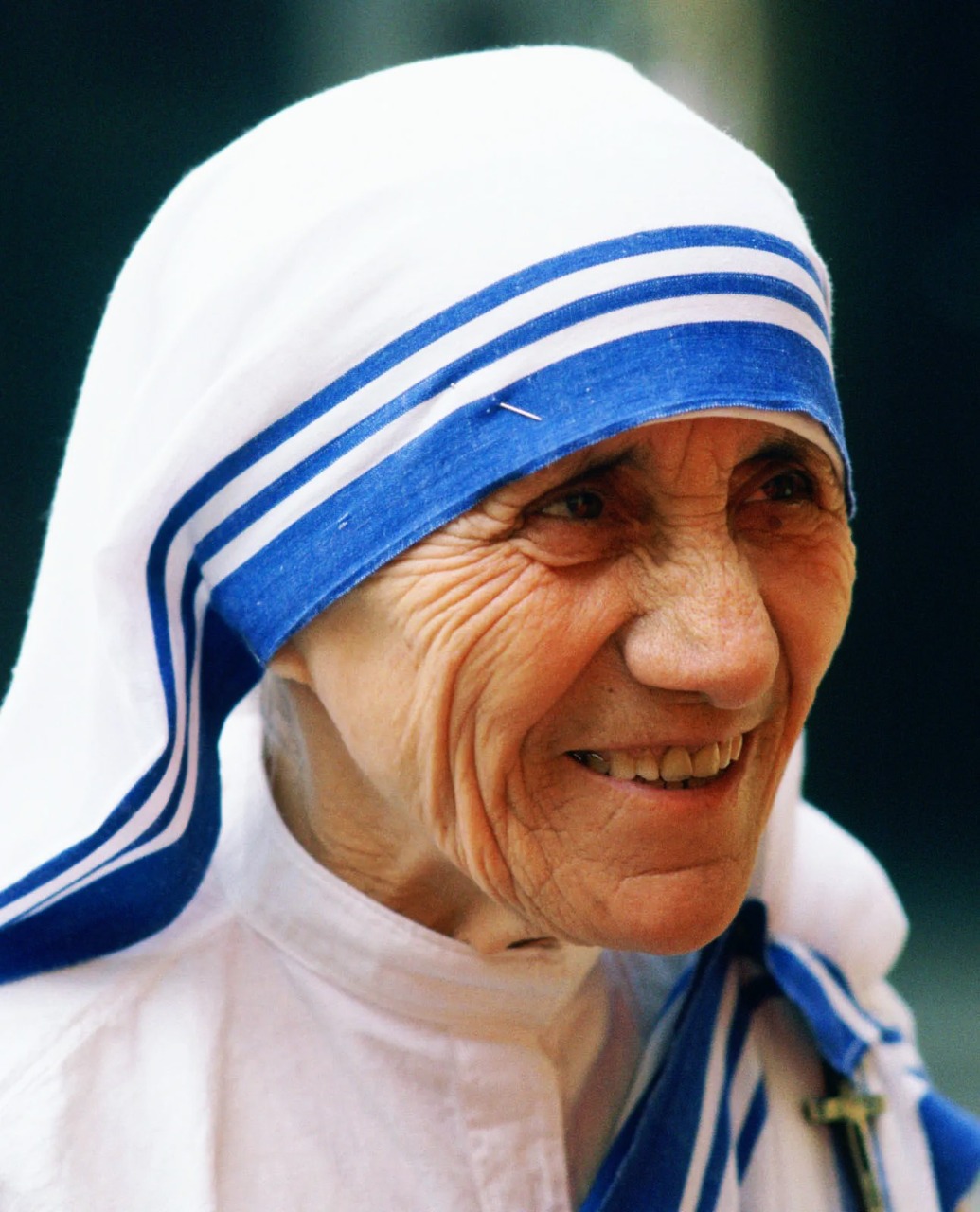
I am also not really clear about the sainthood of Padre Pio, so immensely popular in Italy, other than that he could demonstrate stigmata. Perhaps they came about by divine influence, but evil tongues stated that he single-handedly aided divine providence. Certainly, the fortune that was collected in Pietrelcina through all the alms led to the construction of one of Italy's best hospitals, although the basic funding came from Emanuele Brunato, who had raised his millions through black market deals in Nazi-occupied France and the United Nations Fund for Aid and Rehabilitation (UNRRA), which after World War II helped refugees and poor people all over war-torn Europe.
Padre Pio was perhaps OK; his sainthood is based on all the miracles that people say took place around him. His preaching was not particularly remarkable, but he lived a simple life and stated that:
Suffering is a special sign of God's love, for it makes you resemble His divine Son through the anguish He felt in the desert and on Calvary.
Here in Rome, people pray to Padre Pio to find a parking spot, and you can find his image everywhere – in bars, car repair shops and grocery stores.
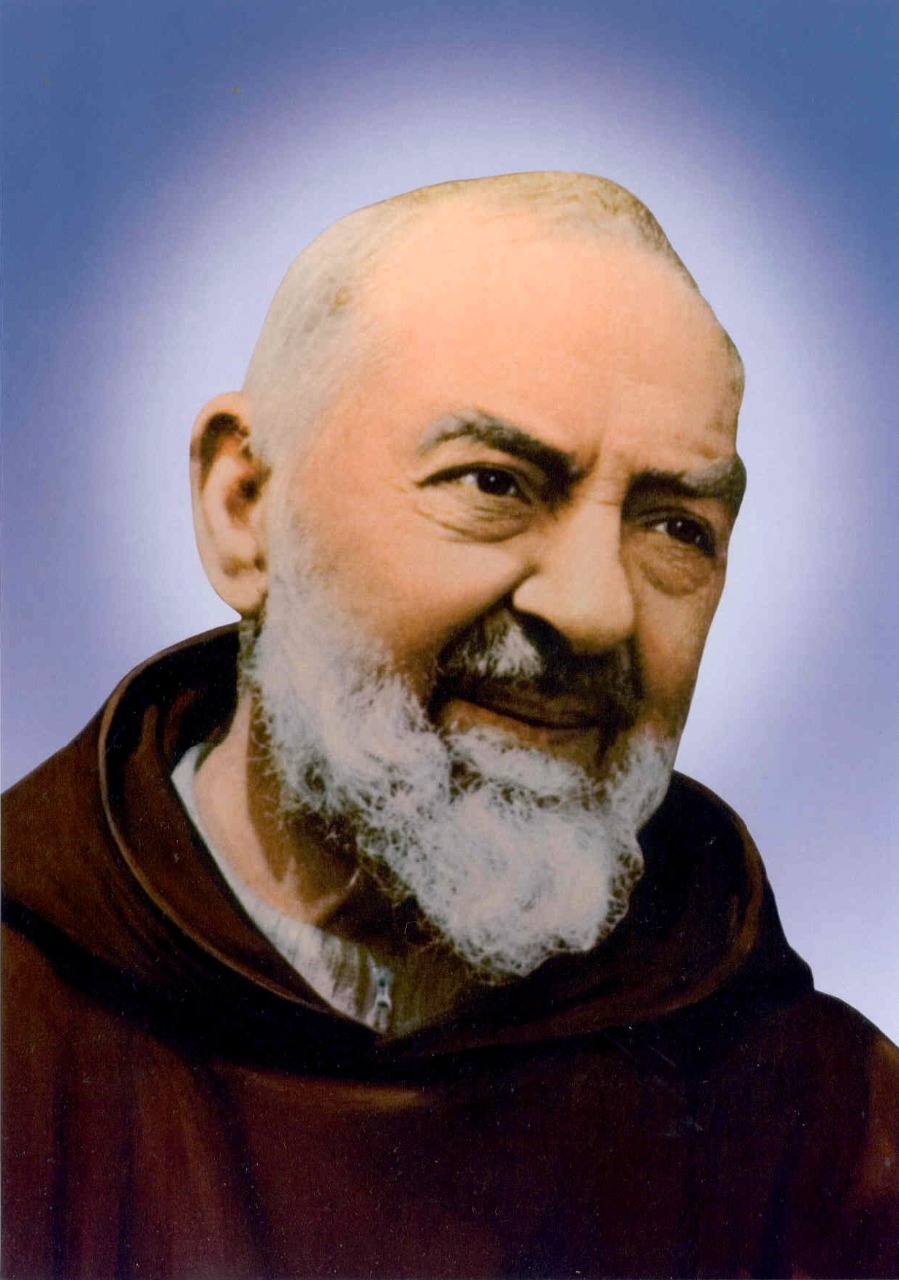
The portraits of famous men and women have become like Byzantine icons. They encapsulate a very special dimension, filled with allusions, hope and inspiration. Einstein stands for intelligence and general genius.
.jpg)
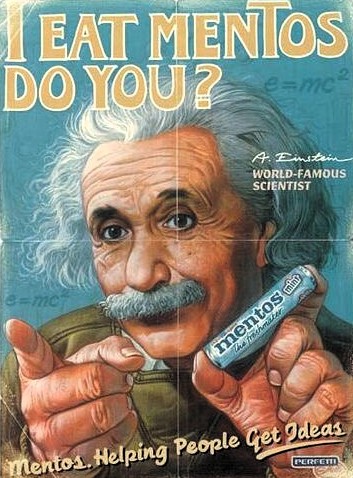
Sigmund Freud is also linked to genius, but if Einstein is the archetype of a scientific genius, the ideas around Freud also revolve around the subconscious instinct and above all – sex.
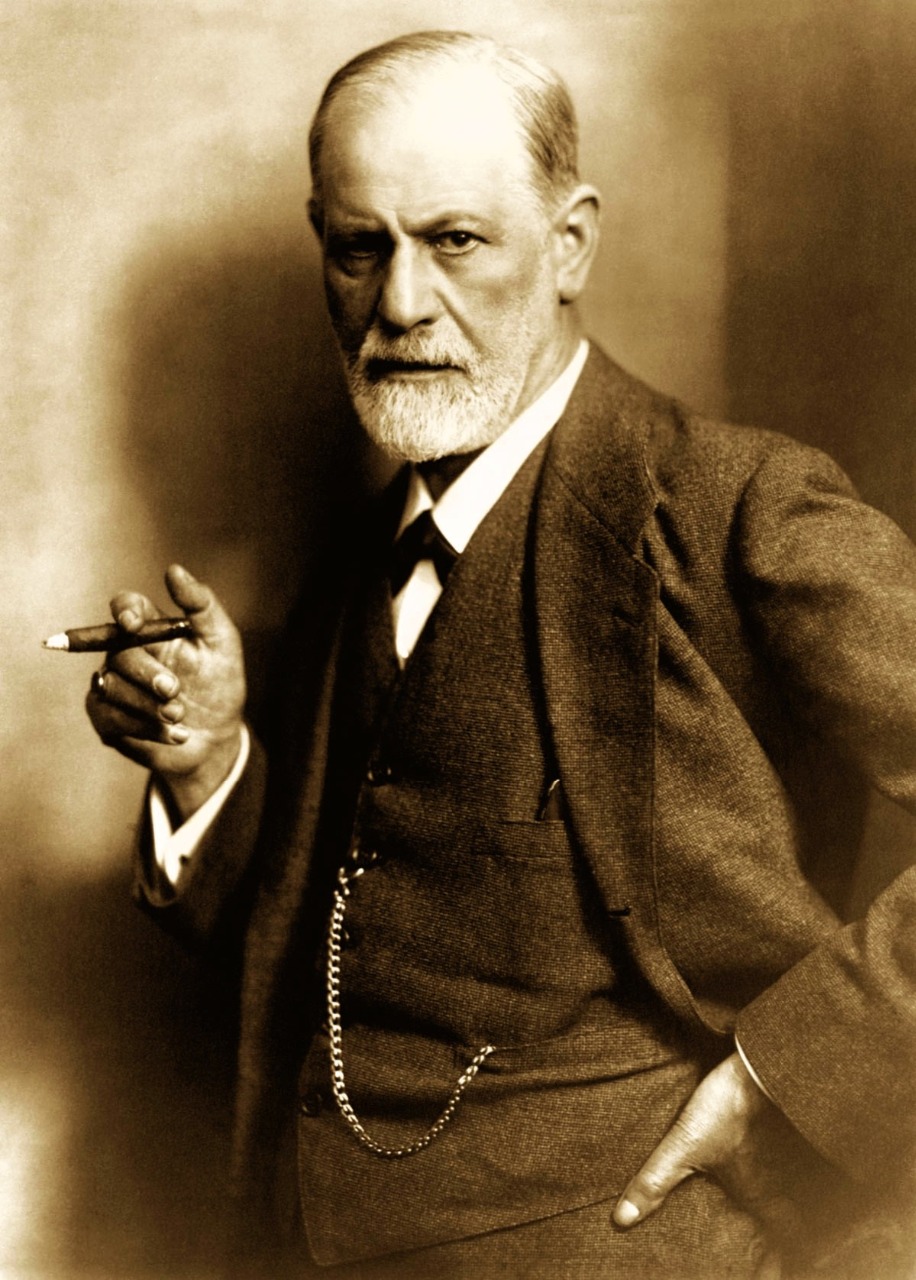
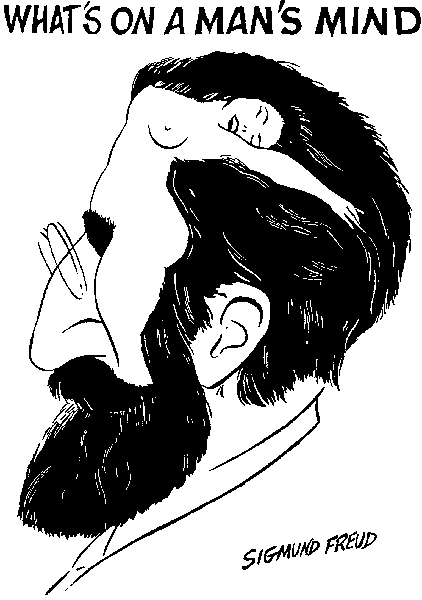
Chaplin's anarchic and poor vagabond has become the epitome of film and humour.

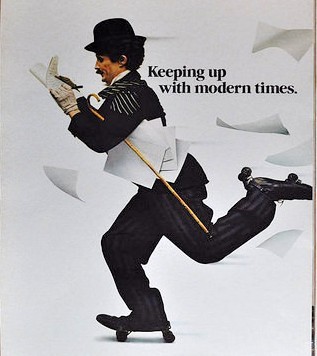
Karl Marx's face is linked to social criticism and revolution in its more intelligent version.
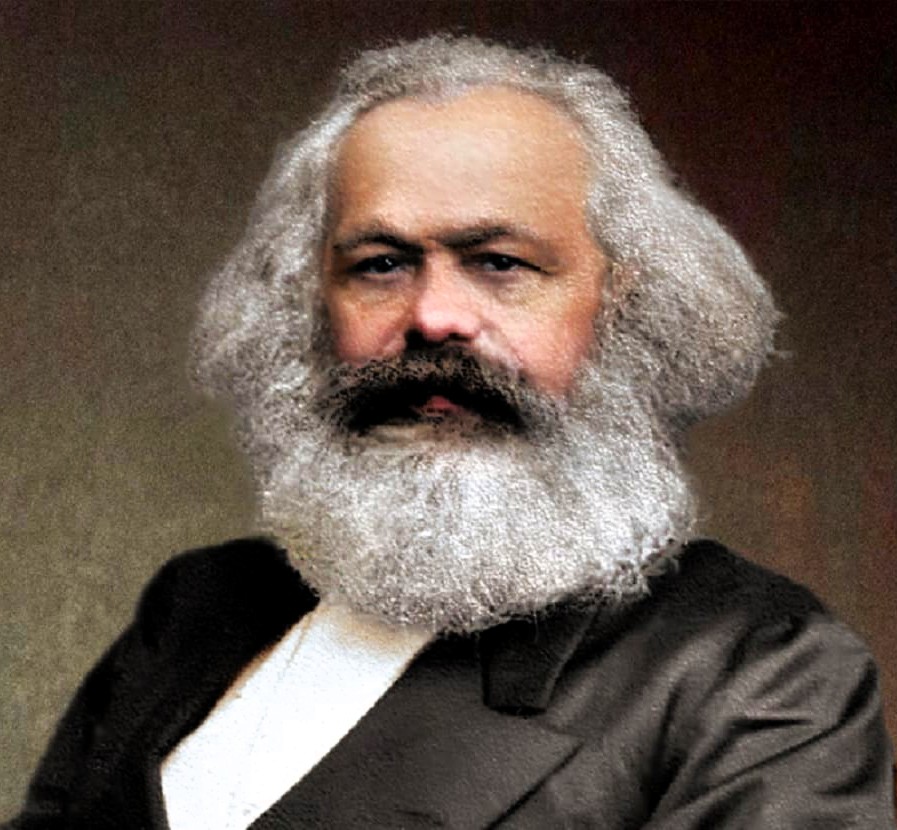
.jpg)
Che Guevara also became a revolutionary saint, though more than Marx he is the object of a youthful cult. Che was good-looking and in his portraits he radiates an inner glow. If Padre Pio's image adorns workshops and boutiques of Italian small business owners, Che Guevara's image is all over the world to be found in rooms and apartments of radical youth.
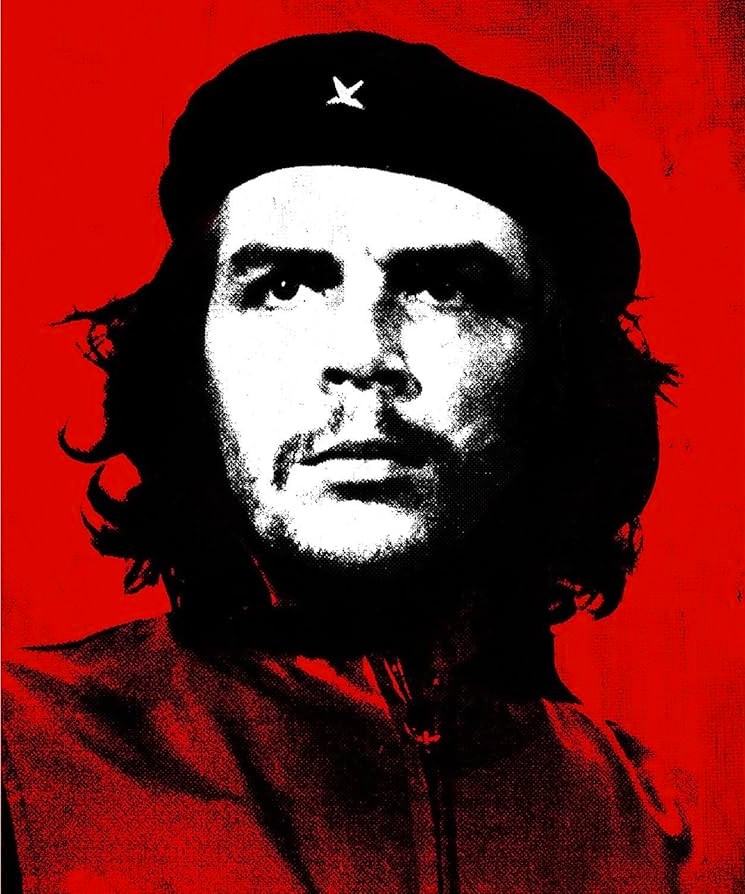
Like the painting of Mao which adorns the gate in Beijing, the Che poster finds its origin in a photograph. Alberto Korda selected it from a series of photographs he had taken on March 5, 1960, during a memorial ceremony for the victims of the La Coubre explosion. Korda has said that he chose the image because of Guevara's facial expression, which according to him reflected absolute intransigence, anger and pain.
La Coubre was a French ship loaded with 76 tons of Belgian ammunition. Against all rules, it had been moored at the quay in Havana (ships with dangerous cargo must be unloaded out at sea) and when it exploded, between 75 and 100 people were killed. Cuba blamed the United States for the attack.
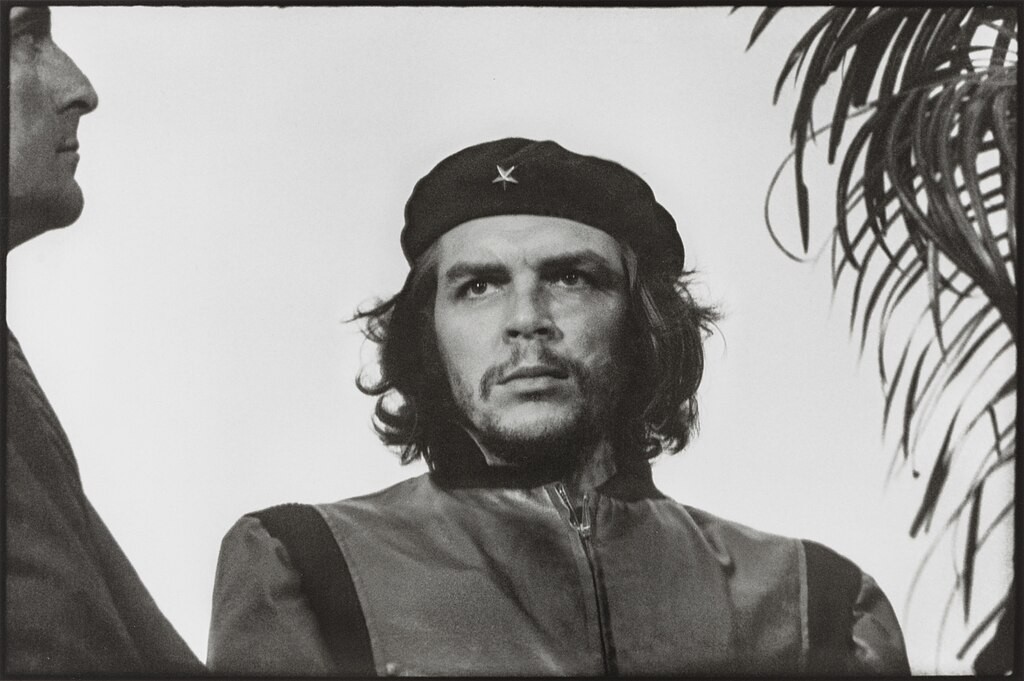
Handsome revolutionaries undeniably have an iconographic impact. Mexico's Emiliano Zapata became such a powerful symbol, even more handsome than Marlon Brando who enacted him in Elia Kazan's excellent 1952 film Viva Zapata .
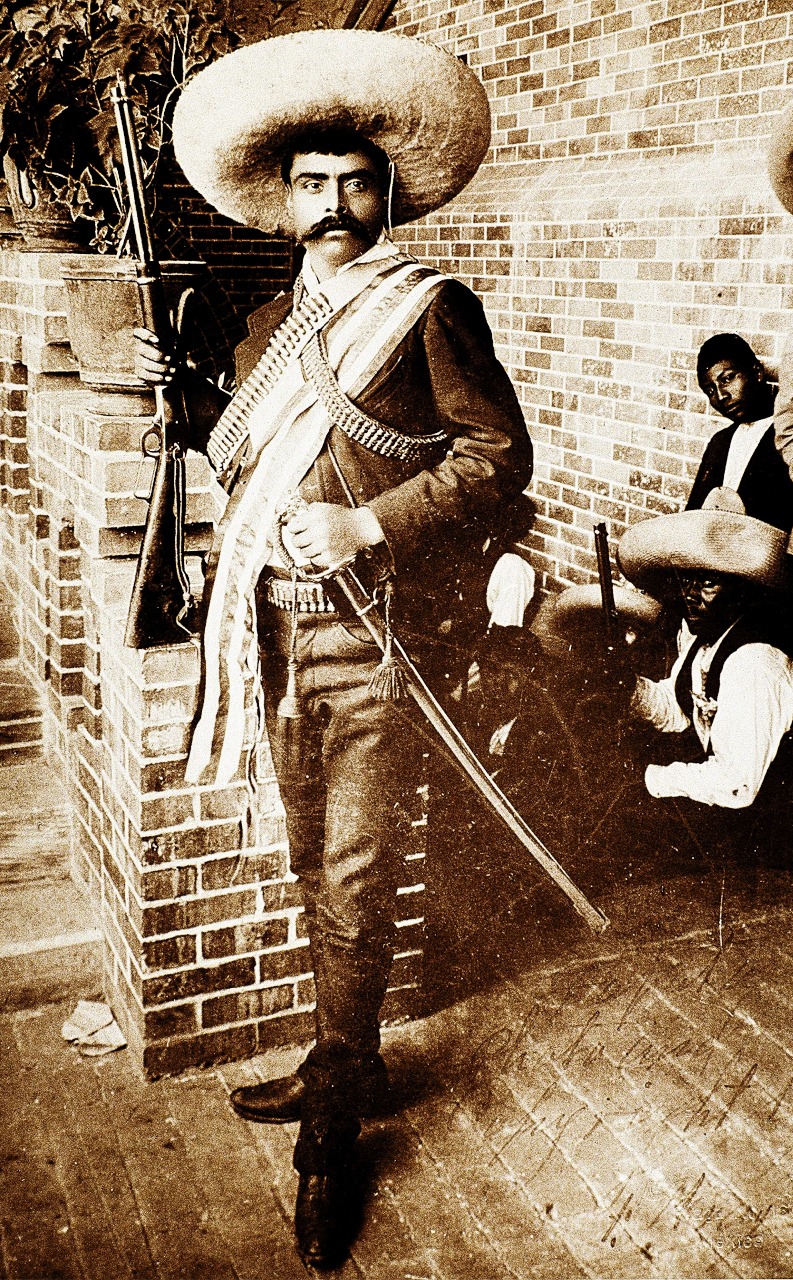
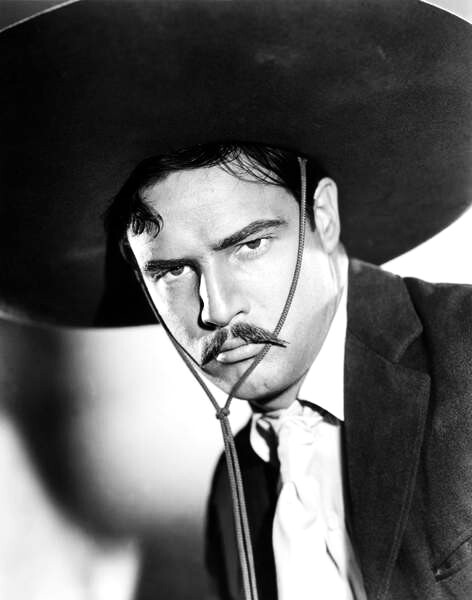
Attention-grabbing headgear often seems to be part of memorable iconography. Che's beret did for a time become a popular outfit for militant youths, such as the United States' Black Panthers.
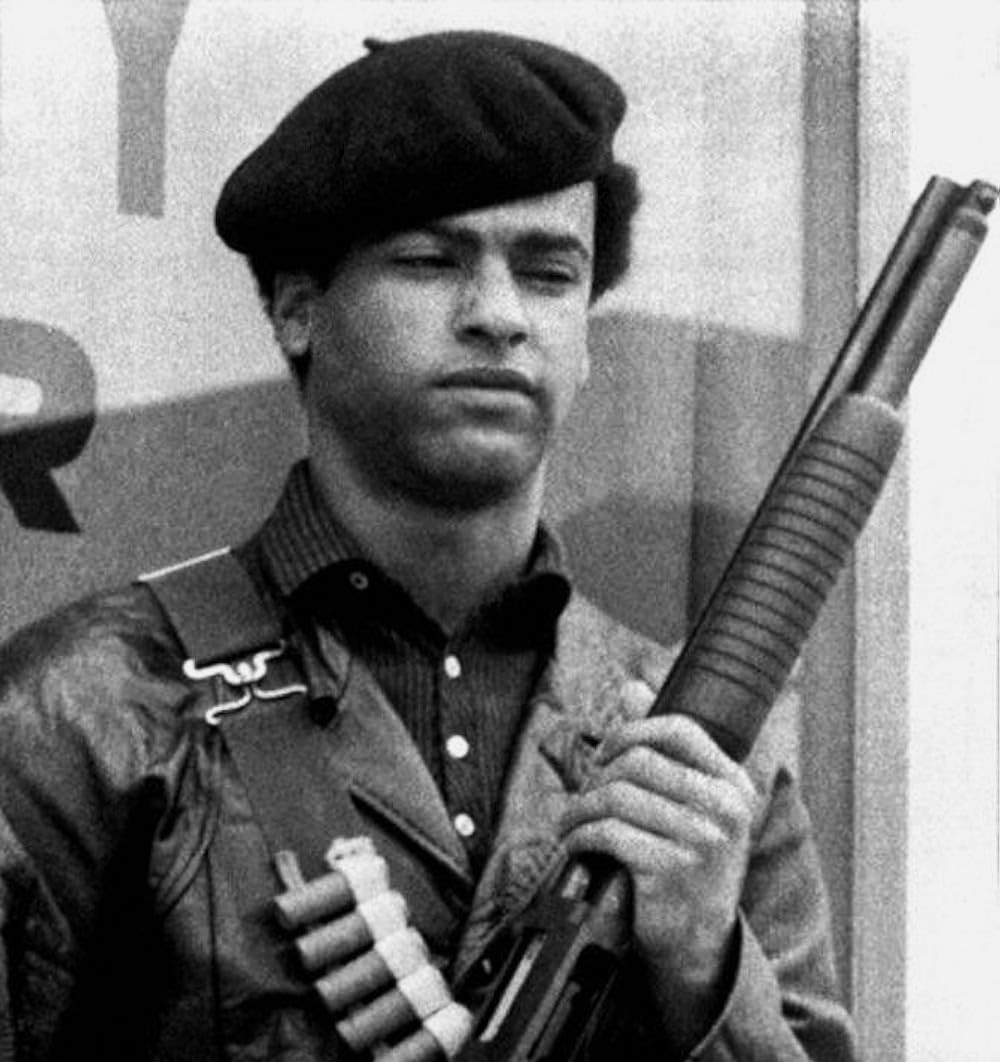
Later, several radical youths replaced the beret with Mao's cap.
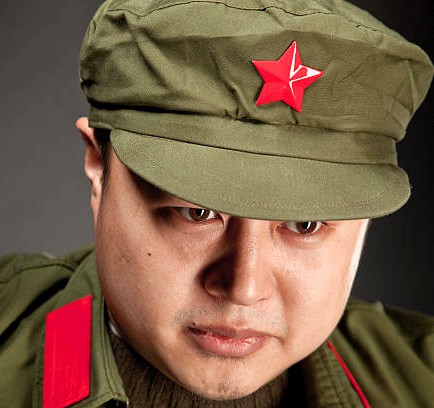
Nowadays, you can mark your views by wearing a Palestinian kefiah.

Already French revolutionaries of the eighteenth century distinguished themselves from reactionaries by wearing a Phrygian, red “liberty cap.”
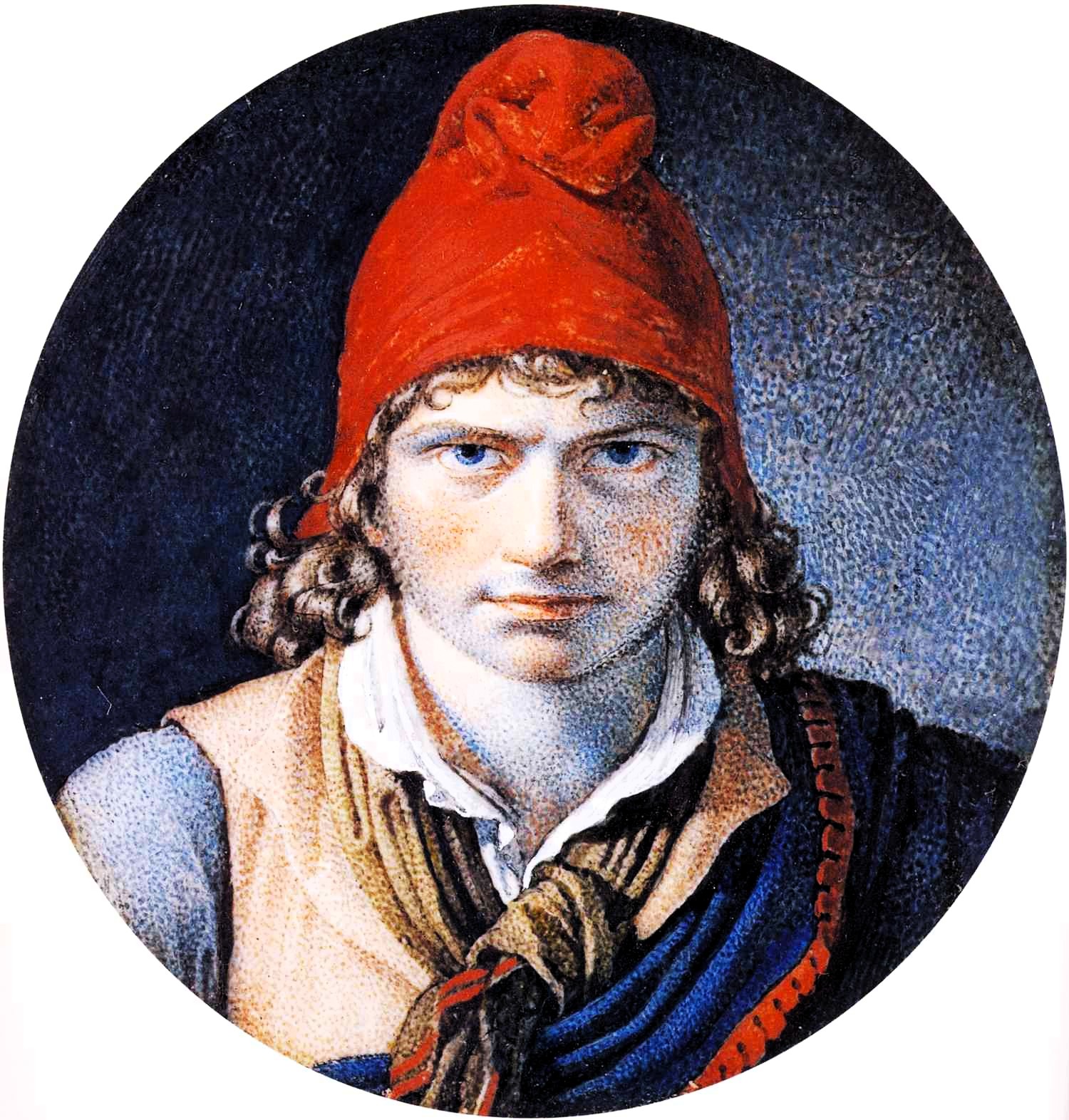
Talibans like to wear a pakol hat.

While radical feminists can solidarize themselves with the persecuted Russian feminist punk, protest and performance group Pussy Riot, by wearing a knitted pussy cap.

A fashion-oriented resistance similar to the pussy caps were knitted caps worn by some Dutch during the Nazi occupation, patterned with the colours and round logo of the British Royal Air Force, RAF.

However, it is not always that a hat or cap suggest radicalism. For example, in 1925 Kemal Atatürk introduced his “hat law” which stipulated the wearing of Western hats instead of the fez, which Sultan Mahmud II had introduced in 1826 as compulsory headgear for all Ottoman officials. Atatürk regarded the fez as a sign of Turkish backwardness.
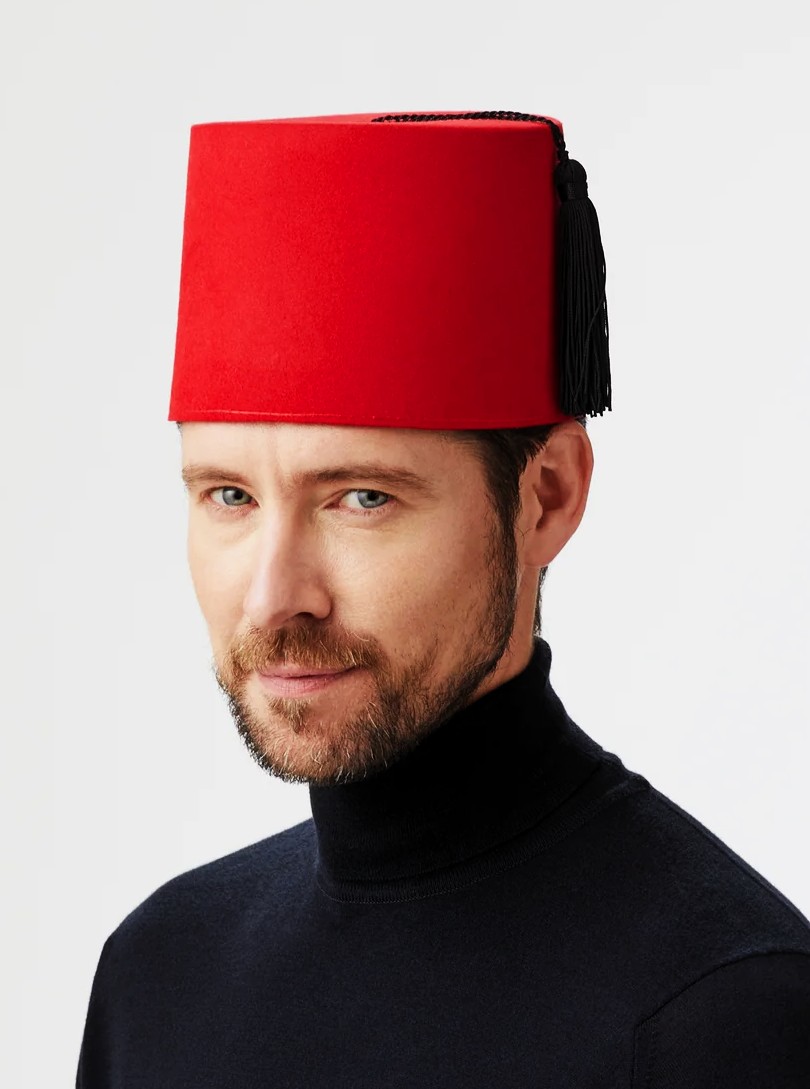
Conservative hat fashion is also constituted by Trump's distasteful headgear.

Or maybe even the more imaginary Marlboro man's cowboy hat, which alludes to a tough and rough wilderness life, an existence that requires its smoking macho guy.
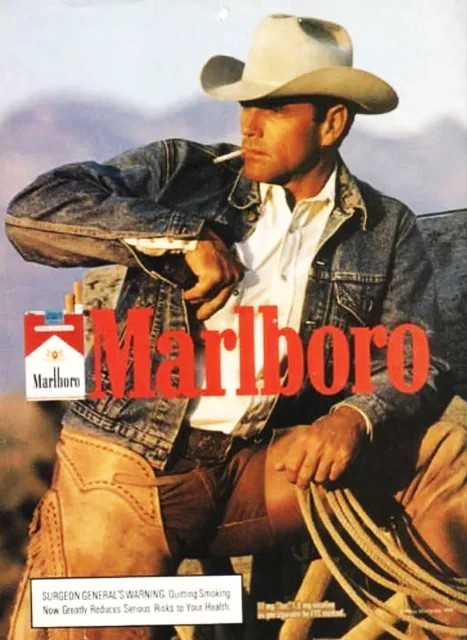
The Marlboro Man may find his urban counterpart in the sharp-tongued private detectives of the film world, personified in Humphrey Bogart's fedora-wearing Philip Marlowe.
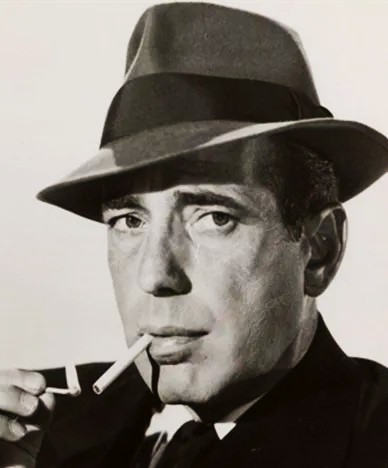
Someone who moves in all environments is the athletic and at the same time intellectual archaeologist Indiana Jones, who also is sentimentally attached to his hat.
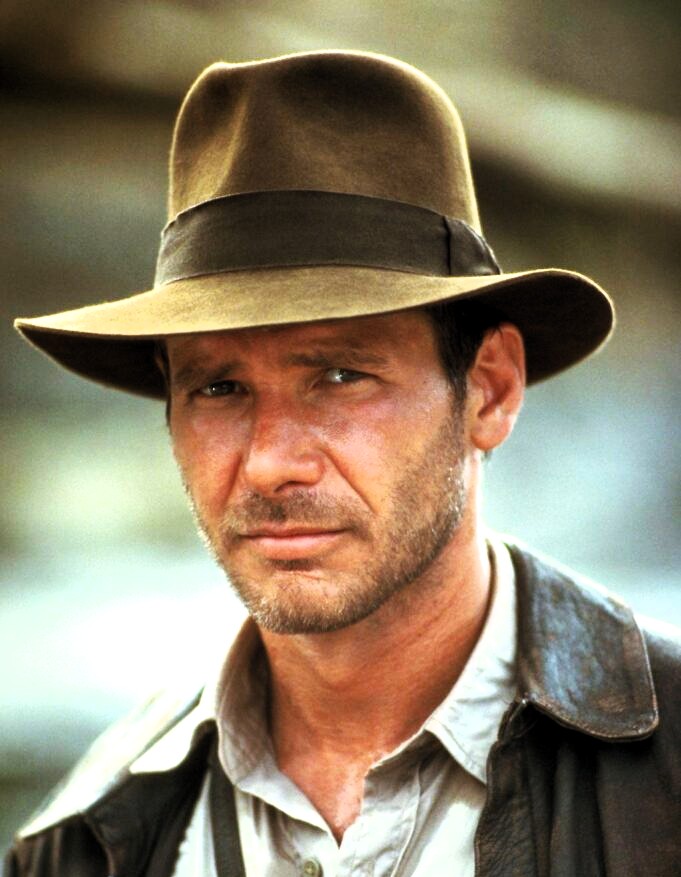
The archetype of a proto-conservative totalitarian headdress was the Prussian Pickelhaube, which Kaiser Willhelm II was complemented with a an upward-pointing moustache.
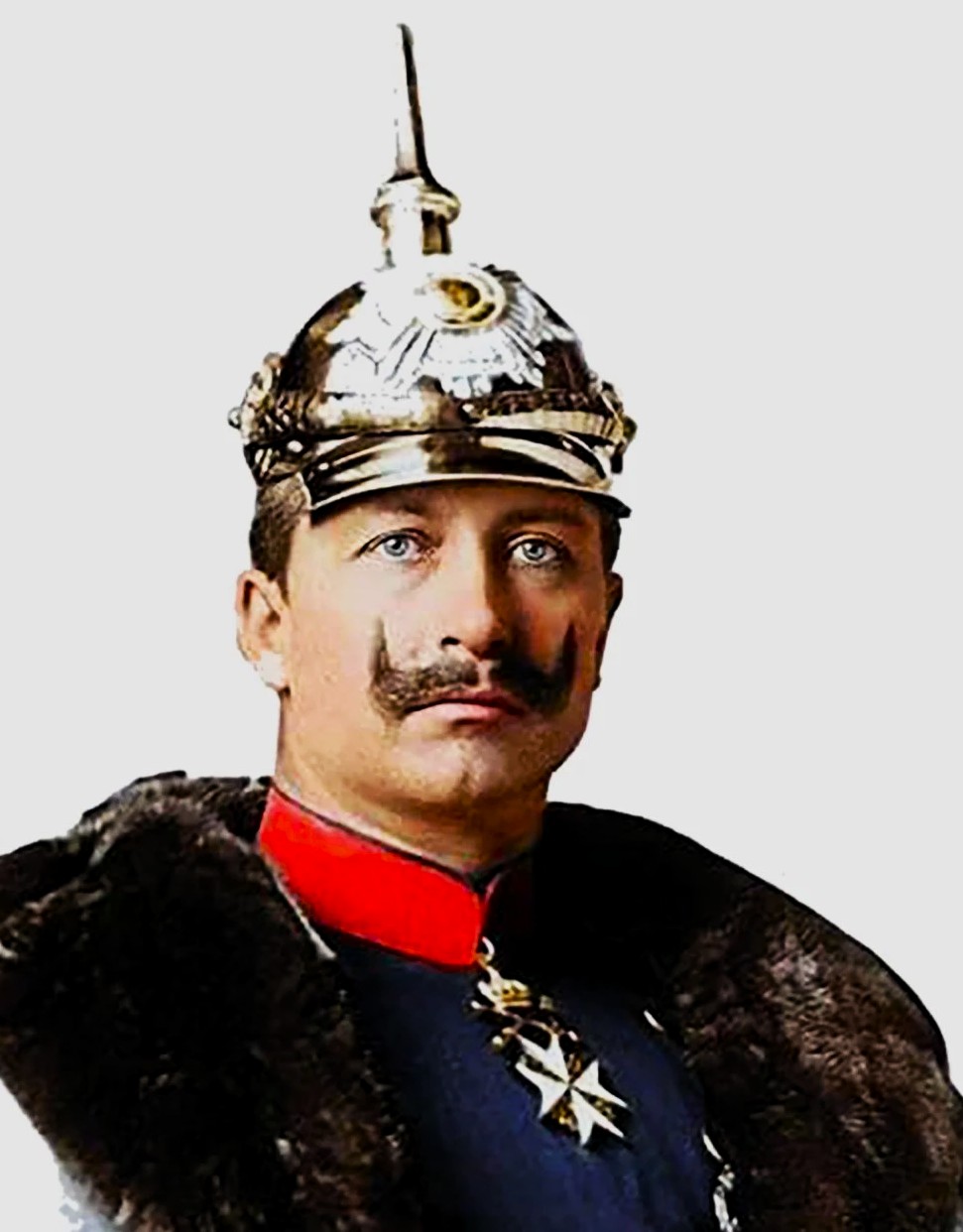
Mustaches can also be an iconographic marking. Think, for example, of Hitler's moustache which, in combination with his hairstyle, is enough to allude to him.

The incomparable skilled and ironically commercially conscious Salvador Dali also used his moustache as a trademark.
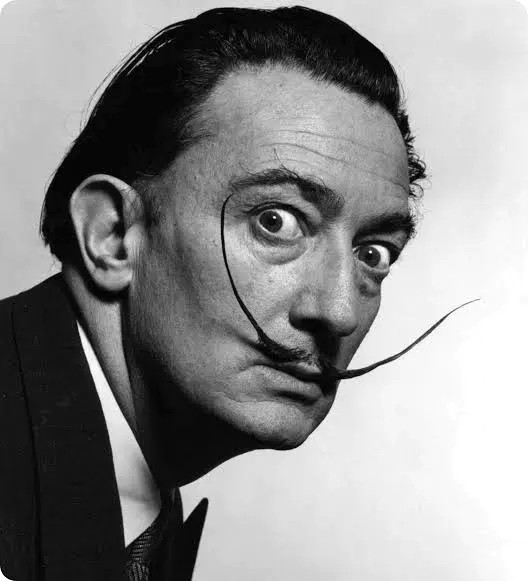
The even more commercialized Andy Warhol, who elevated commercialism, fame, and laissez faire to an art form, knew how to make use of iconographic portraits in his superficially distinctive art, often with strangely aesthetically pleasing results. By Warhol we find an almost unbelievable number of versions of iconic portraits. Images that even before Warhol had manipulated them were fairly worn and well-known, not least portraits of Mao, Lenin and Marilyn Monroe.
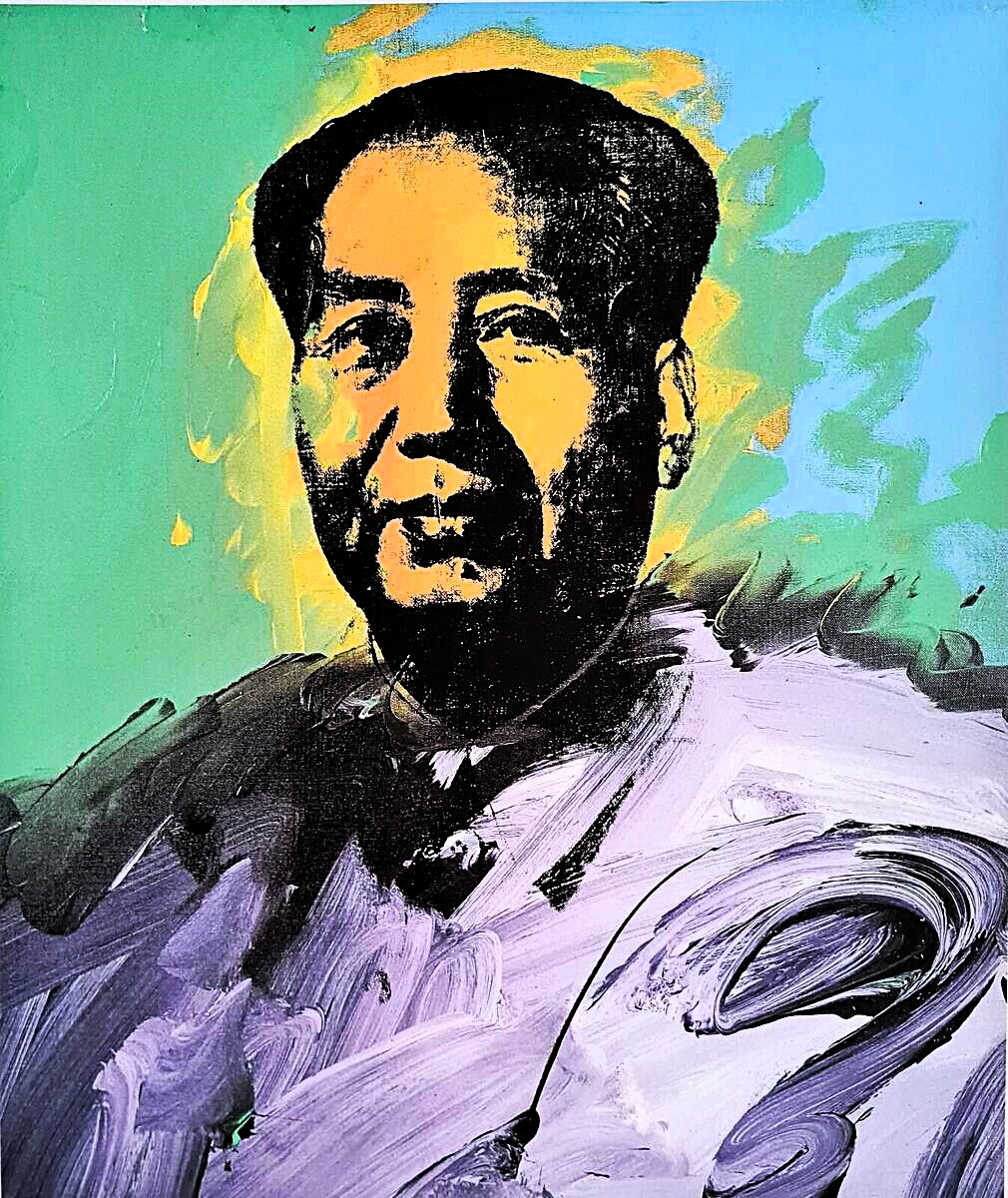
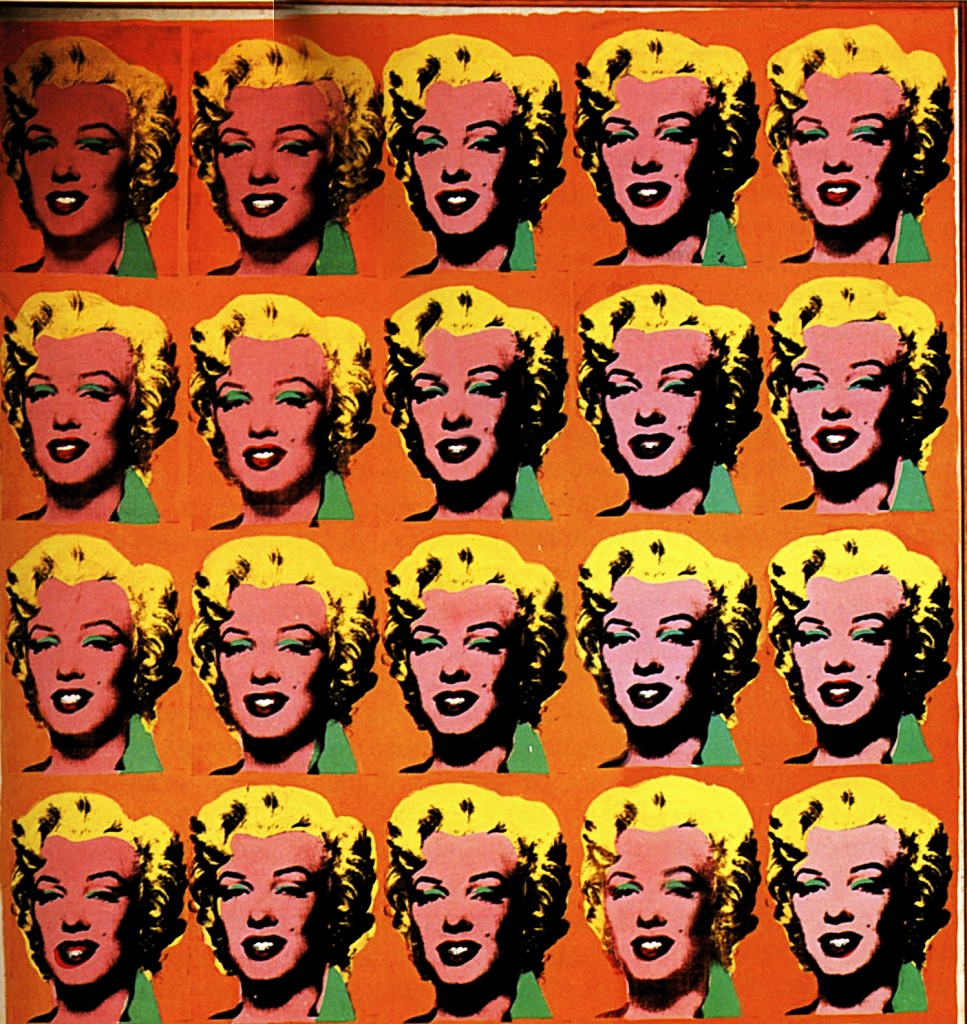
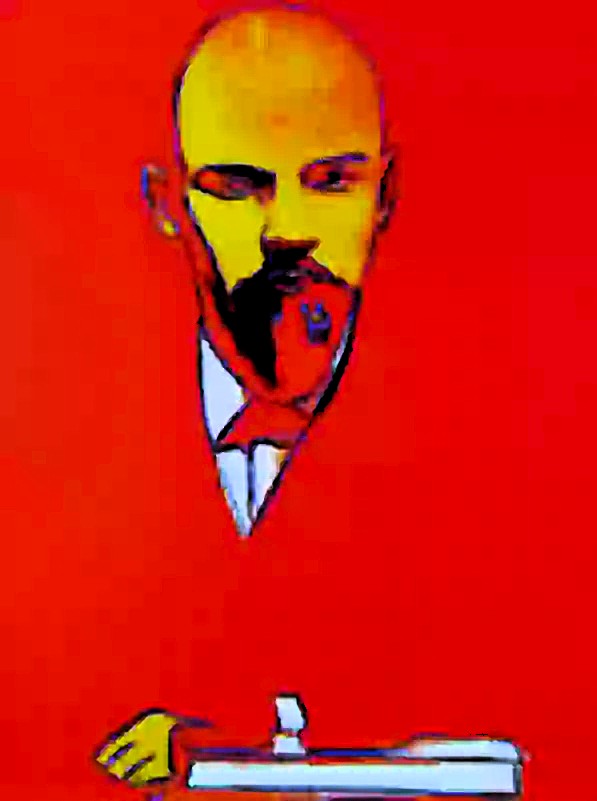
Like so many other artistically produced icons, Warhol's portraits were based on photographs, an artform that constantly produces icons. Consider, for example, the skilfully staged photographs of Marilyn Monroe and Igor Stravinsky.
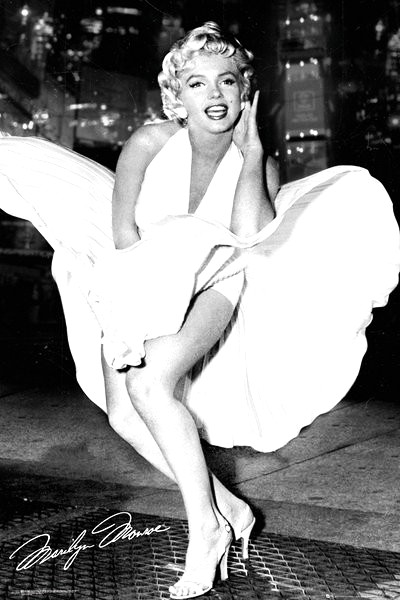
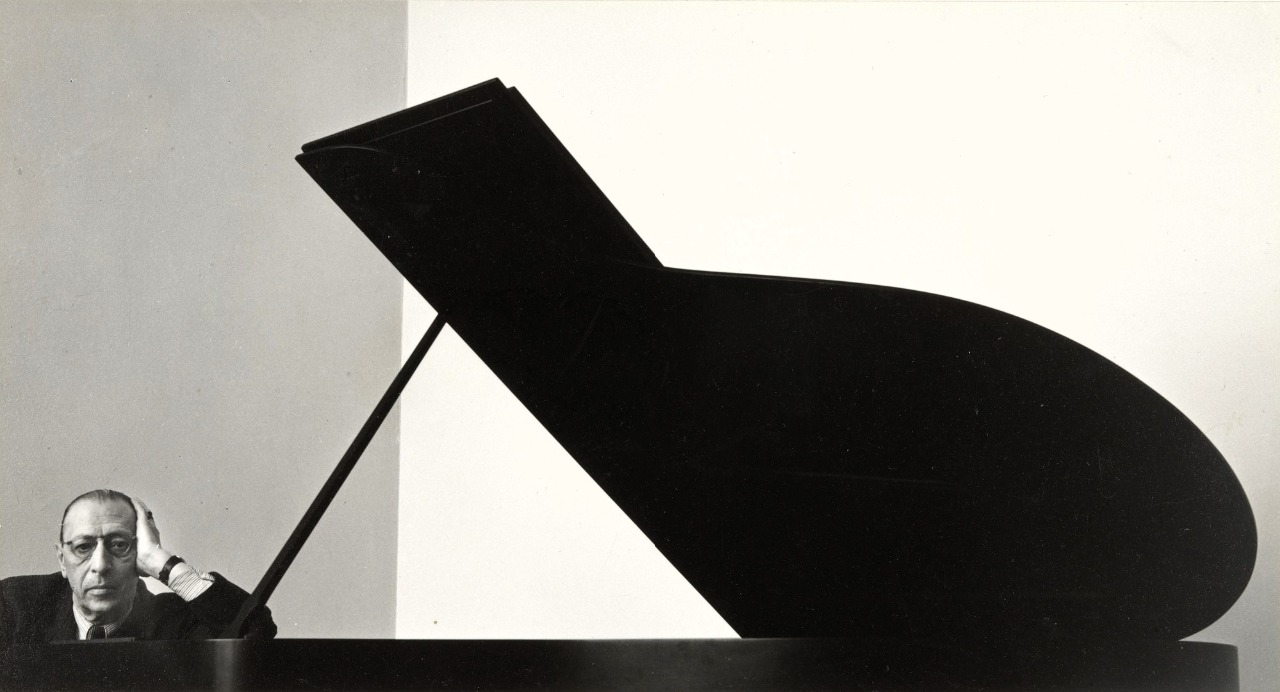
Or Winston Churchill's victory gesture that during World War II gave the British courage and hope and has since become an internationally occurring symbol.
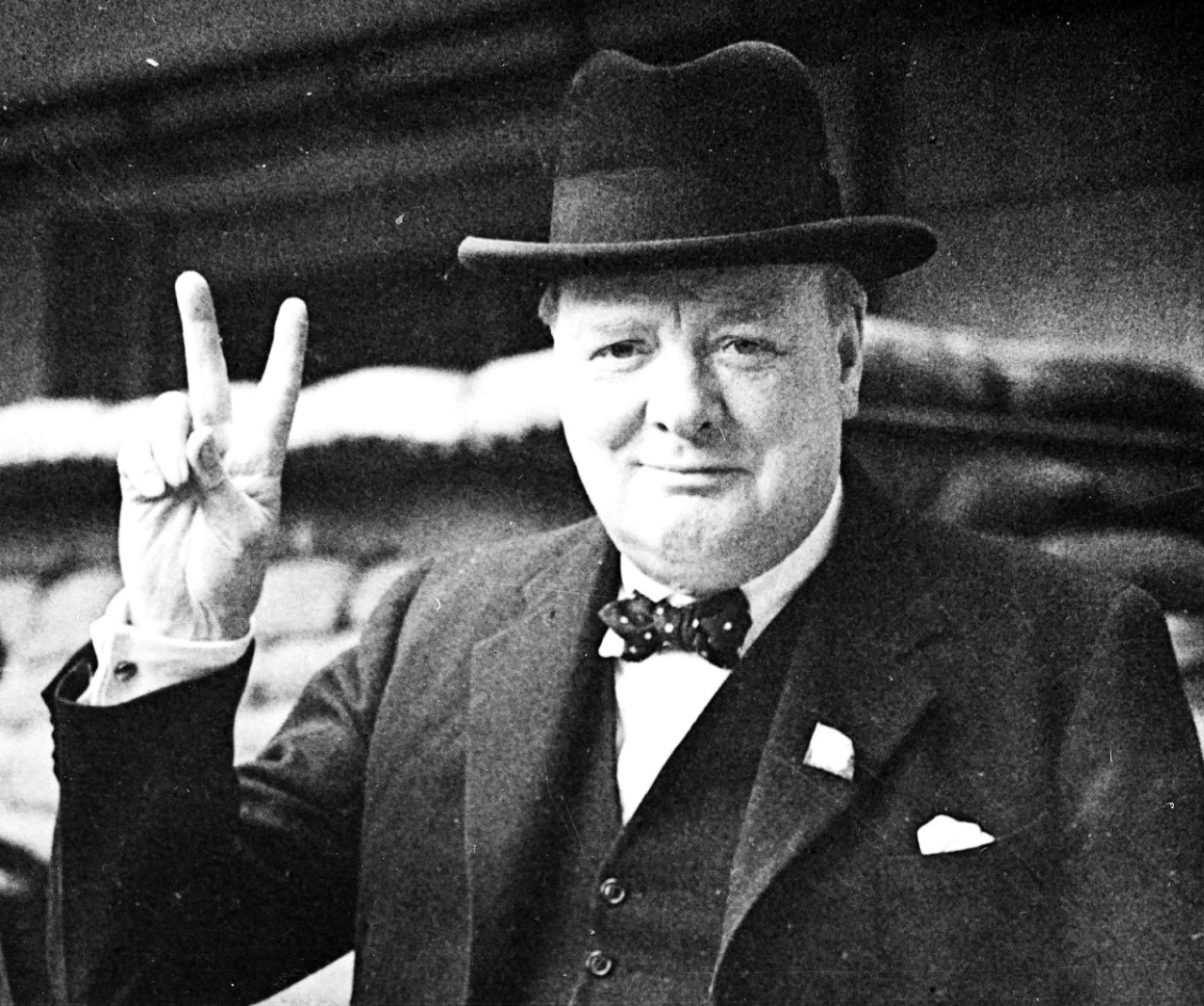
The multifaceted Andy Warhol has more often than not been awarded the origin of an iconic logo that he did not create, but which became a symbol of an outspoken, rude youth culture, filled with contempt for the establishment and good taste – the Rolling Stones' outstretched tongue.
It was thus not Warhol who created this iconic image, but a young John Pasche who was studying at the Royal College of Art in London. The financially minded Mick Jagger had asked the Rolling Stones headquarters to contact the school and ask them to identify a young talent who could come up with a striking symbol for the rock group.
Pasche was chosen, but his original proposal was not to Jagger's liking. He had thought of something more exotic and showed Pasche a picture of the Hindu terrifying goddess of death – Kali.
Kali, the Great Mother, who like the eternal time destroys everything, yet persists. She is the relentless nature that, despite her predators and victims, persists. With her outstretched tongue Kali teases and mocks us. She sees through our social facade; perceives the dark desires we deny and suppress. She forces us into our shameful past, so that a realization of our shortcomings enables us to be born anew.
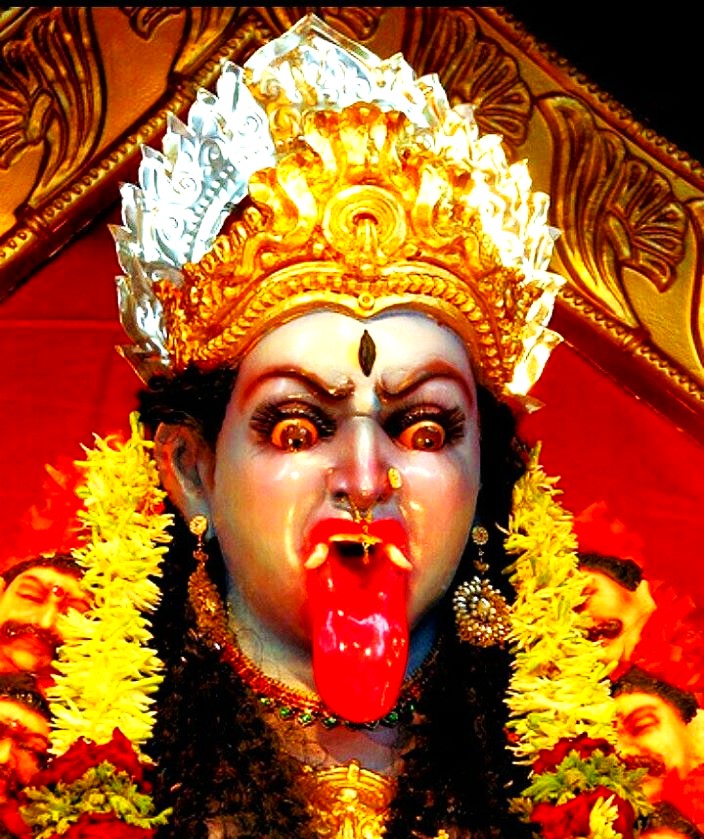
Pashe became fascinated by the goddess's outstretched tongue and in a moment of inspired excitement he came up with what became a pop artwork – a synthesis of works by significant pop artists such as Warhol, Ruscha, Ramos and Lichtenstein.
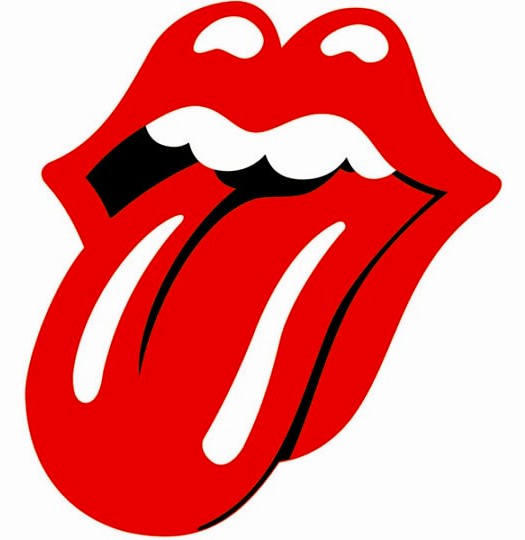
Back to the iconic meaning of headwear. It is not only as symbolic marker of ideological conviction that a hat or cap can take on a certain meaning, they can also be associated with admired men and women.
In India, for example, the young freedom hero Bhagat Singh (1907-1931), who was hanged by the British, is associated with his hat.
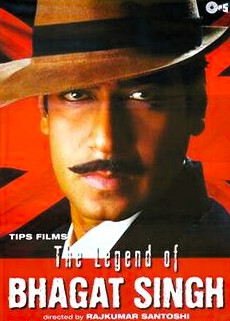
John Lennon's hat model was worn by many of his fans, often in combination with his round glasses.
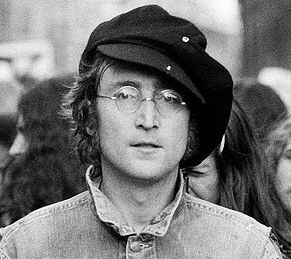
Another person who has become almost identical with his hat is the Nicaraguan revolutionary Augusto Sandino (1895-1934), who between 1927 and 1933 fought against the U.S. occupation of his country. A year after the U.S. withdrawal, Sandino was executed on the orders of the coup plotter Anastasio Somoza.
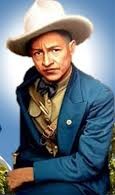
Sandino is one of many iconic figures who have become something of a symbol of the country they fought for. There are plenty of such “nation fathers.” Such as Garibaldi, Gandhi, Mandela and Atatürk, to name a few figures who are now depicted as statues and a plethora of pictures.
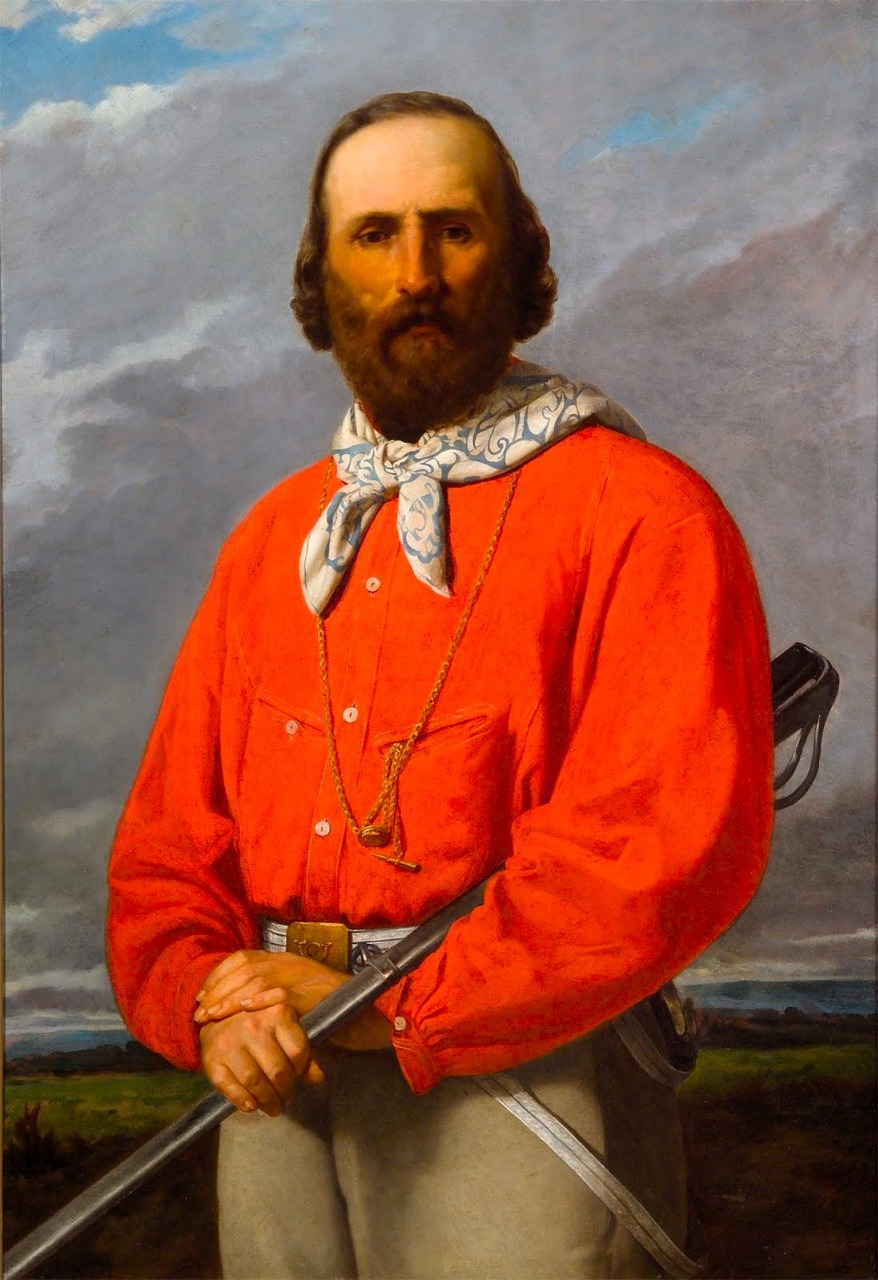
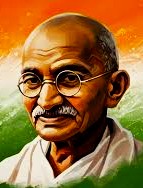
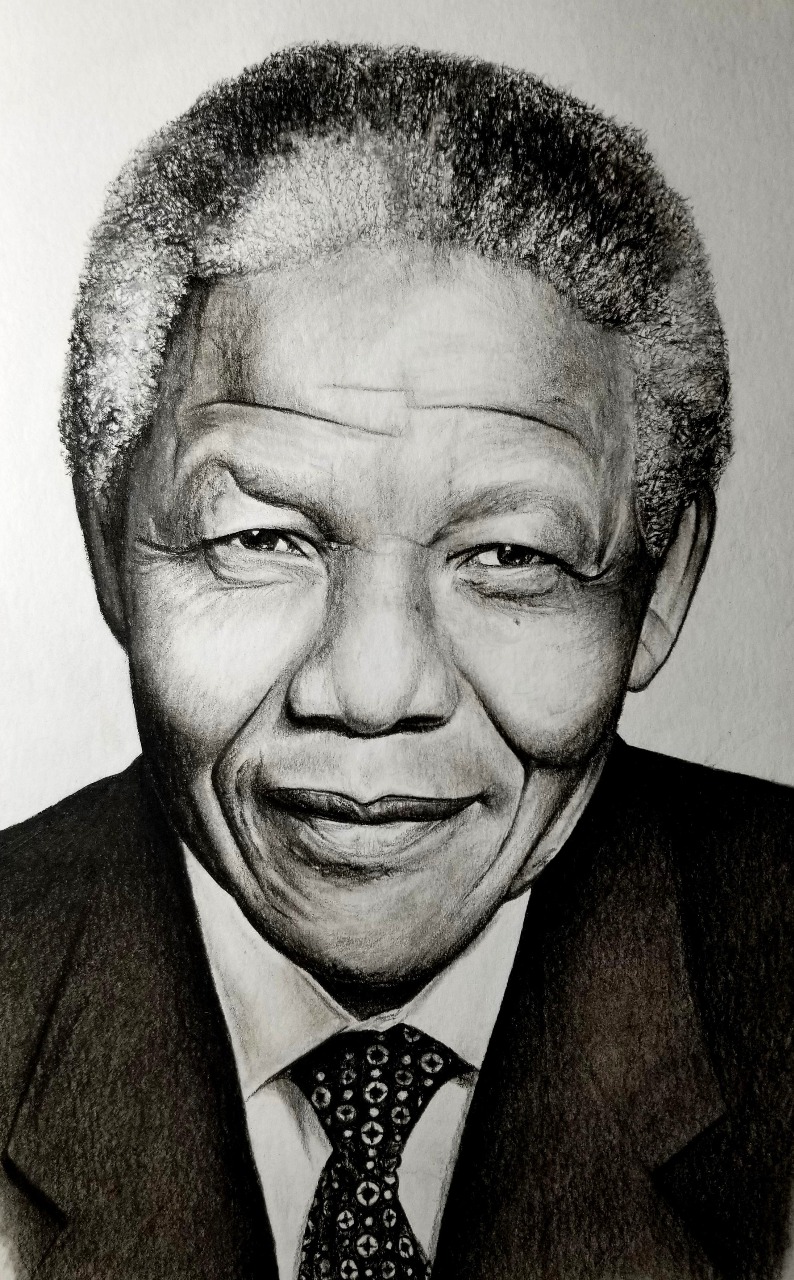
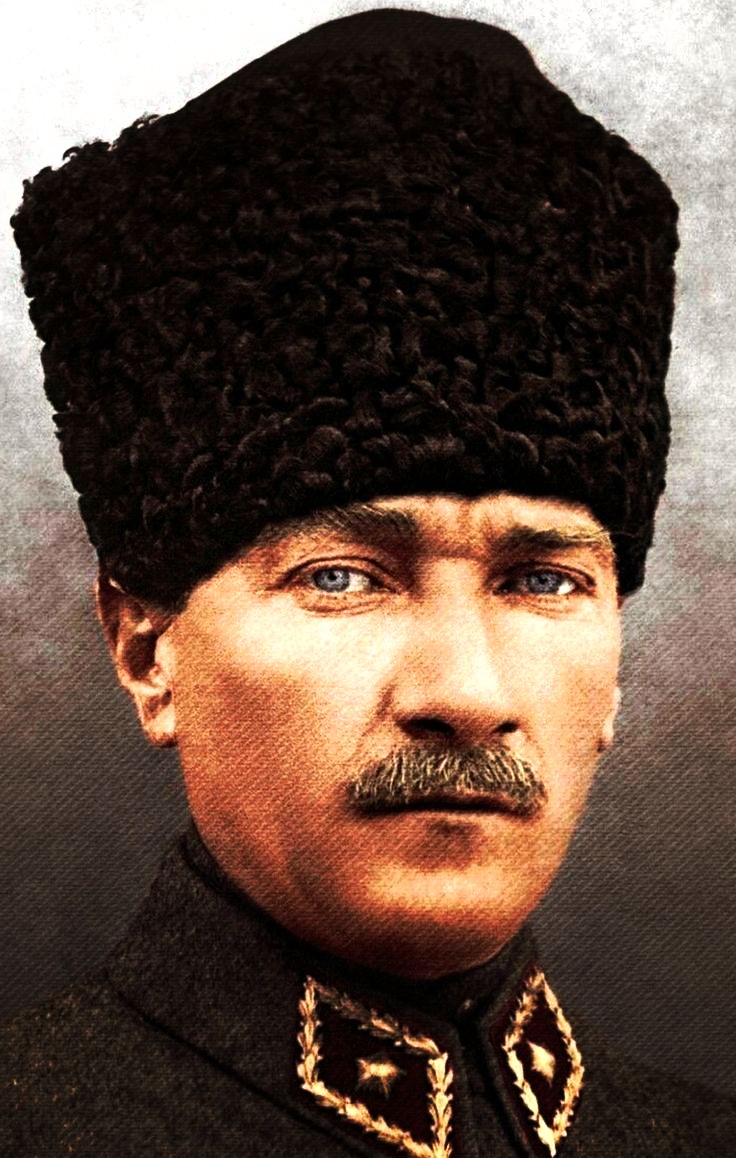
Fathers of the nations, though evil ones, can perhaps also be dictators whose portraits once adorned the offices and prisons of totalitarian regimes.
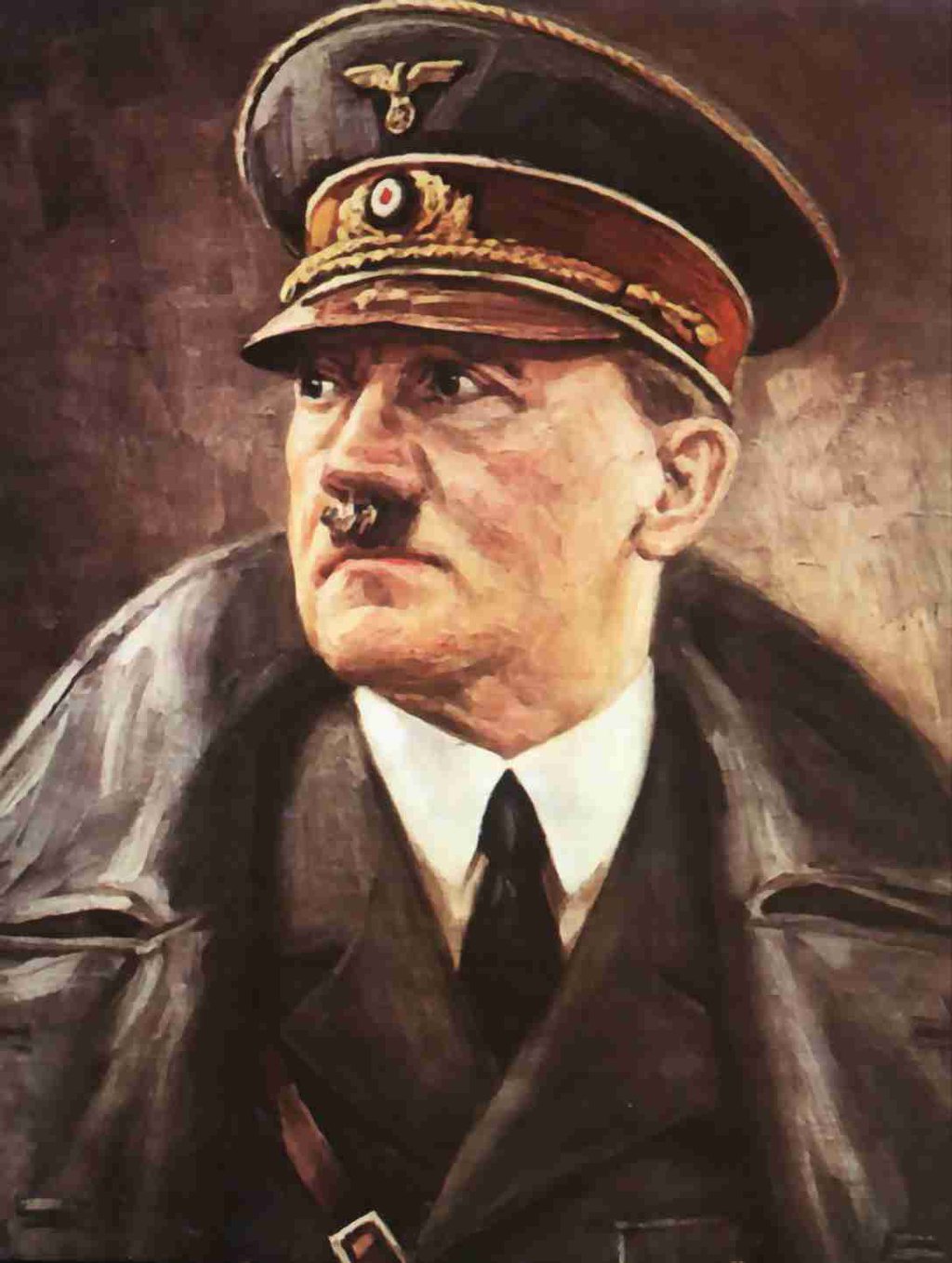
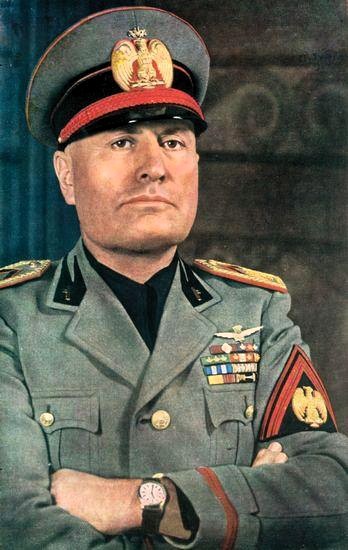

Self-glorified and pathetically portrayed, they have looked down on victims and subjects. As successors to this type of icons, one can possibly perceive the portraits of sitting presidents that adorn offices and embassies
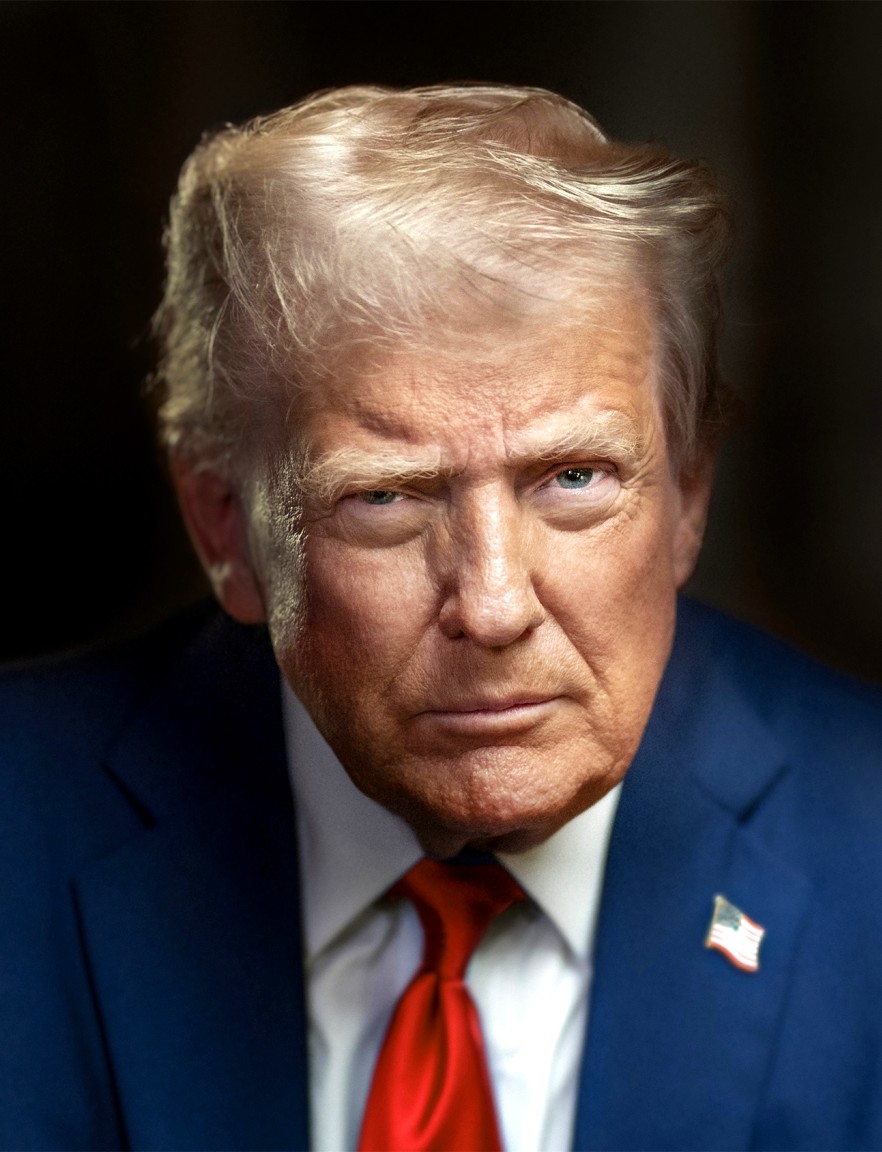
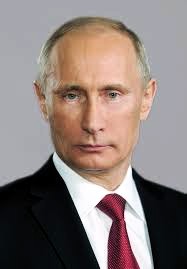
More often than not, these potentates are extremely serious. Perhaps even somewhat threateningly they watch over the officials and visitors of embassies and government offices. Nowadays they wear ties and jackets and even if they would like to, they no longer present themselves in such splendor as previous autocrats, like Napoleon Bonaparte.
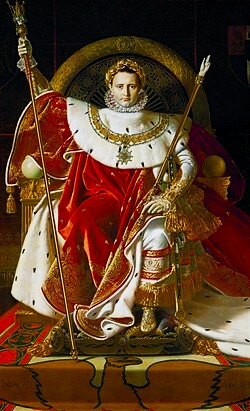
A man who, by the way, was also known for a somewhat odd headdress.
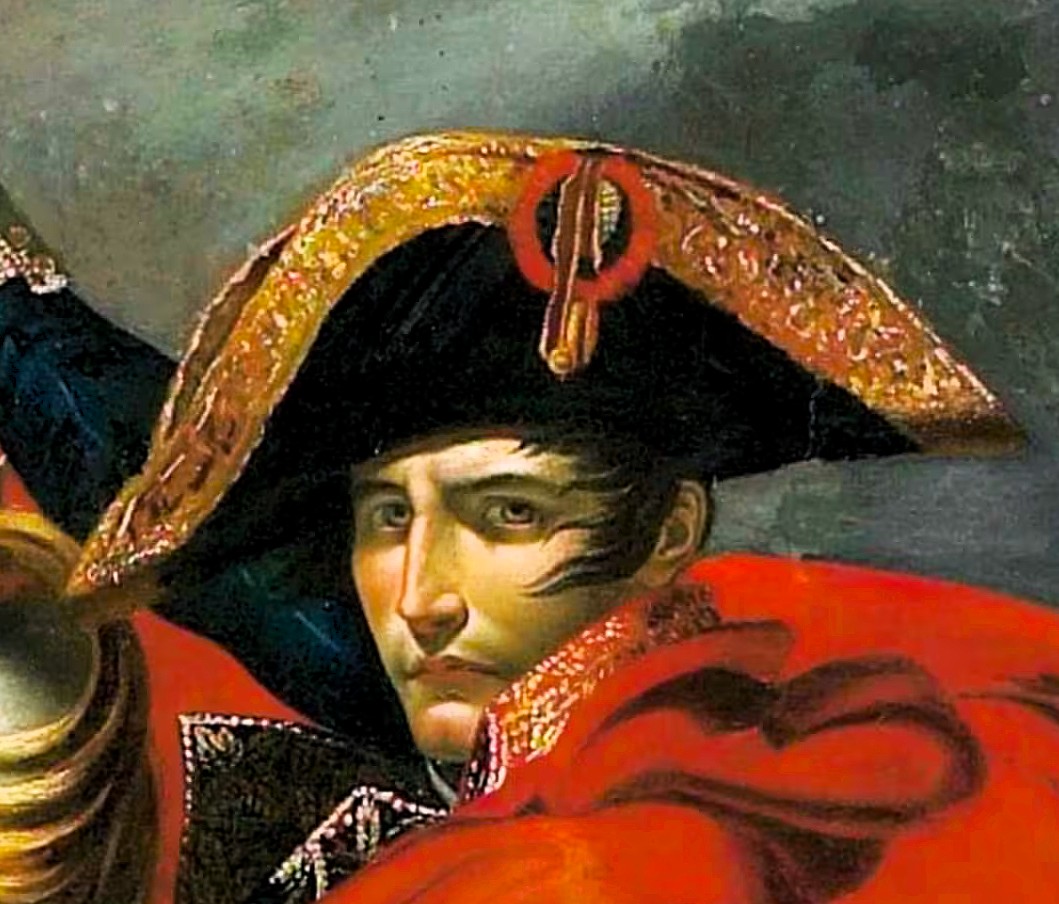
But it is not only statesmen/women who become icons. Also, artists, mainly rock musicians. For example, the deceased Elvis Presley (although some fans believe he is still alive) is worshipped in an almost religious manner.
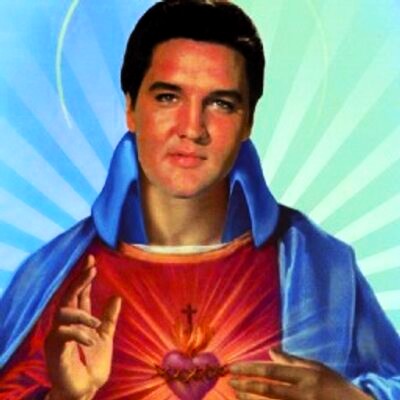
Another icon is the prematurely deceased and charismatically unbridled Jim Morrison, singer and lyricist for the rock band The Doors, who died at the age of 27 in a bathtub in Paris. A death as legendary as his short life story. The iconic image of Morrison is called The Young Lion and was taken by photographer Joel Lee Brodsky, who made several of the covers for The Doors ' records.
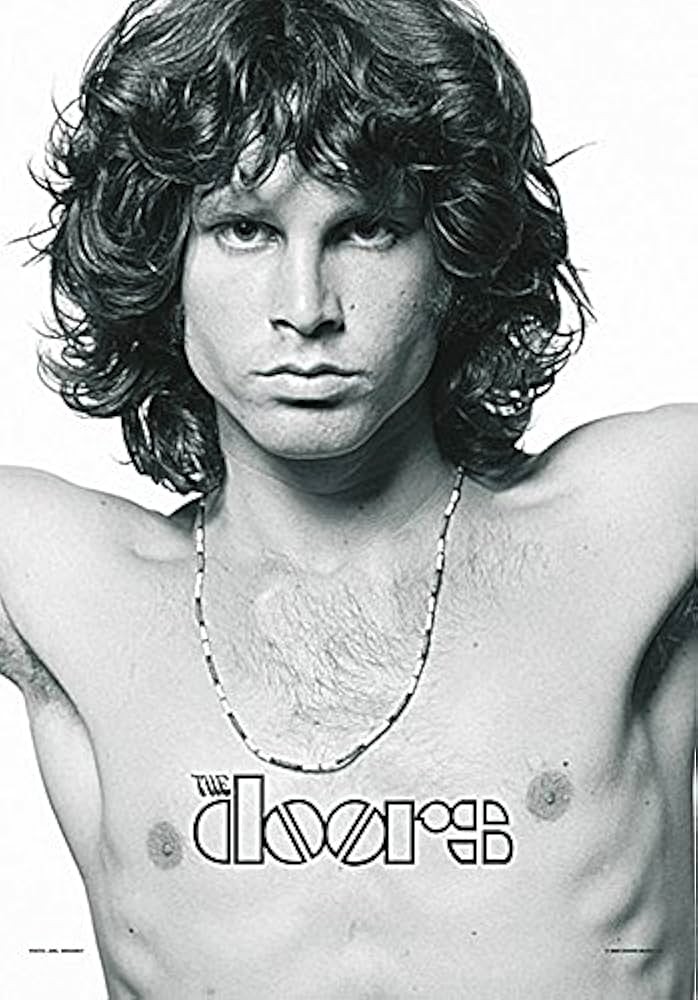
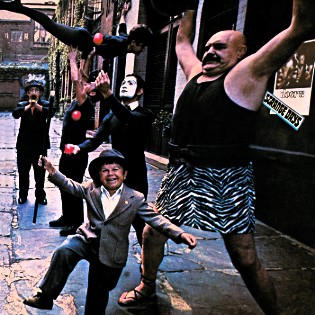
Morrison's death came exactly two years to the day after the death of Rolling Stones guitarist Brian Jones and about nine months after the deaths of Jimi Hendrix and Janis Joplin. These musicians died at the age of 27 and have thus given rise to a multitude of myths and conspiracy theories.
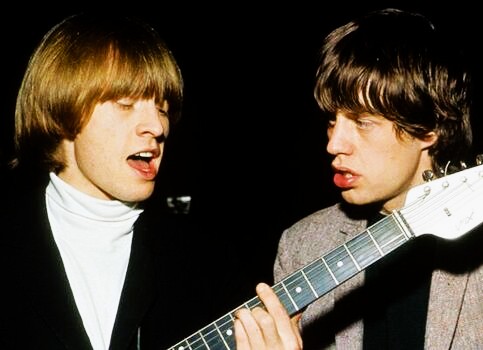
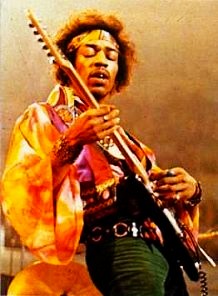

These young musicians became icons because of their charisma and knowledge, this unlike other idols created for reasons of power politics. For example, the unpleasant young Nazi and hooligan Horst Wessel.
He developed a friendship with Joseph Goebbels and after Wessel was killed by two members of the Communist Party at the age of 23, he was transformed by his diabolical friend into a Nazi national saint. Wessel's main reason for fame, apart from a certain musical talent and for having beaten up opponents, was that he had written the Horst Wessel song, which became the national anthem of Nazi Germany alongside Deutschland, Deutschland über alles.
In fact, the melody was stolen from a song of unknown origin, the so-called Königsberg song, which was sung in one of the militant Freikorps of which Wessel had been a member. Books and plays were written and films were made about Horst Wessel, statues were erected and inspiring pictures were spread.
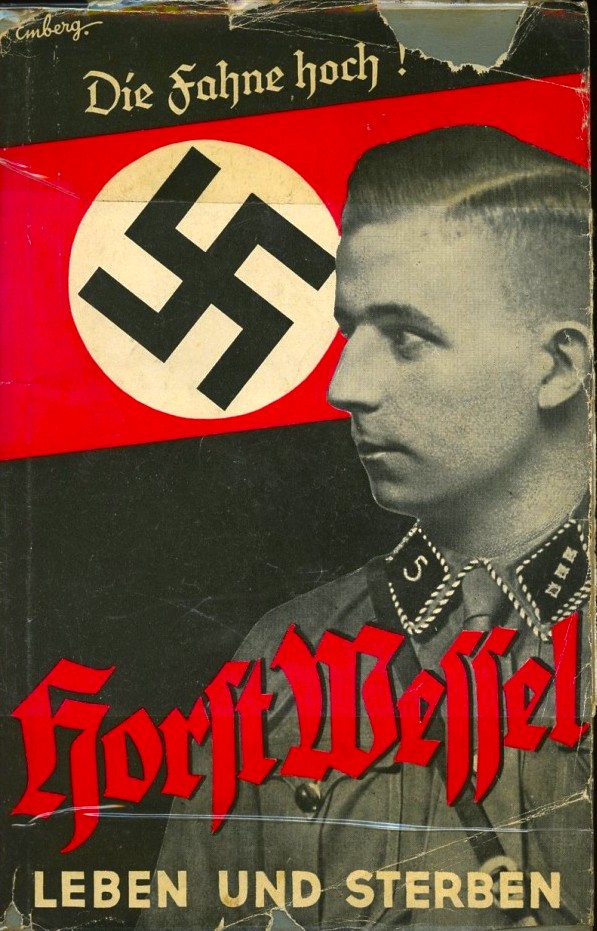
Other more or less politically constructed youth heroes appeared in the Soviet Union and the Chinese People's Republic. The Russians had their Pavlik Morozov and the Chinese their Lei Feng.
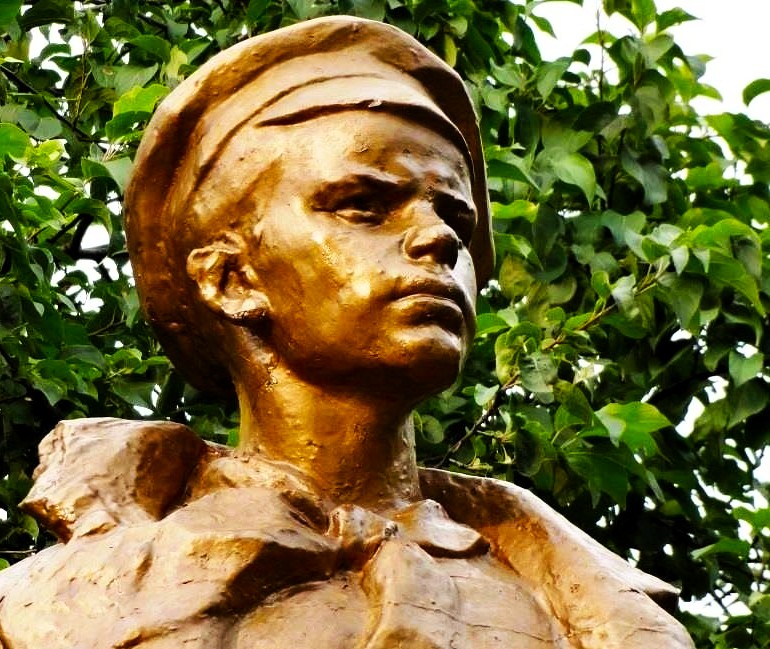
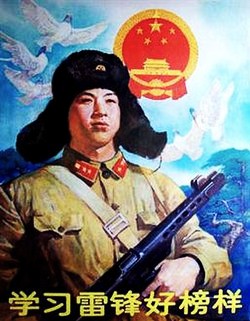
The myths surrounding these mostly fabricated heroes are probably just as inadequately truthful as the halo of heroes surrounding other previously worshipped, but later often fallen national heroes.
From school, I remember the stories about the Swedish national founder Gustav Vasa, who was then still worshipped as the father of the nation and a patriotic symbol. Something that was confirmed by Carl Milles' powerful sculpture from 1925, which in painted oak greets the visitor at the entrance to the National Museum and under which the motto “Be Swedish” is inscribed.
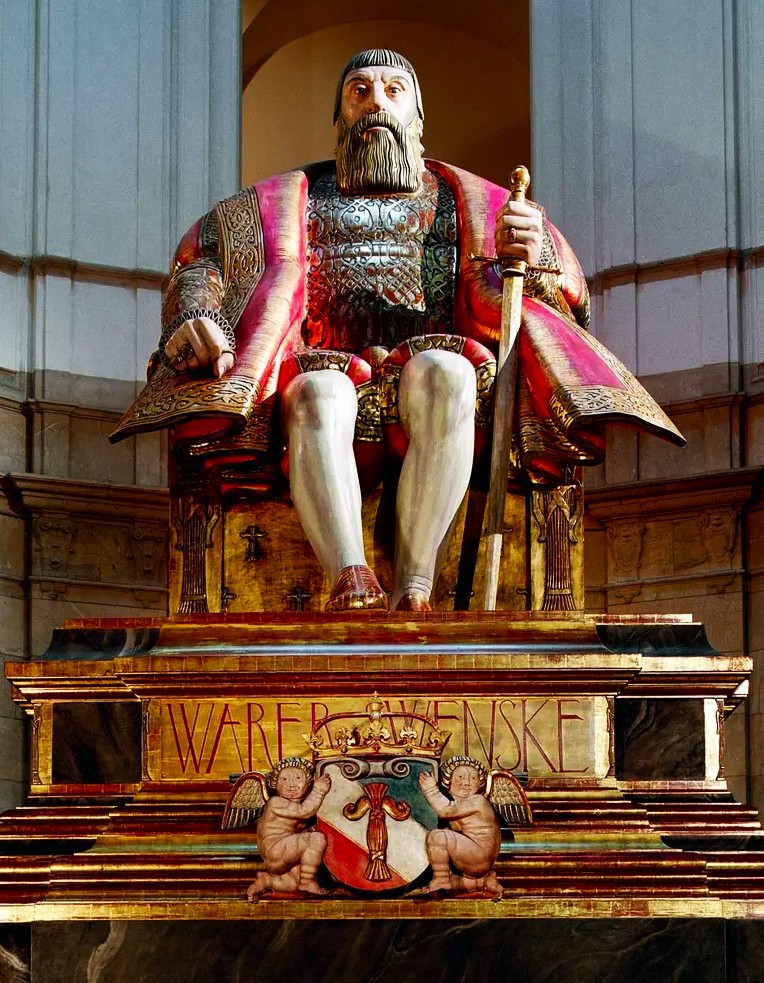
Nowadays, it has been established that Gustav Vasa was a ruthless realpolitiker, who with brutal methods got rid of his opponents and used ruthless propaganda to consolidate his power.
After previously giving sparkle to various brands, the royals’ propaganda opportunities have diminished in Sweden. What remains is probably only King Oscar's Sardines that are manufactured in Norway and bear the name of the Swedish King Oscar II, because he at the time of the sardine brand’s introduction ruled over both Norway and Sweden.
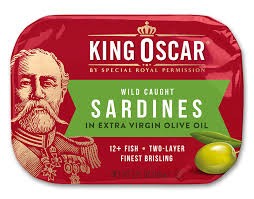
When Norway was separated from Sweden, the Swedes instead produced King Gustaf's Sardines, with a nicer packaging.
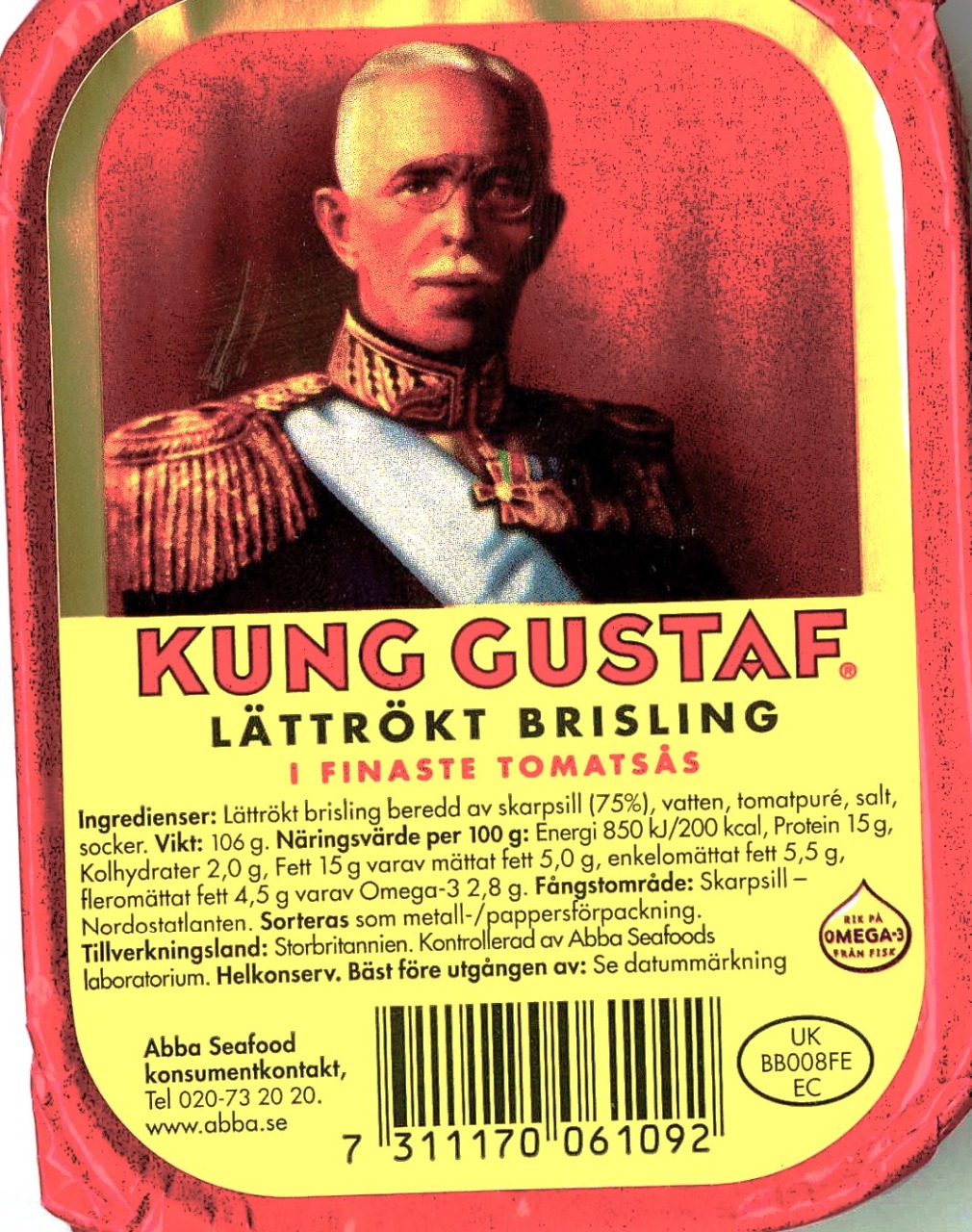
The fact that royalty is no longer a selling brand is perhaps one reason why the Wasa Crispbread, which is exported all over the world, has now removed the portrait of the old nation father and tyrant and replaced him with just the trademark text, which for many has lost its original meaning.
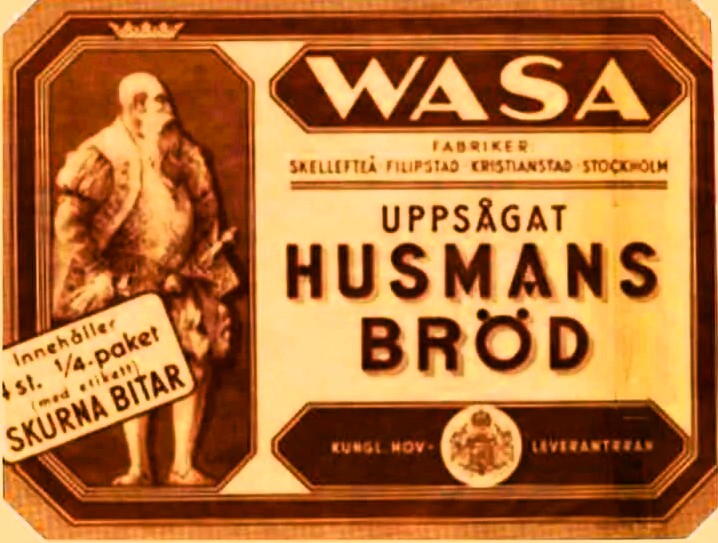

If an image becomes iconographic, it can facilitate the sale of the product behind it. Something that also applies to politics. Take, as an example, Barak Obama's election poster, called the most effective American political poster since Uncle Sam Wants You.
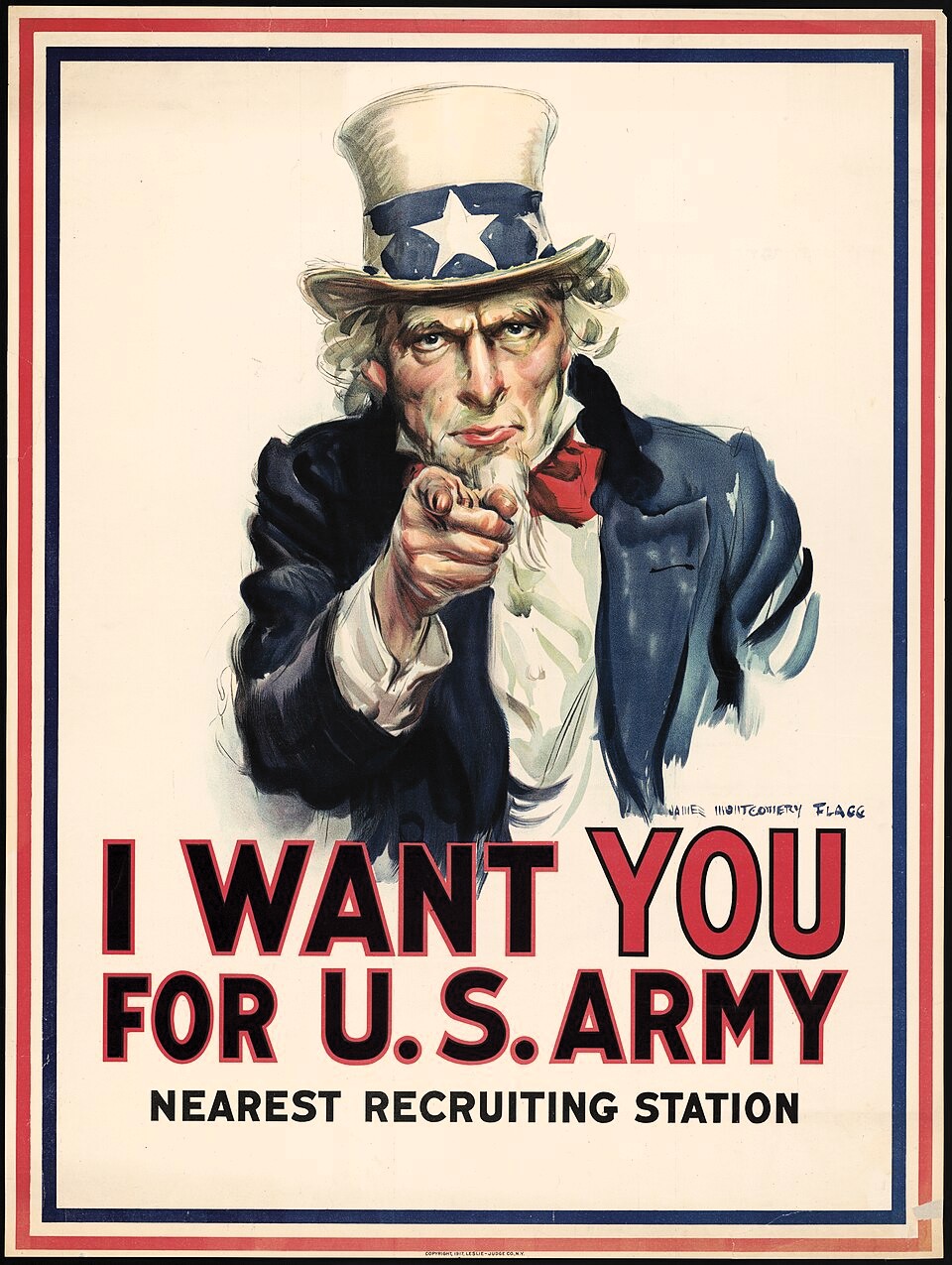
Obama's election poster was so striking that it obtained a large number of imitators and perhaps also contributed to Obama's election victory.
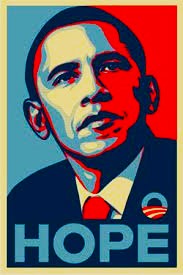
That image was also based on a photograph and Shepard Fairey, who created it, had not asked for permission to use it as a model. It was a photograph taken by a certain Mannie García, the result of Fairey's indulgence was a long legal process that Fairey eventually lost.
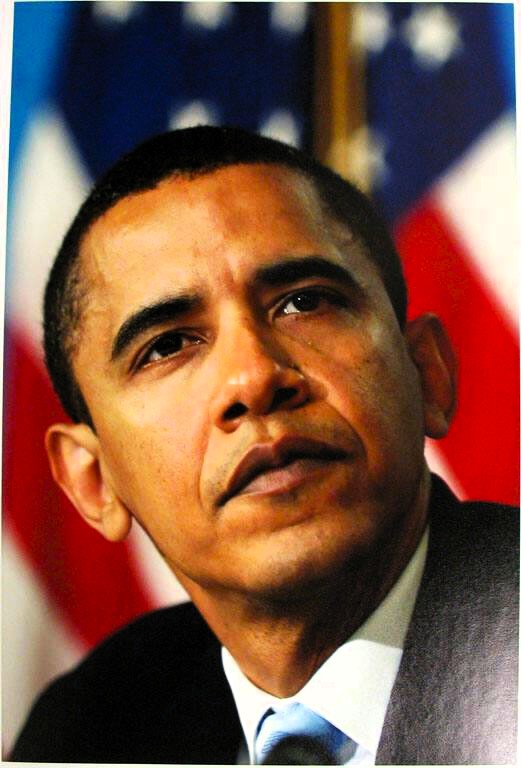
He was sentenced to two years of probation and a $25,000 fine. However, Fairey's artwork was a stroke of luck and has now for several years been a source of both satire and inspiration.
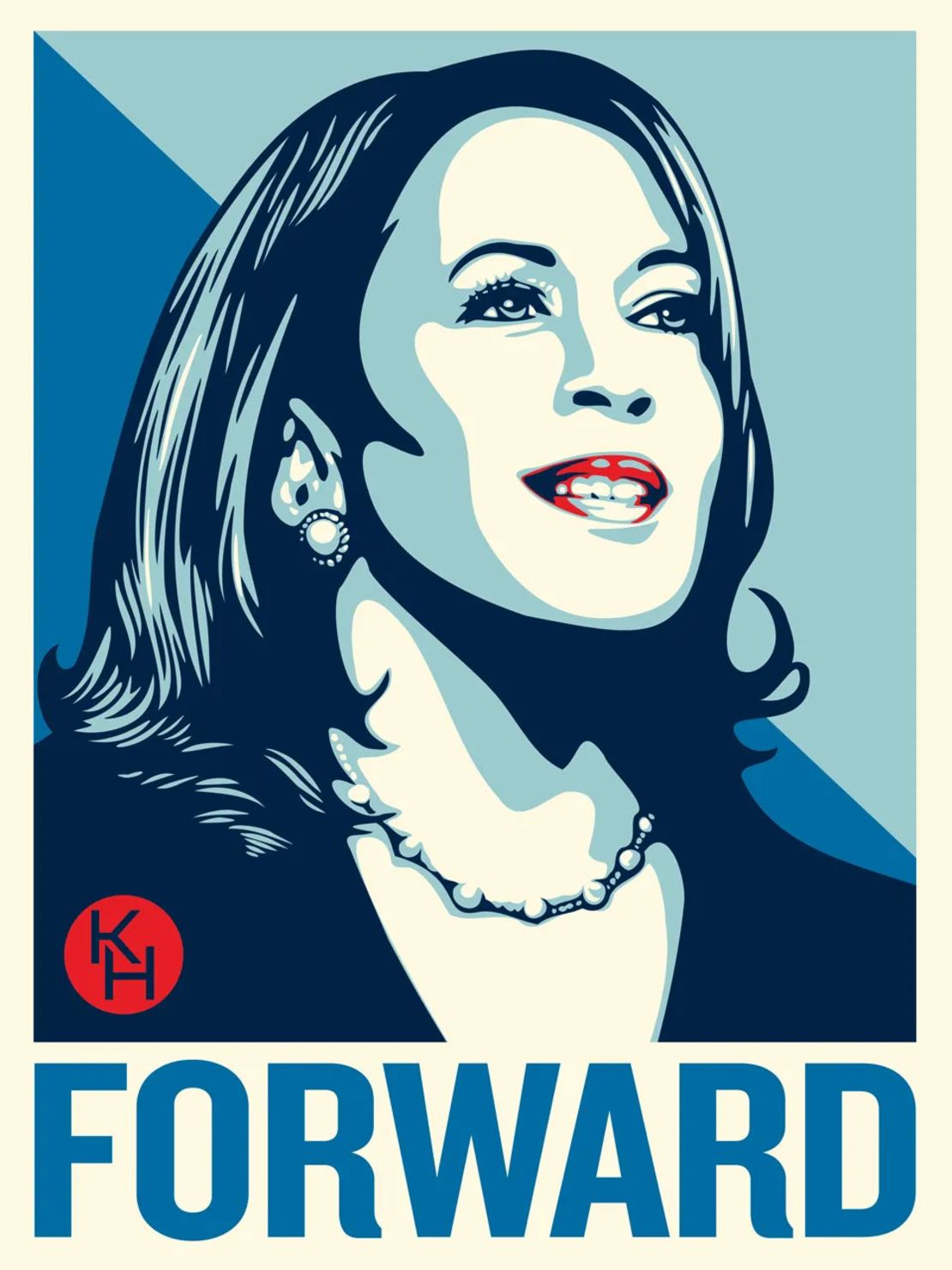
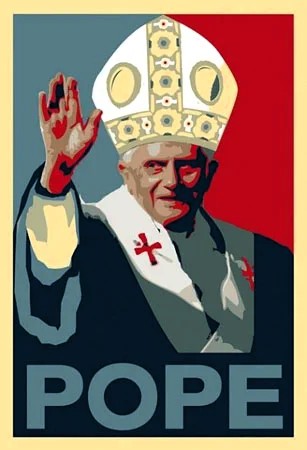
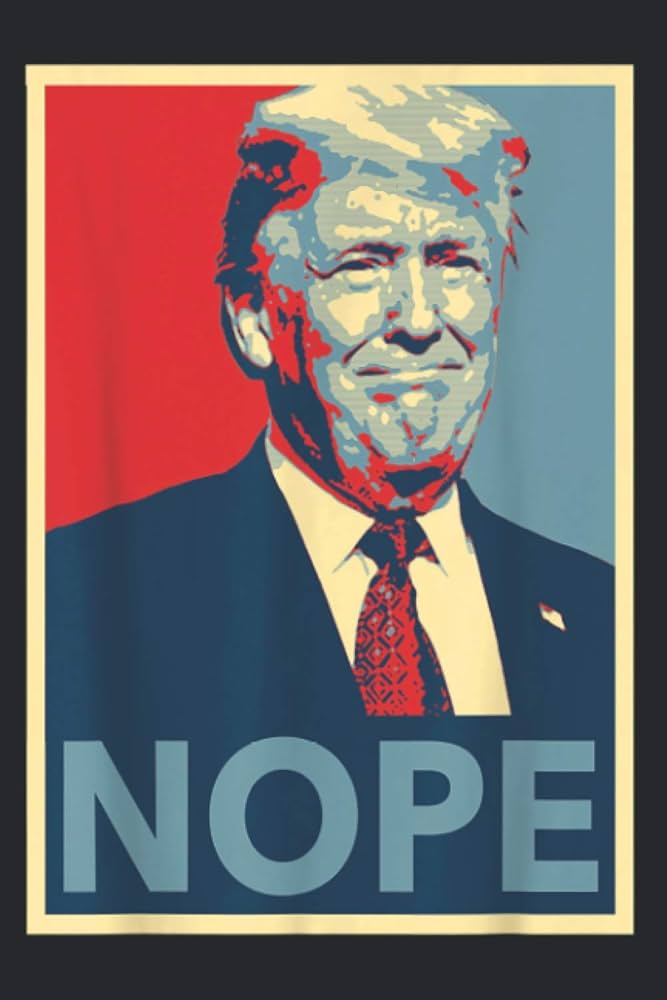
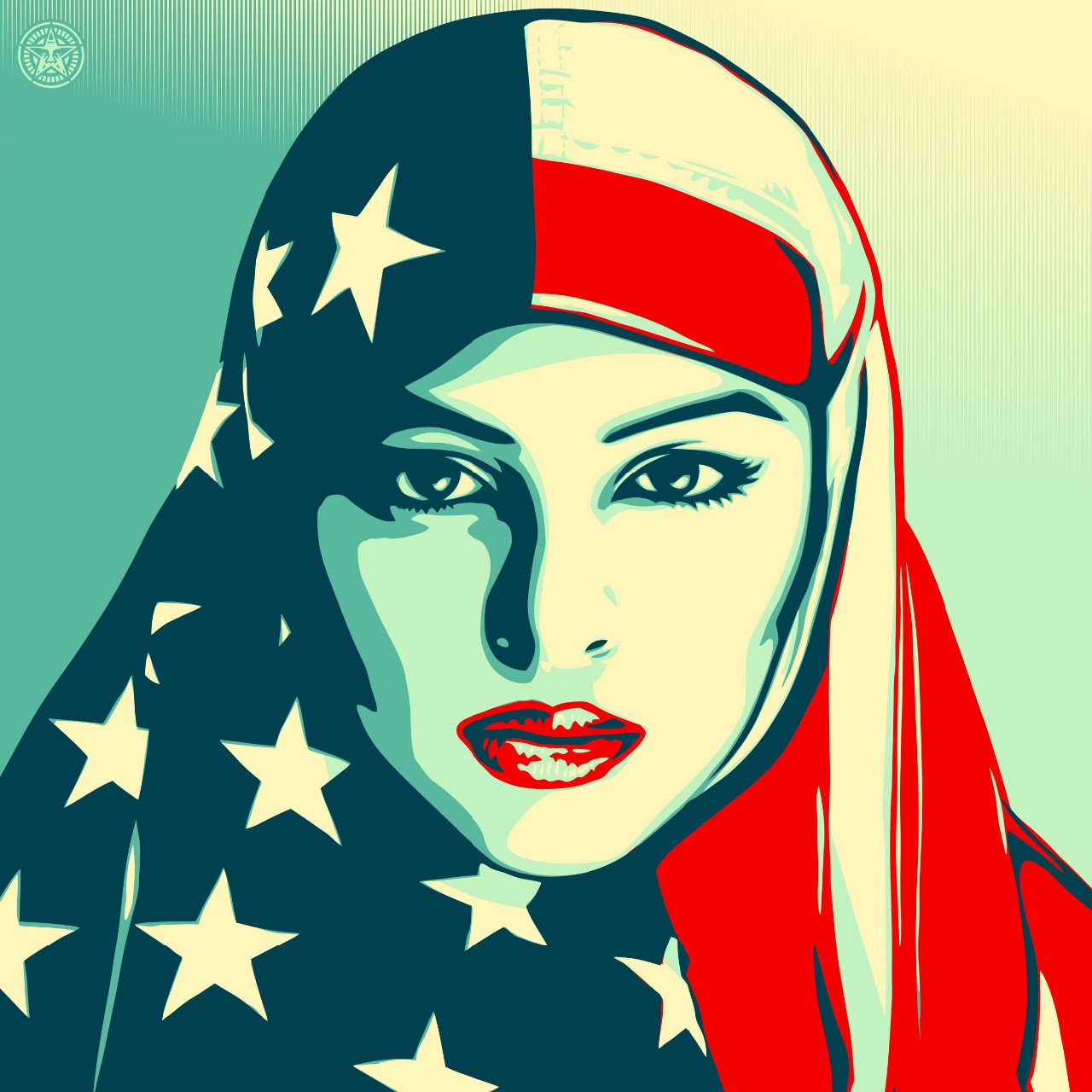
On reflection, it is possible that Fairey also was inspired by various commercial predecessors. Obama's abstracted face makes me think of Kentucky Fried Chicken's logo, with its stylized image of its founder Colonel Sanders.
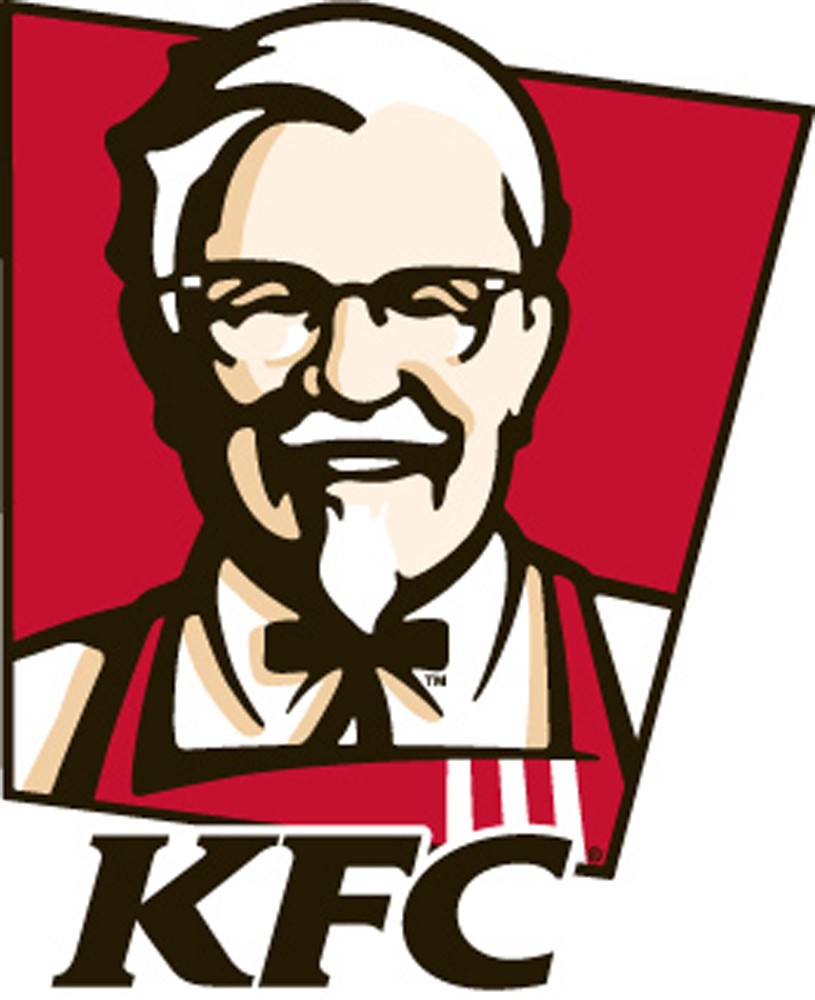
Colonel Sanders' appearance brings to mind some retired Confederate officer who now cooks excellent food. In fact, Harland David Sanders had not been a military man at all. In his case, the designation “colonel” was an honorary title that governors of various states might give to citizens who have earned gratitude for something they done for their state.
Sanders had worked on the railroad, as an insurance agent, gas station manager, partner in a steamboat company, and failed in a law firm, until finally, during the Great Depression, he began selling specially-breaded chicken pieces from a fast-food shed.
This humble beginning developed into an astonishing success story, and Sanders ended his days as a millionaire, always dressed as the cuddly man he portrayed himself to be—dressed in an elegant, impeccably white suit, with a black bow tie. He dyed his hair and beard white, until at last they really were.
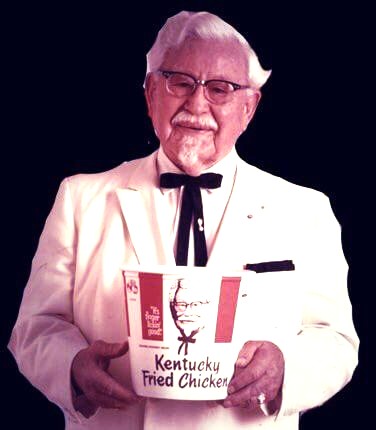
Actually, Colonel Sanders' trademark was not a scam. He was, in a sense, a Southern colonel who devoted himself to cooking. It was different with two other well-known brands, which also alluded to a rural, homely South, where black slaves lived in peace and prosperity with their masters, to whom they served excellent food.
In the 1940s, chemists Huzenlaub and Heron Rogers had discovered a method to pre-treat rice so that it cooked faster, but retained all nutrients. Their rice variant began to be marketed in 1945, along with other products, by the company Converted Rice Inc and under the name Uncle Ben. They were almost immediately a huge success.
The brand depicted an elderly African-American gentleman with the same bow tie as Colonel Sanders. However, no Uncle Ben existed, even though Converted Rice Inc. at first claimed that Uncle Ben had been a chef and rice producer whose products had been so excellent that he became one of the U.S. Army's top rice suppliers.
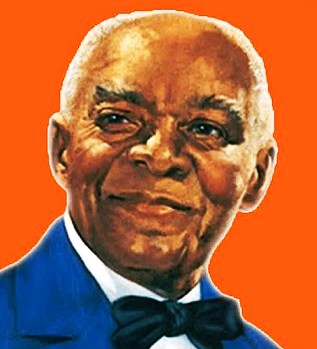
Perhaps Converted Rice Inc. was inspired by the success of Chris Rutt and his partner Charles Underwood with their brand – Aunt Jemima, which among other things sold syrup and flour for pancake batter. They had in 1888 bought a small mill in St. Joseph, Missouri, but had not found a convincing brand for their products. The success came after Rutt noticed a rather grotesque vaudeville poster, which inspired him to use a smiling African-American Mamy as the company logo.
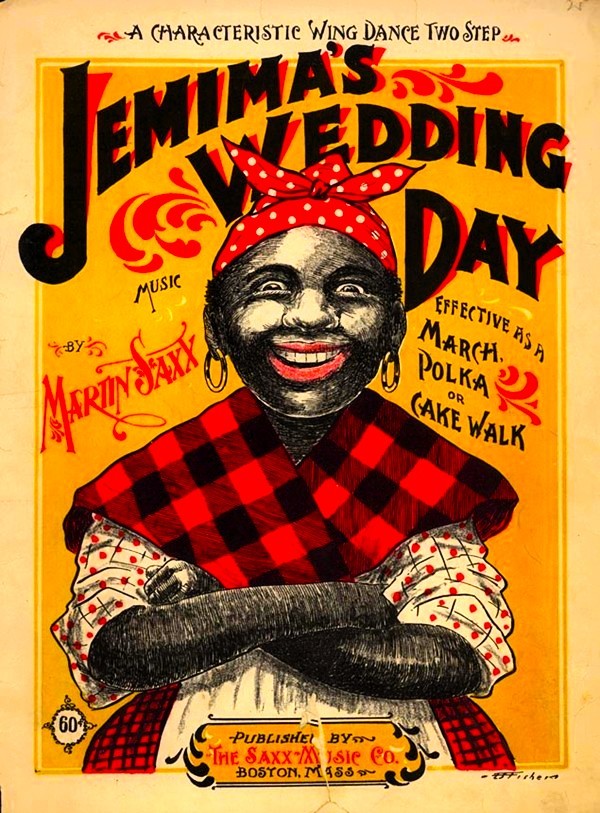
The grotesqueness of the vaudeville poster was moderated – Aunt Jemima became a smiling and motherly lady, who could later be used as a promotion in film clips and television commercials.
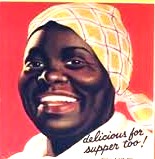
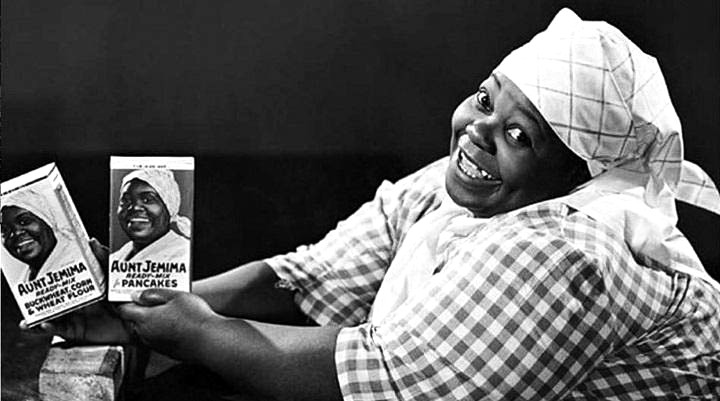
Both Uncle Ben and Aunt Jamima have recently come under heavy criticism for being successful attempts to market products with the help of racially prejudiced and fabricated ideals of a harmonious South.
Similar criticism has also befallen the French Banania, a popular chocolate drink that is mainly distributed within France, with ingredients such as chocolate, banana flour, honey and sugar. Banania began to be marketed during the World War I and its owner distributed large quantities of Banania to the front under the slogan "to our soldiers an abundant nutrient, easy to preserve and store."
The company's owner, Pierre Lardet, was also looking for a selling, iconic image, both convincing and exotic, given the chocolate and banana ingredients. He concluded that the best brand would be a tirailleur Senegalese, a member of the popular infantrymen from French West Africa. Banania was then marketed along with the image of a happily smiling Senegalese enjoying his Banania during a break in the fighting .
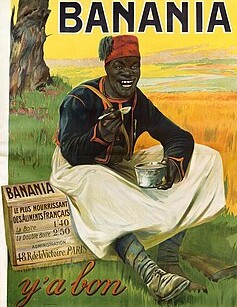
The picture was accompanied by the text Y'a bon, “it is good”, to allude to the pidgin French that the Africans were believed to speak. In fact, the expression was made up. After the war, the depiction was simplified to a close-up of a happily smiling Senegalese soldier, still with the text Y'a bon.
The philosopher and psychiatrist Franz Fanon, born in Martinique, did in his book Black Skin, White Masks present the Banania advertisement as an example of how commercialism objectifies people. The smiling Banania man's silly, benevolent smile infantilized him by turning the Africans into children, like the kids who were Banania's main consumers. Like a child the Banania man was unable to communicate in correct French and this fictional Senegalese accordingly used the childish and imaginary phrase Y'a bon.
.jpg)
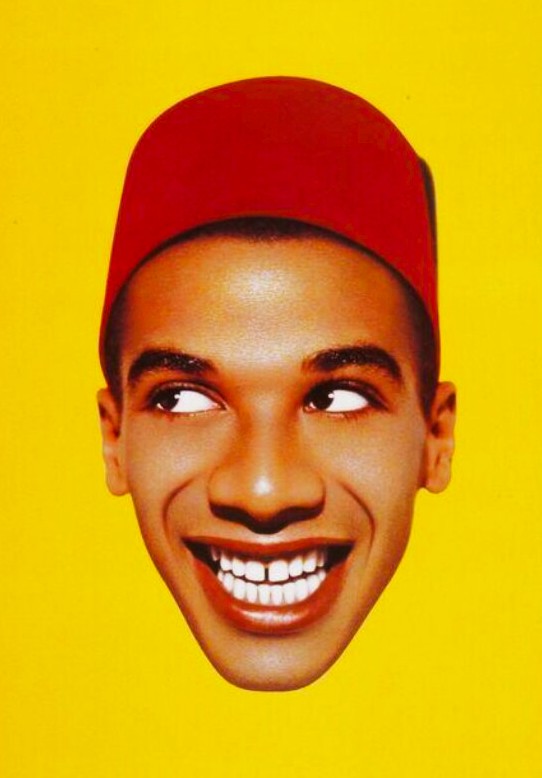
From my childhood, I remember how Africans were often used in advertisements for chocolate, coffee and licorice, among other things. In my hometown there was a shop that had a large coffee grinder in its display window and sold coffee and tea in bulk. I thought the store had a wonderful scent and remember an advertisement made by the Danish artist Aage Sikker Hansen that I am not bothered by at all, but instead consider to be a real work of art.
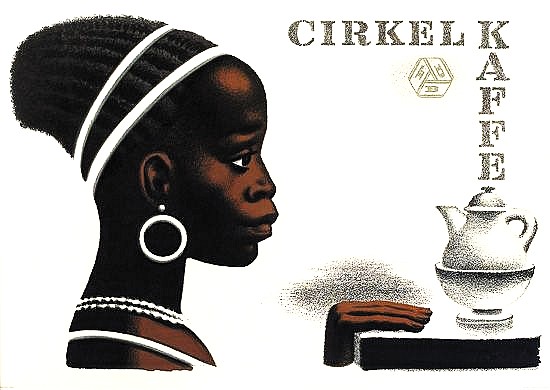
The figures and slogans of commercialism are ever-present. Some of them can be grotesque and annoy me with their ugliness. One such icon is McDonald's Ronald McDonald, “the hamburger-happy clown"”, who in 1963 made his debut in American television commercials at a time when the clown Bozo's show was the most popular children's program.
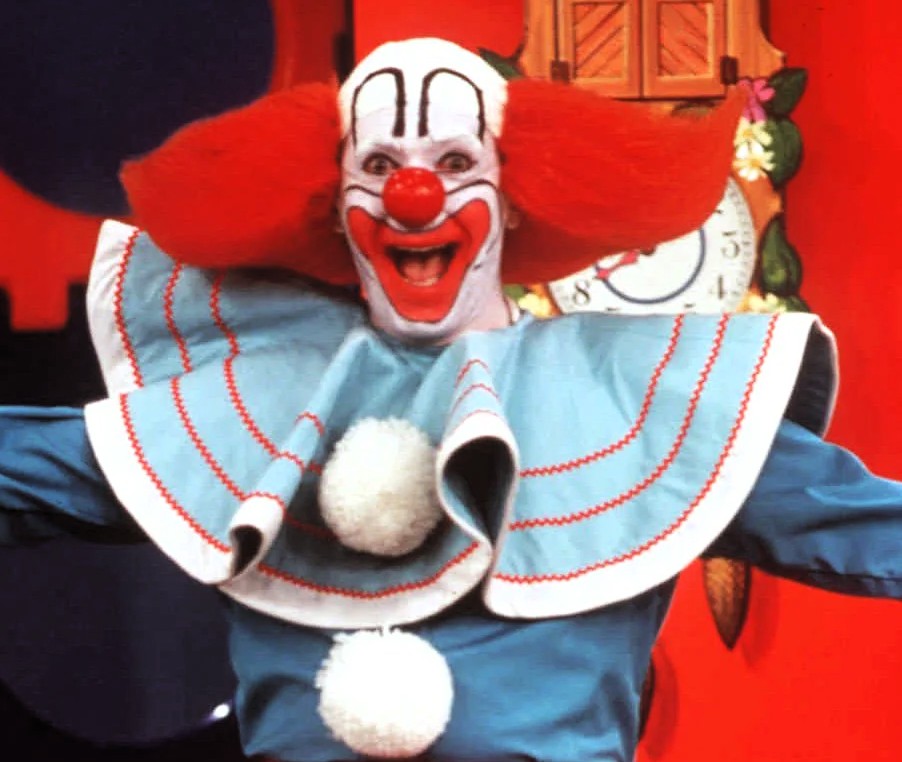
For many children, however, the heavily made up and overly intrusive Bozo became a horror figure, something that has been reflected in a variety of masks and films.
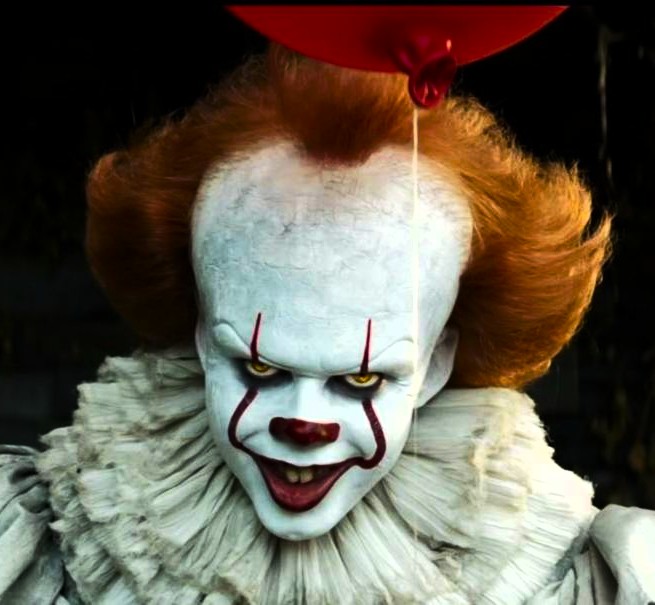
McDonald's TV clown was not entirely successful. He had too much of Bozo about him, so the burger chain hired Coco the Clown. Actually, Michael Polakov, a Latvian-born circus clown counting upon an ancestry from a family with a solid clown background. Coco was what in classical clown tradition is known as an "August" and he transformed the McDonald figure into a more colourful and less sinister figure than Bozo.
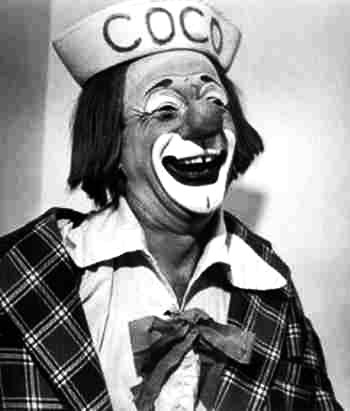
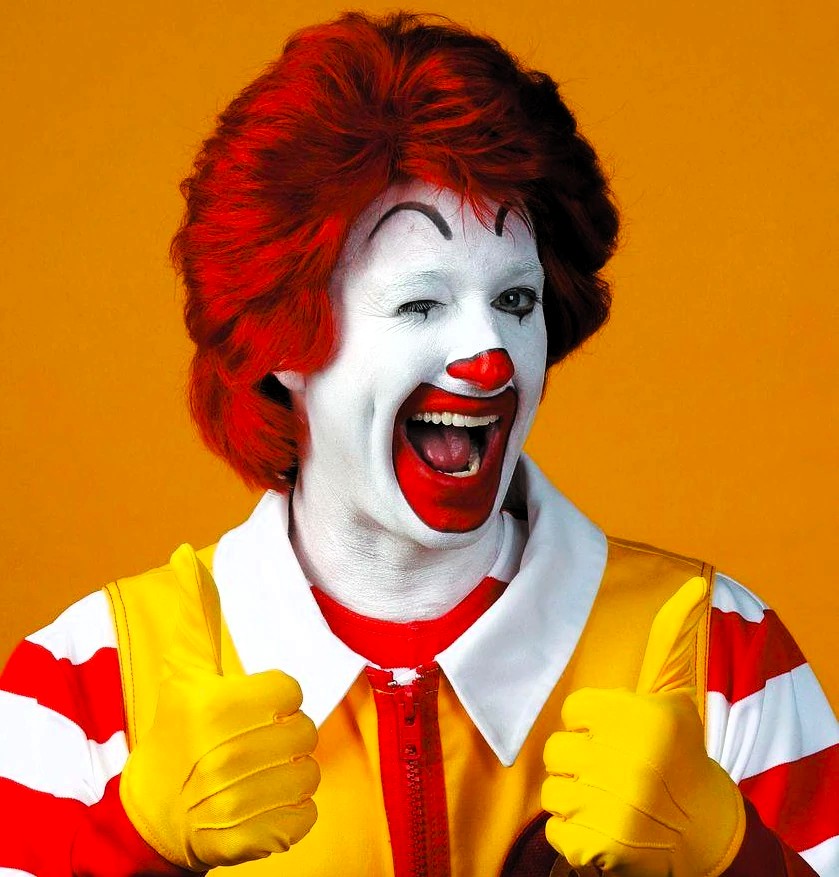
However, Ronald McDonald appears to be significantly more fake and threatening than a real circus clown. I believe that clowns as practitioners of a venerable entertainment tradition belong in the circus ring and nowhere else, least of all should they be abused for commercial interests.
The clown tradition is destroyed when it is commercialized. Something Santa has also experienced when he became abused by business interests, as when the Coca Cola Company transformed him with the help of Haddon Sundblom, born in Michigan but with Swedish-speaking parents from the Finnish Åland archipelago between Seden and Finland.
Sundblom's Santa Claus had been mainly inspired by a poem by Clement Clarke Moore, written in 1823. In Moore's poem, Santa Claus comes flying with a sleigh pulled by his reindeer – Dasher, Dancer, Prancer, Vixen, Cupid, Comet, Donder and Blitzen. He dives into the chimney and places his presents around the Christmas tree.
He had a broad face and a little round belly
That shook when he laughed, like a bowl full of jelly.
He was chubby and plump, a right jolly old elf.
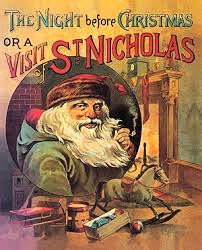
Moore's Santa was small in stature, and had become sooty during his journey through the chimney, more fairy-like than Haddon Sundblom's portly, large and Ho! Ho!-chuckling Santa. A commercialized figure with elements from several directions – for example, from the Swedish artist Jenny Nyström's friendly and charming Santa, combined with the Dutch Saint Nicholas and the Russian Father Frost.
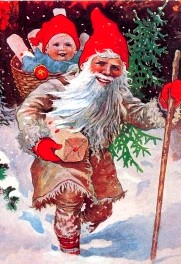

.jpg)
The result was the unbearably chuckling fat guy who has plagued us ever since he made his entry into the Coca Cola Company in 1931.
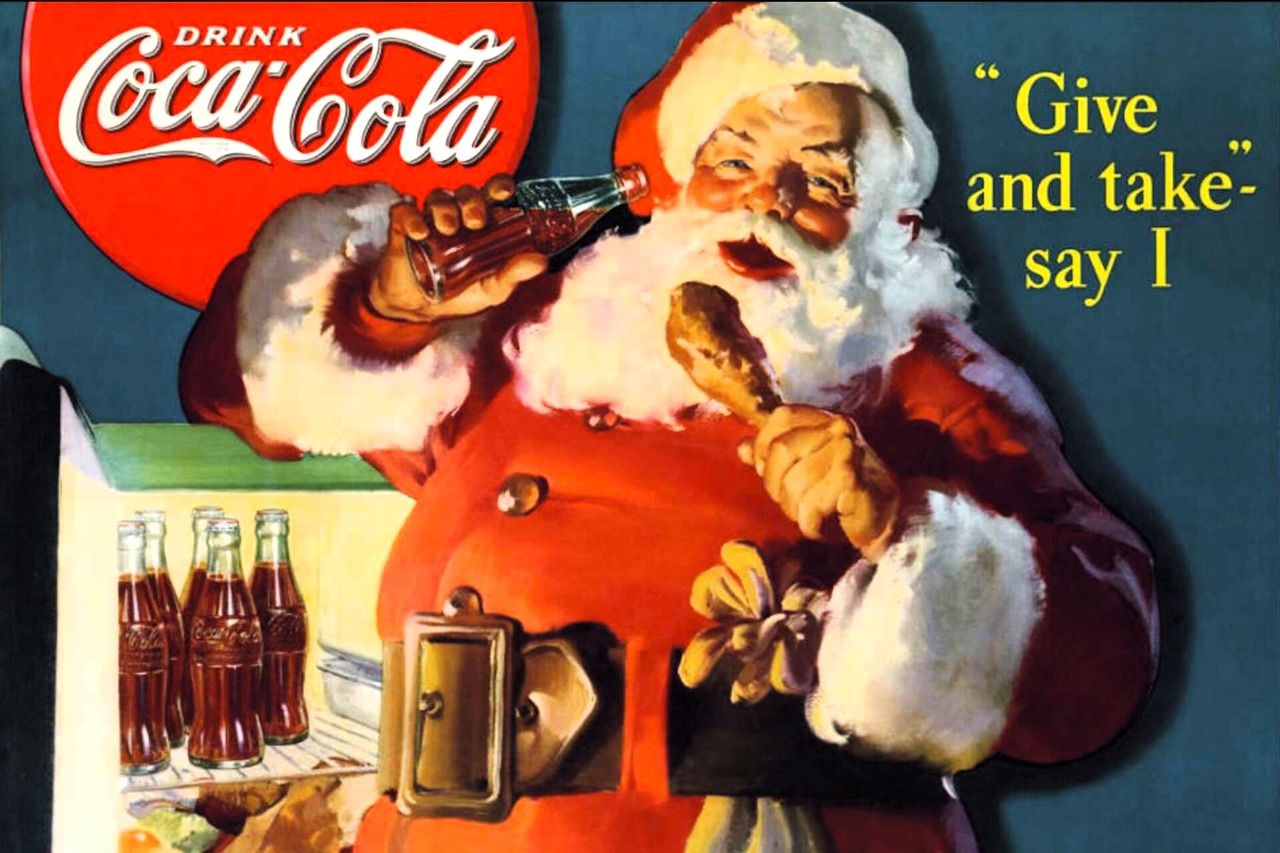
In Sweden, Santa often comes for a personal visit and if he then wears a mask, he can unfortunately destroy the illusion of being a real person and also arouse fear in the smaller children.
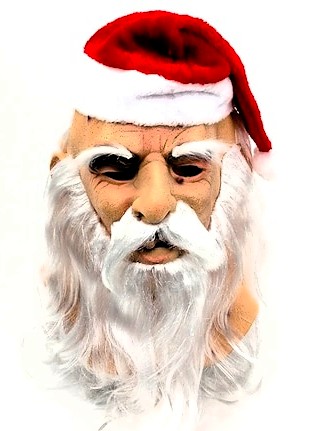
Masks often depict iconographic figures, such as certain politicians and monsters. They can sometimes be just as terrifying, both of them.
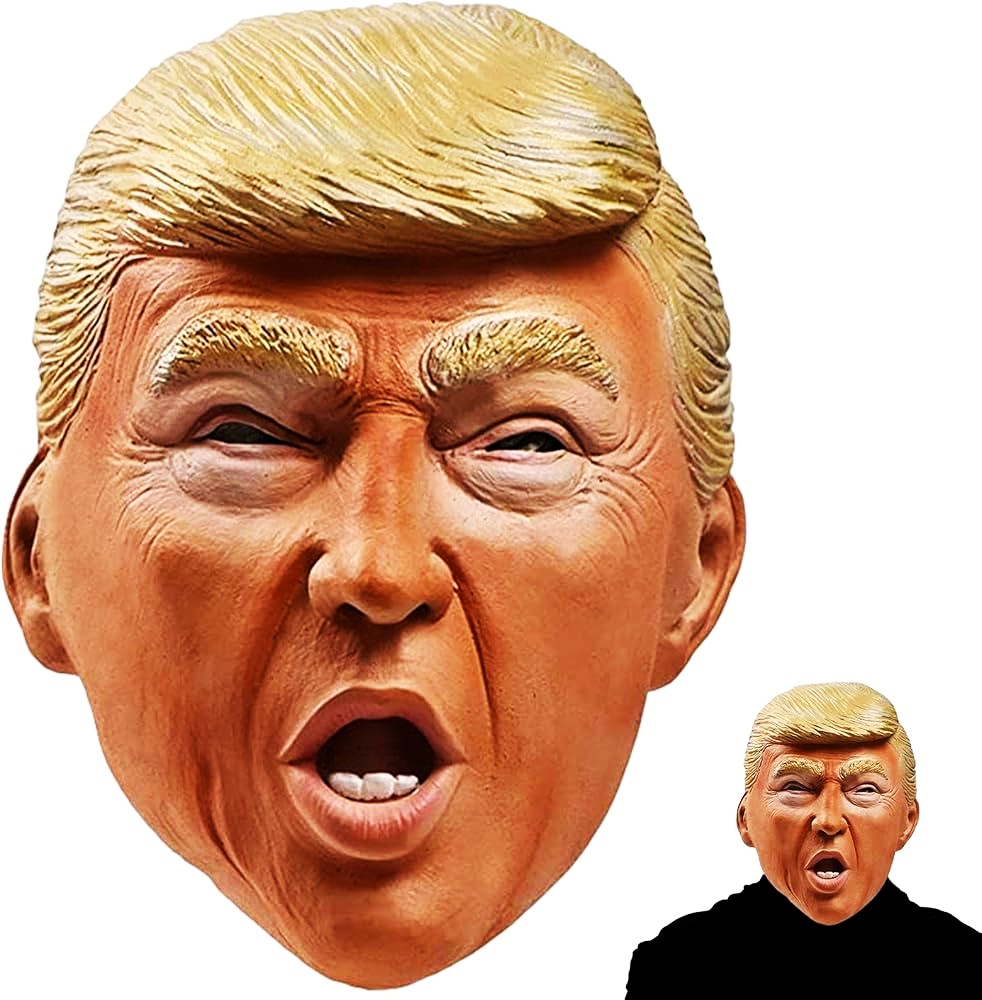
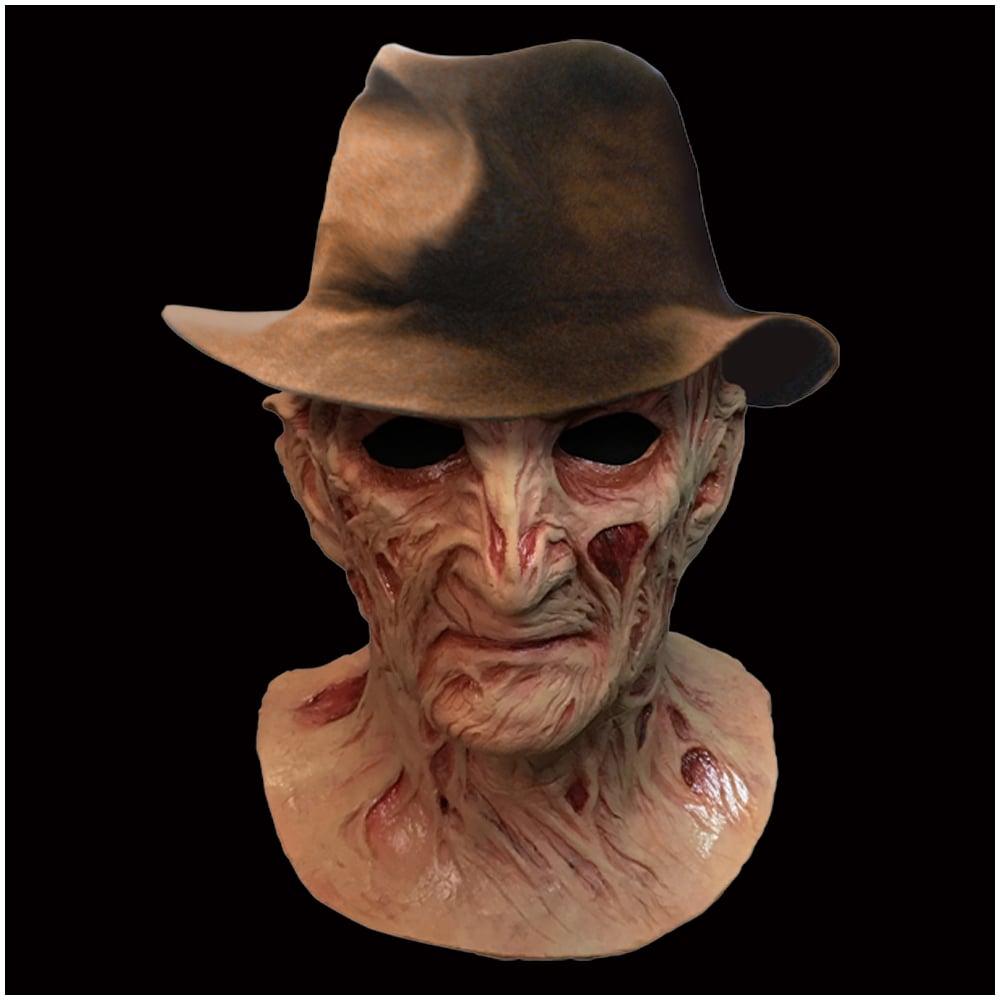
Also well-known are various carnival masks, such as those in Venice, which also were even worn on a daily basis, to disguise persons who for various reasons wanted to remain anonymous.
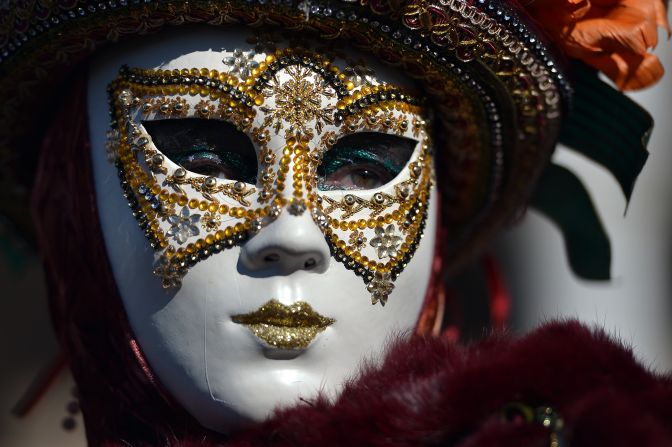
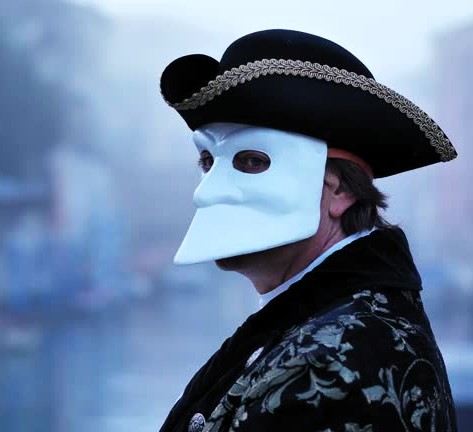
By hiding the personality, masks could serve shady and criminal purposes. As in an 18th century etching by Daniel Chodowiecki where masked gentlemen molest a terrified young girl.
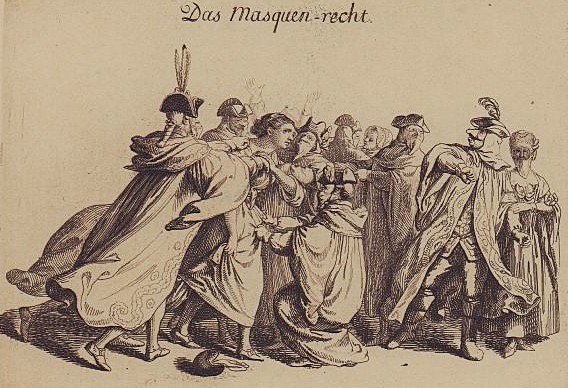
A scene that makes me think of the wealthy perverts depicted in Kubrick's Eyes Wide Shut.
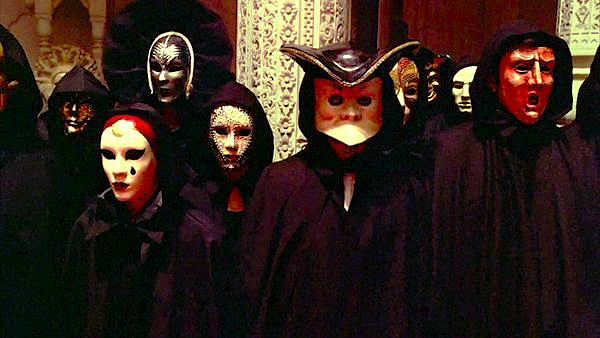
Some masks have become icons as well. For example, the mask is The Scream, which is the one that is sold the most around Halloween. The mask finds its origin in a schlaser film by Wes Craven, whose films a horror movie habitué like me never has been particularly attracted to. Although I occasionally watch such films, I am more fascinated by creeping, psychological horror than the overly effect-seeking slasher - and splatter tradition which Wes Craven's films are part of. As usual, The Scream is about a mask-wearing mass murderer.
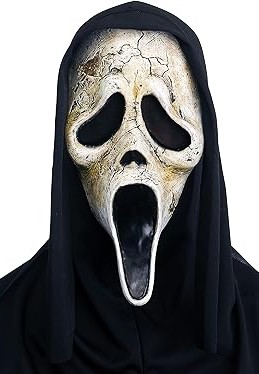
It is often said that the mask was inspired by Edvard Munch's The Scream, something its creator, Loren Gitthens, has denied.
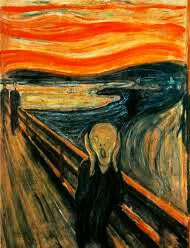
Gitthens is probably right in his denial, especially as he has pointed to other more obvious sources of inspiration, such as the poster for Pink Floyd's The Wall and some ghosts appearing in the Scooby-Do cartoons, especially in an episode called Unmasking the Ice-Cream Flavoured Phantoms.
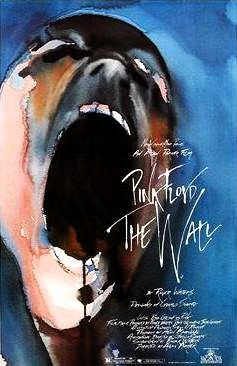
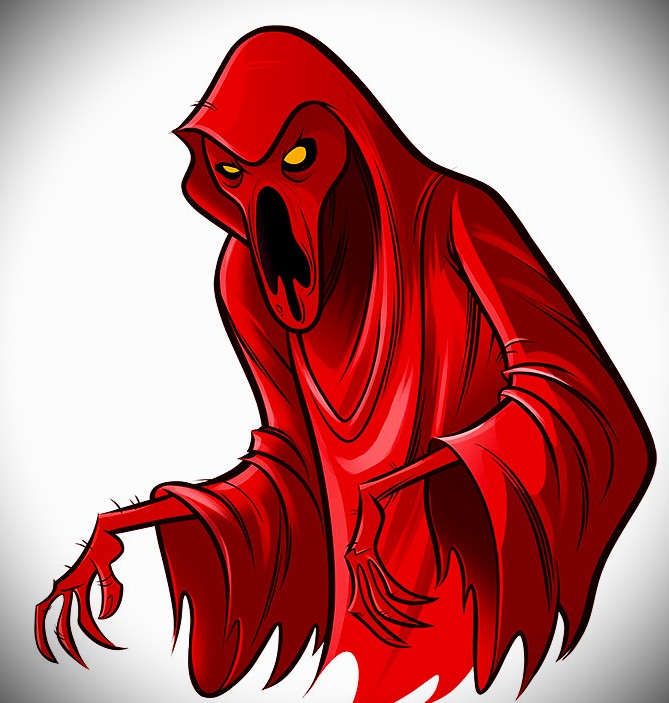
Gitthens also mentions a short film that I remember from my childhood when I saw it on TV and since then have had a hard time forgetting it, just like another horror sequence – Walt Disney's first Silly Symphony from 1929.
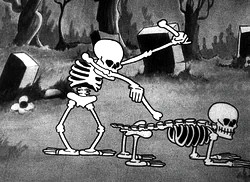
https://www.youtube.com/watch?v=gm744AGvknU
The short film Gitthens refers to – Dave Fleischer's Betty Boop – Snow White from 1933, is better than Disney's dancing skeletons and is now considered one of the highpoints of early film animation. It was mostly created not by the brothers Max and Dave Fleischer (who is named as the director) but by Dave's assistant Roland Crandall.
What makes that short film special, aside from its surprising, surrealist effects, is Cab Calloway's interpretation of St. James Infirmary Blues. Calloway's specific singing and dancing style constitutes the basis for the short film's central scene, which takes place in a lugubrious cave. A cinematic experience far superior to Wes Craven's The Scream.
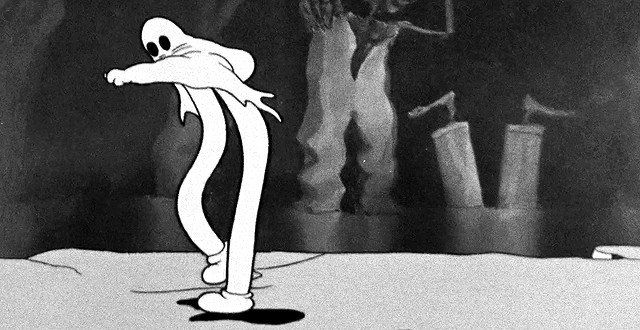
https://www.youtube.com/watch?v=cKOSJ5AAwfc
Cab Calloway appeared in several of Fleischer's short films and for a time in the thirties he was a trendsetter in several areas, as an orchestra leader and songwriter, but also as a distinctive scat singer, a skilled and extremely original dancer and not least a fashion lion, who through his extravagant zoot suits, inspired the style of clothing and demeanour of a number of Harlem's radical youth.
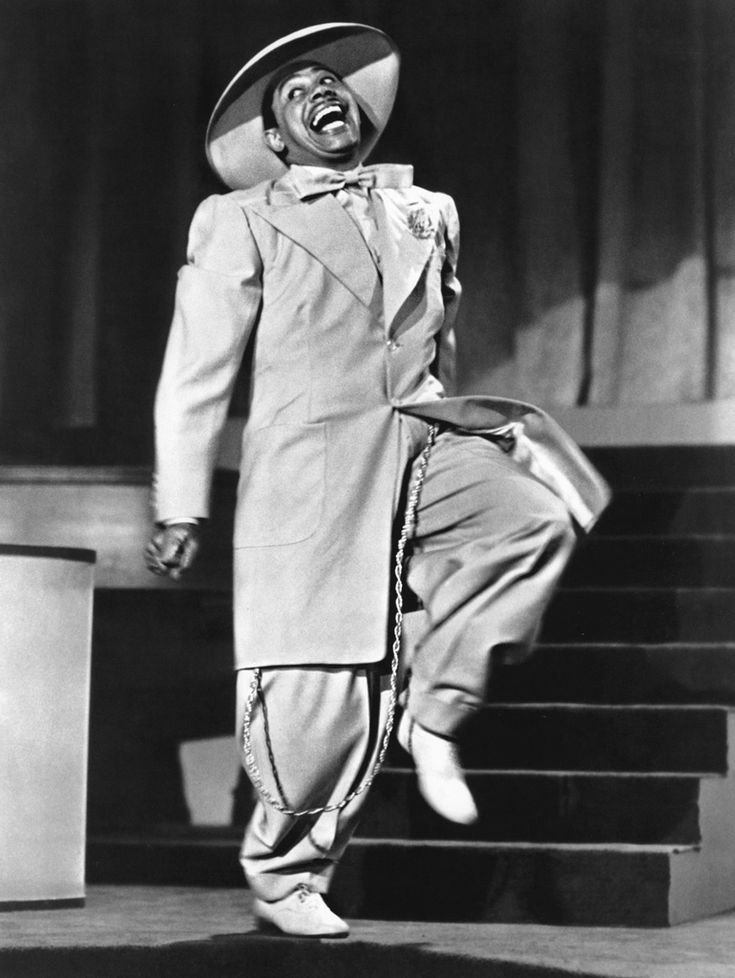
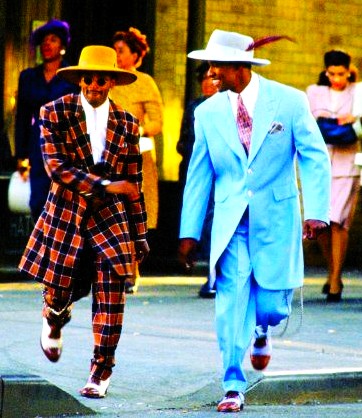
Not only has Wes Craven's The Scream inspired a popular mask, but also the Guy Fawkes mask, which is not worn for Halloween, but has inspired anarchists and other radical youth, originates from a movie – James McTeigue's film V for Vendetta, a dystopian thriller from 2005, based on a 1989 graphic novel, written and drawn by Alan Moore and David Lloyd.
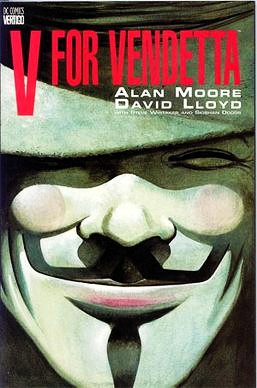
The novel and film are set in a near future where a fascist, totalitarian regime has subjugated Britain and is engaged in controlling the population through deceitful propaganda and more or less open surveillance, while unwanted individuals are imprisoned or executed, including immigrants, homosexuals and people of religious beliefs other than that of state-sanctioned “Christians”. V is an anarchist and masked freedom fighter whose growing crowds engage in protests and meticulously planned terrorism. They wear masks inspired by the appearance of Guy Fawkes, a Catholic rebel leader who in 1606 was hanged, drowned and dismembered after a failed attempt to blow up the British Parliament.
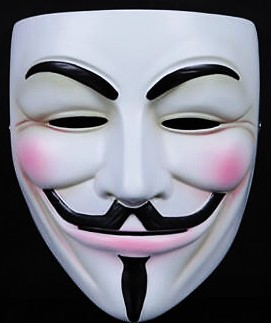
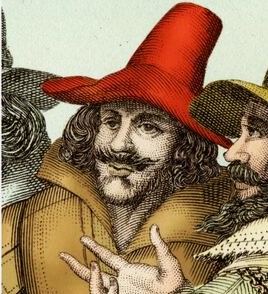
Other iconic figures that have come to characterize public awareness and appear in various contexts are the Aliens. In their current form – with small, humanoid bodies, softly smooth skin, and disproportionately large heads, endowed with huge almond-shaped eyes – they appeared after the American couple Barney and Betty Hill claimed they had been abducted by such creatures and taken to their spaceship.
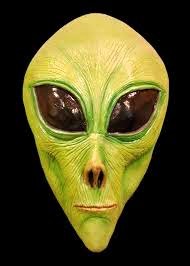
These aliens got their current, more definitive look after the author Whitley Strieber in his book Communion from 1987 described in detail his encounters with such creatures. The book was announced to be a “true story” and not like Streiber's earlier work as a novel. Communion became a bestseller that made its author both well-known and wealthy.
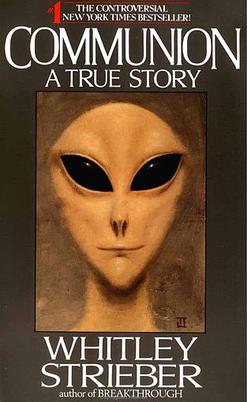
I assume Strieber, like some other unscrupulous authors, discovered that supposed non-fiction books about alternative history and sensational discoveries/experiences sell better than other texts.
There are several examples of this, not least Colin Wilson, who was previously appreciated by me through his interesting and well-written non-fiction books The Outsider and The Occult but he eventually ended up in a lucrative swamp of wild speculations and conspiracy theories. Not to mention Graham Hancock, who has become a millionaire in the same genre and in addition to the writing of several books, was provided with the opportunity to create speculative TV series that through their amateurish and supposedly "scientific" approach have contributed to a distorted, completely unfounded view of accepted history.
Even before Strieber became well-known through his Communion , I had read his novel about werewolves in New York, it was considerably better than its film adaptation – Wolfen, overshadowed by its contemporary and noticeably better werewolf films The Howling and An American Werewolf in London.
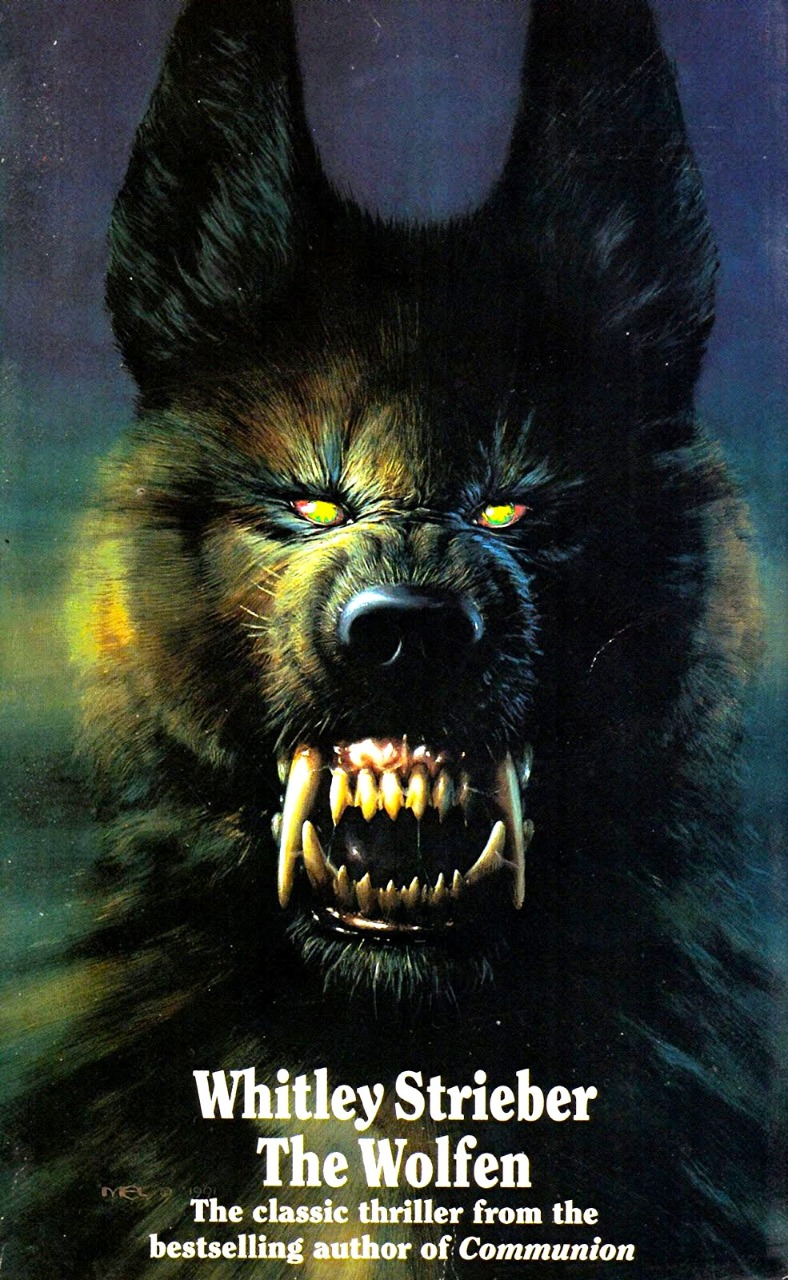
Fictional icons such as aliens have become integrated into a parallel reality that many of us have become familiar with since our childhood. Not only gnomes and trolls live and thrive there, but also creatures like Barbie and the Mario brothers.

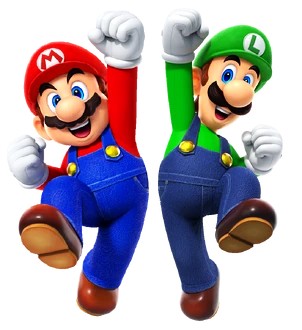
A Russian exile, Mikhail Bogin, whom I once met in New York, told me how much he admired the cowboys and gangsters created in the United States.
They are brilliant! The Americans are masters of entertainment. They turn the extermination of the Indians into an exciting story, while serious crimes make excellent gangster films. People assume they won the Vietnam War and that the Americans won World War II. They have no idea that the defeat of Nazism began in Stalingrad. What has my country been able to do with all the misery that exists there? Hardly any entertainment. No one believes our myths, not even ourselves. Who is the model worker? Stakhanov? Who can believe such a thing? No one can believe in any Udarnik, Super Worker. No Russian can imagine that he comes from the best country in the world. But the Americans think they do. They believe in their Constitution, their Superman and their Donald Duck. We Russians do not believe in anything. The politicians destroyed religion and the monarchy; they never succeeded in replacing them.
Superheroes occupy a prominent place in the imaginary world of icons. The archetype is Superman, who conquered the world before Marvel's multifaceted heroes and heroines appeared.
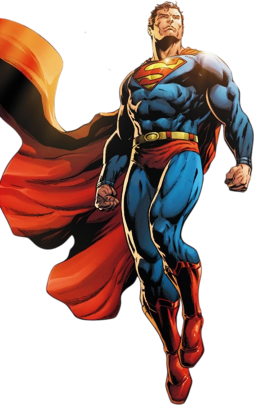
The Superman was created in 1938 by childhood friends Jerry Siegel and Joe Shuster. They worked closely together, with Siegel as author and Shuster as illustrator. They were inspired by movies and cartoons.
Superman's dual nature was born out of Zorro's and the Red Carnation's concealment of their true existence. Superman's cosmic origins were inspired by the numerous science fiction magazines of the time. His outfit was taken from movie heroes' capes and often tight-fitting outfits. Characters portrayed by Douglas Fairbanks in his roles as Robin Hood, D'Artagnan, or The Black Pirate, but inspiration also came from the leotards of professional wrestlers. Superman's visage was taken from Johnny Weismüller's Tarzan and the badge that Superman wore on his chest had been inspired by the movie heroes' history-inspired emblems. The more everyday Clark Kent borrowed his character and appearance from film comedian Harold Lloyd.
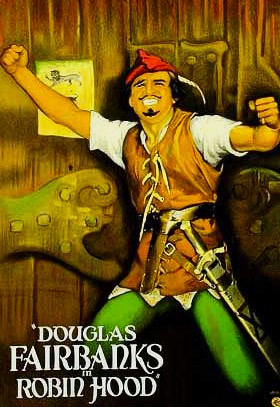
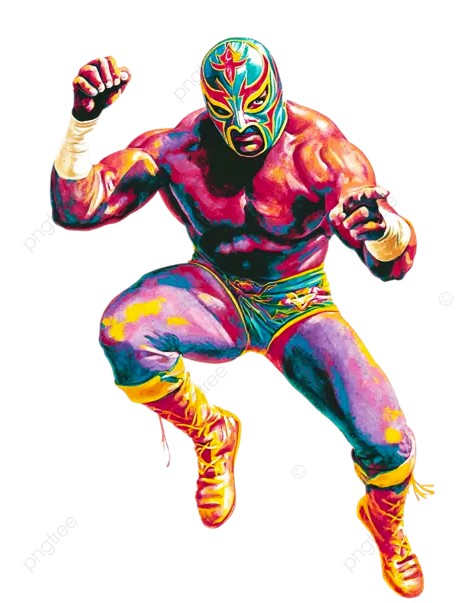
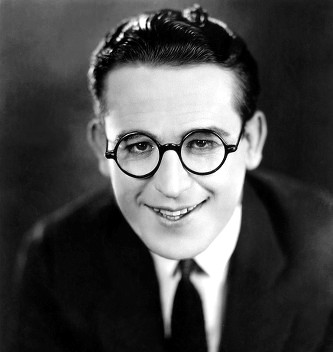
Shuster was a wrestling and boxing enthusiast and Italians like to claim that the original idea of a Superman came from Primo Carnera, the Walking Mountain, Italy's first heavyweight champion, who due to his impressive physique and height came to appear in a number of films and advertising campaigns.
Recently I saw in Rome a portrait of Carnera made by the versatile futurist artist Giacomo Balla. Through its realism and poster-like execution, the painting gave the impression of being an early example of pop art. Balla had obtained a specific effect by covering his painting with metal chicken wire.
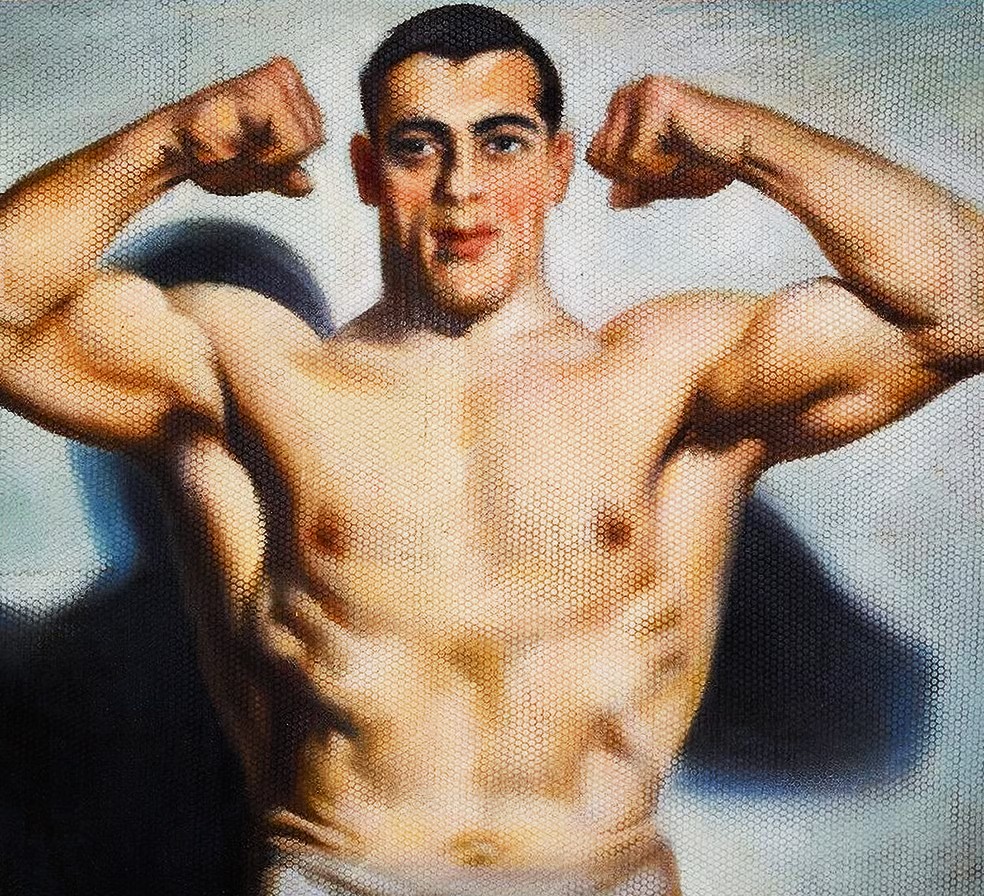
An Italian graphic novel by Davide Toffolo tells the story of Carnera's life and includes an episode in which Jerome Siegel happens to see the huge Carnera get into a car and, like other observers, he becomes deeply moved by the sight of this giant, yet kind and polite man.
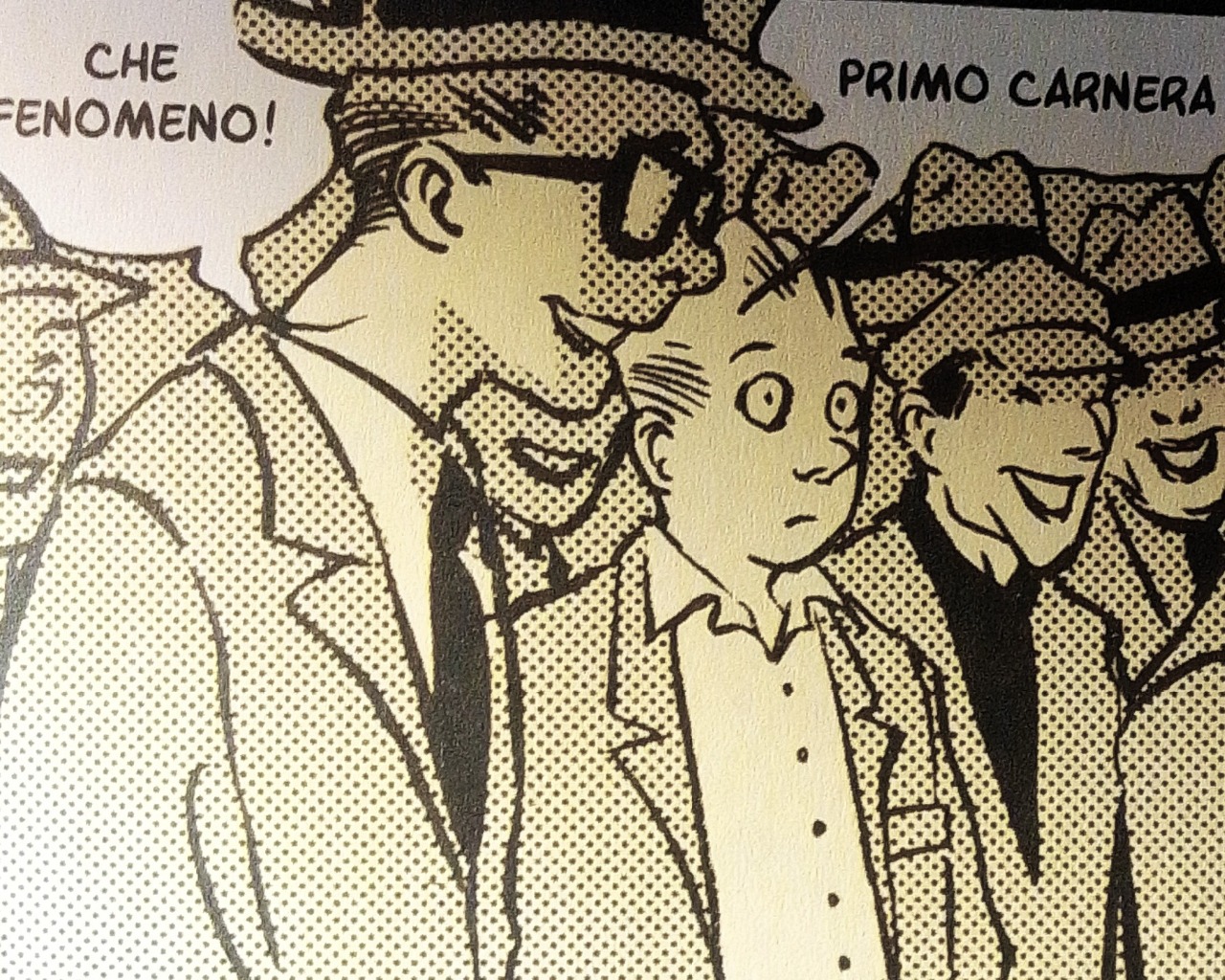
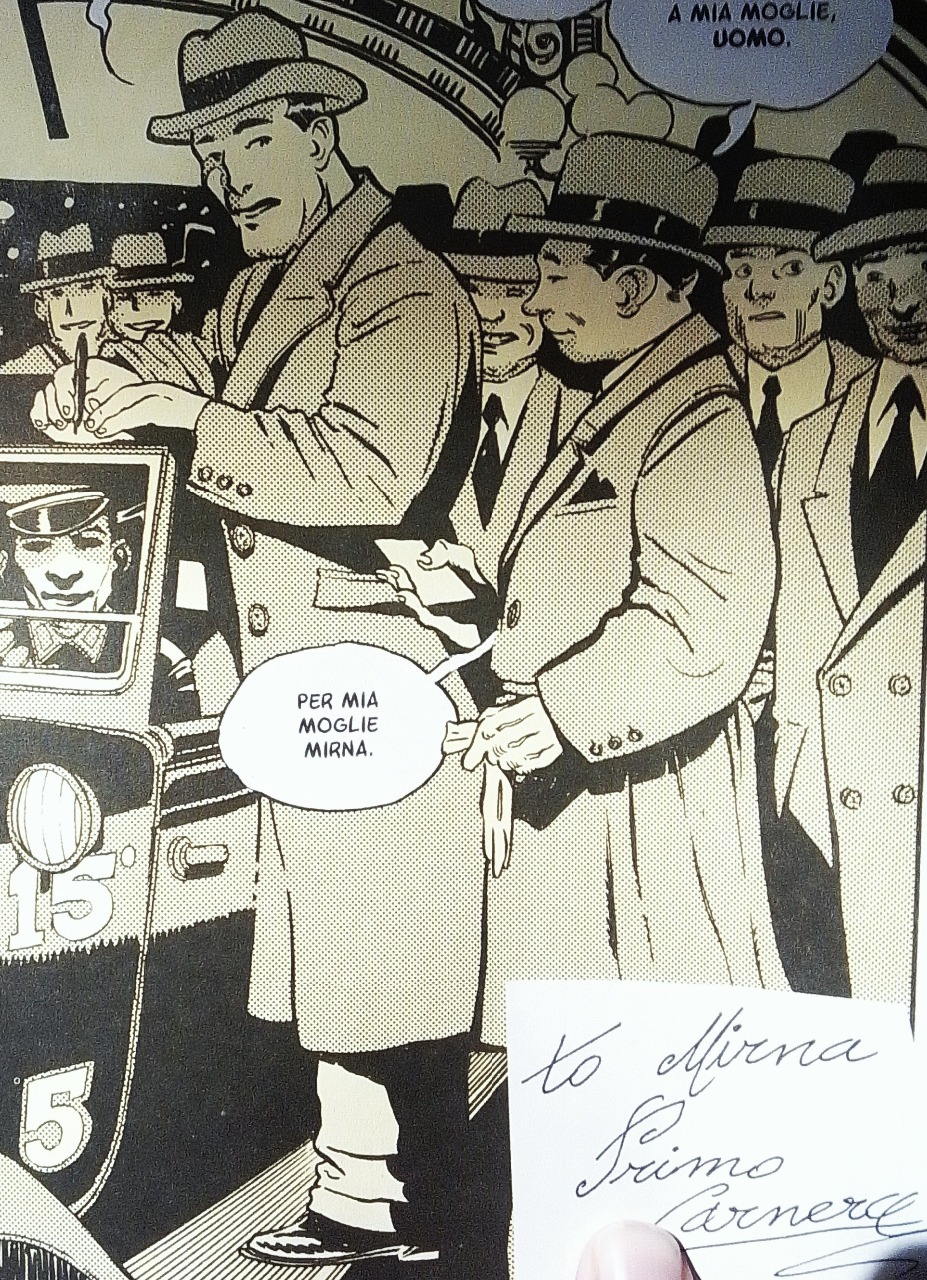
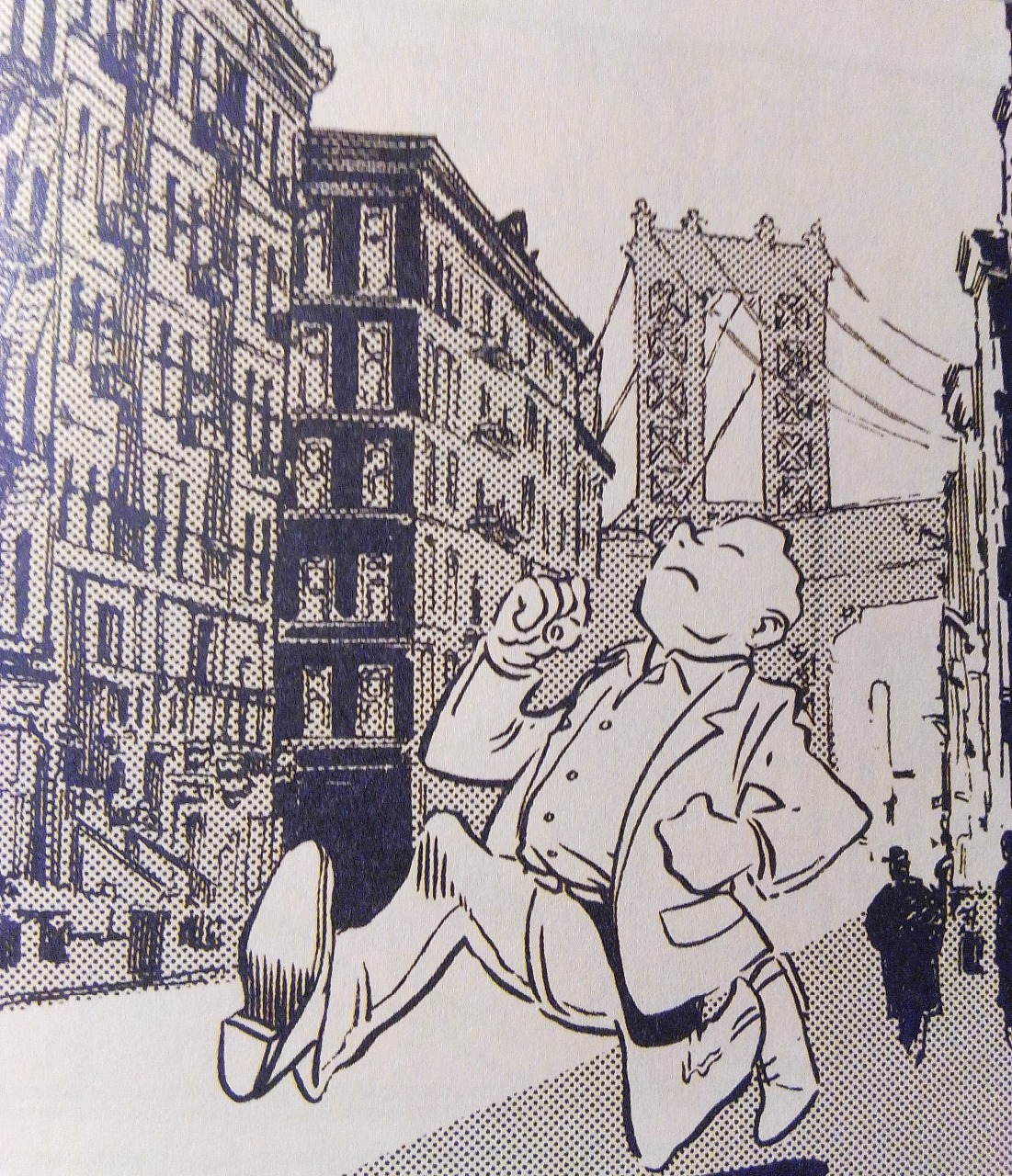
Siegel rushes back to the studio he shares with Shuster, and soon they've come up with the perfect basic idea for their creation – Superman.
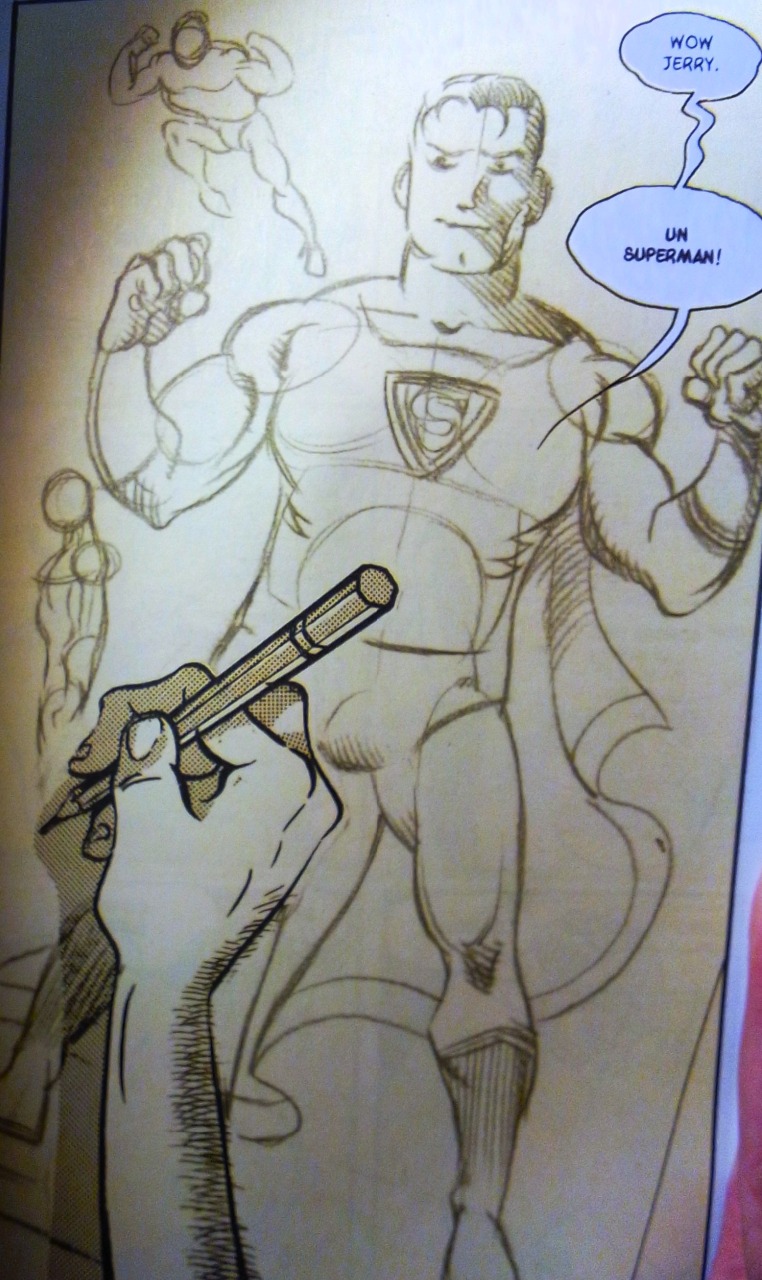
During my childhood I read with great interest several comics about various superheroes, but the world that gripped me the most was probably Donald Duck's and especially Carl Banks' depictions his adventures together with his nephews Huey, Dewey, and Louie, Scrooge McDuck, Magica De Spell, the Beagle Boys, Gladstone Gander, Daisy Duck, the Junior Woodchucks, and Gyro Gearloos, all of them characters invented by Banks.
I can still remember several of my favourite adventures which took place in exotic places; searches for the Fountain of Youth, how the ducks ended up in the land of square eggs, or on a frozen Viking ship. There were zombies, harpies and other fascinating figures, everything that could excite an easily impressed kid like me.

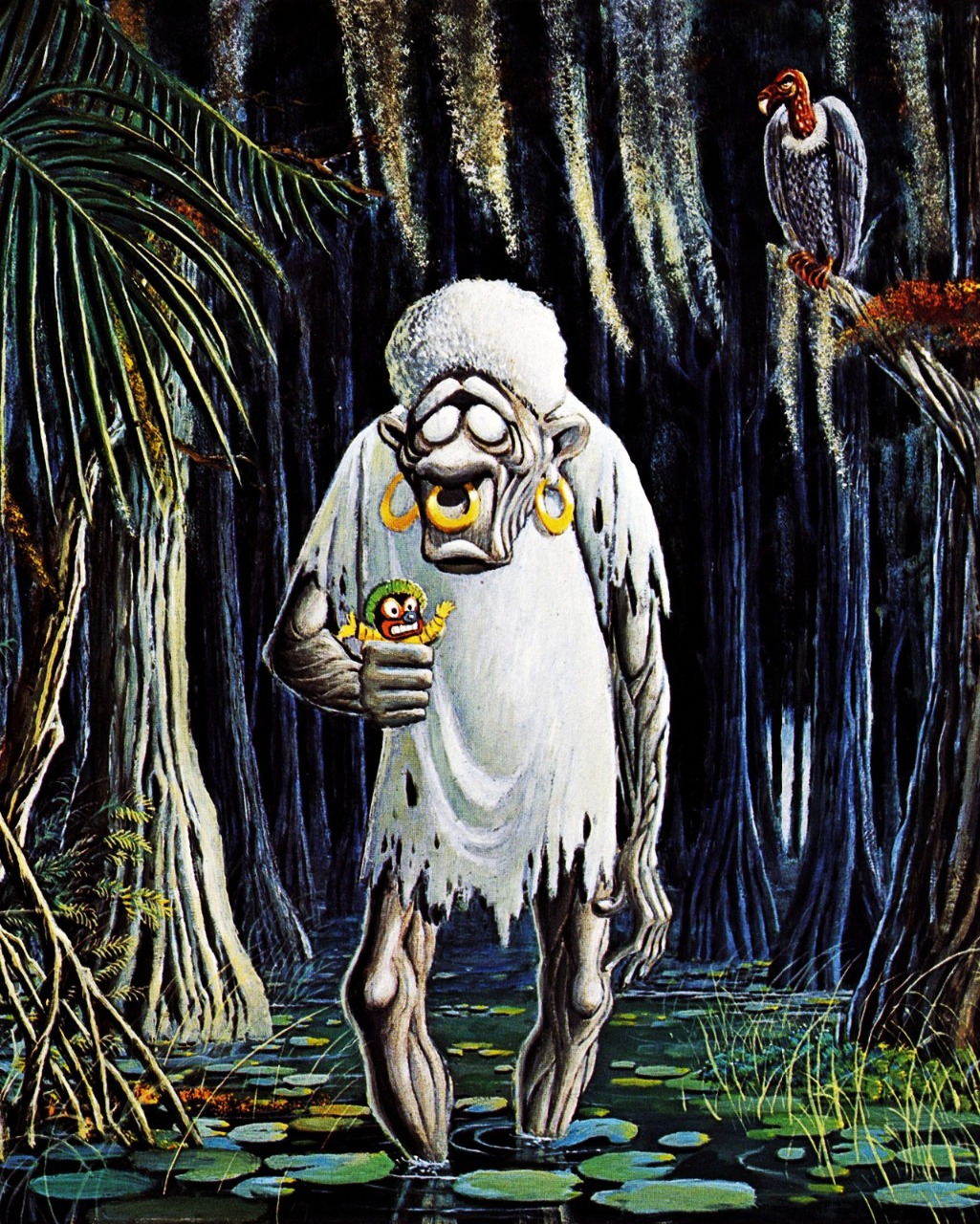
I remember how I enjoyed all this and how the matinees' appearance of Donald´s face told the childish audience that there would now be a cartoon feature, triggering a boisterous cheer.

The archetypal world of Disney is so appreciated and domesticated that it can be used in all kinds of contexts. Even to provide a satirical dimension to an existence that is completely different from Disney's utopian sphere. Like Charlie Christensen's cartoon about Arne Anka – a misanthropic and largely unsuccessful cultural worker, lives in Stockholm's inner city where he spends most of his time drinking with his friends Krille Cocodrile, Sigge Pigg and Micke Miserable. Constantly preoccupied with a largely frustrated pursuit of female companionship and success, the sarcastic duck airs his cynical reflections about the depressing state of the world and the hopeless misery of his present existence.
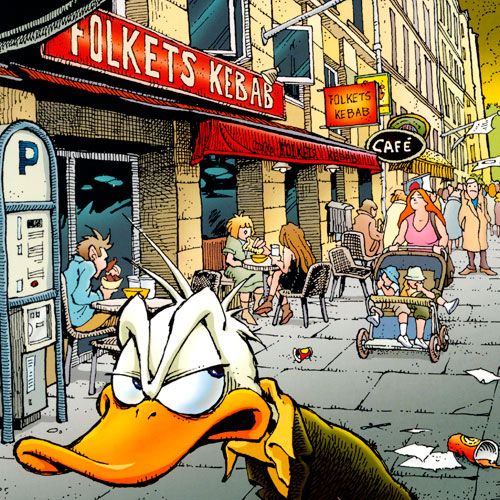
Arne's outward resemblance to Donald Duck led to lawsuits from the Disney Group, and Christensen subjected his cartoon character to a fake car accident with subsequent plastic surgery and made Arne change his name to Arne X. When the Disney Group abandoned the lawsuit, Christensen let Arne obtain a false beak and thus regain his original appearance and embittered self.

Well, it is now high time to end this far too extensive deep dive into a sea of all kinds of icons. There is much more to write and discover about this phenomenon, but I have to put a stop somewhere. Since I have used more pictures than text, I do this time not attach any list of sources, although I have of course used several of the books I find around me and much information may also be gained from the net.



.jpg)

